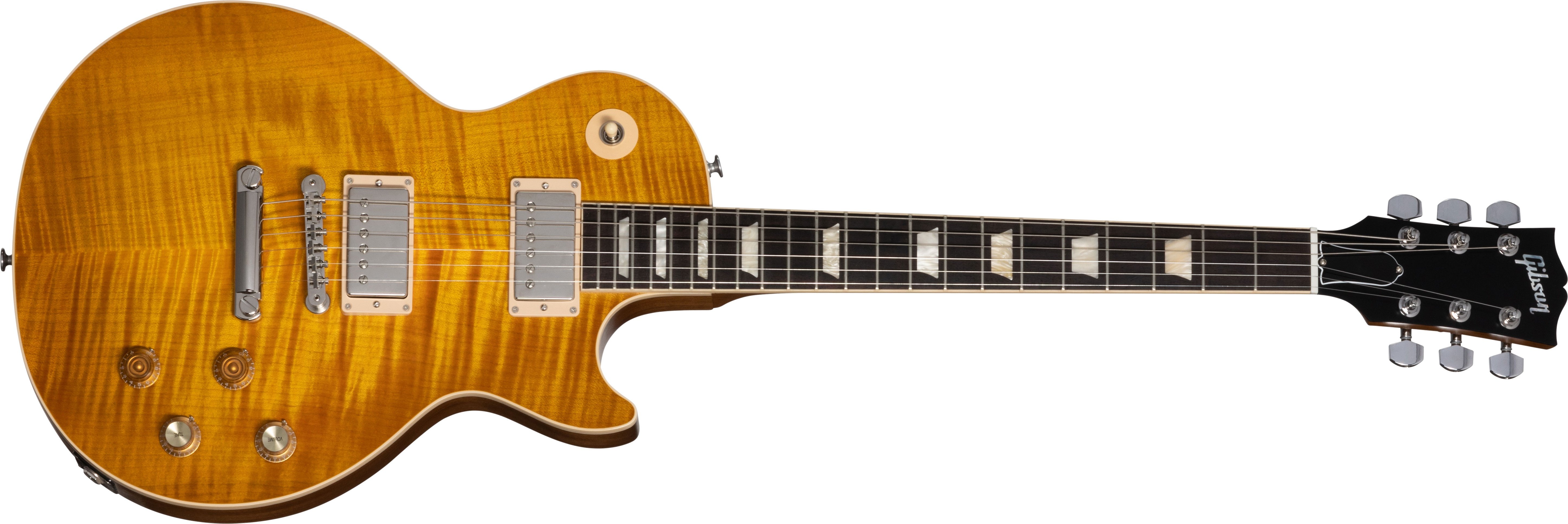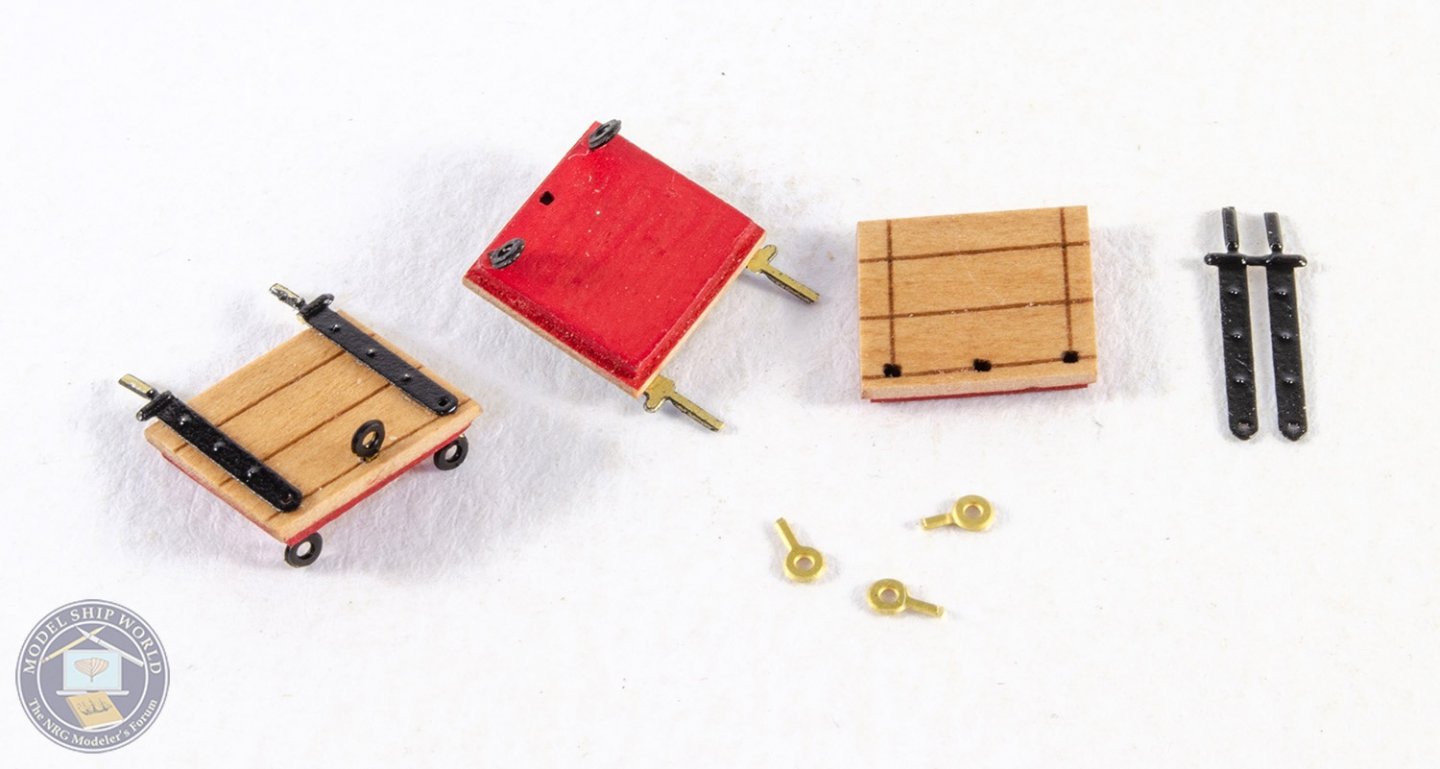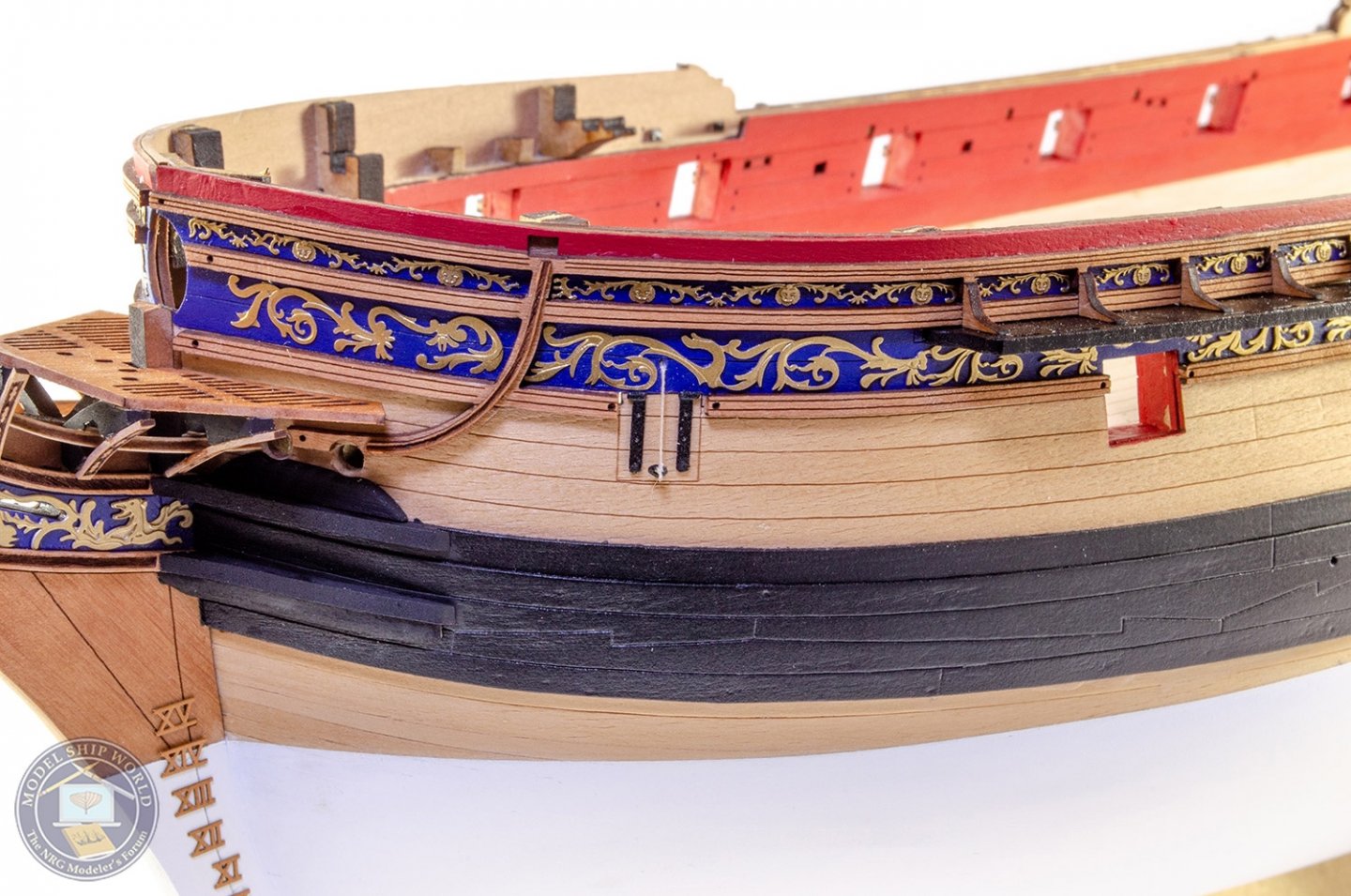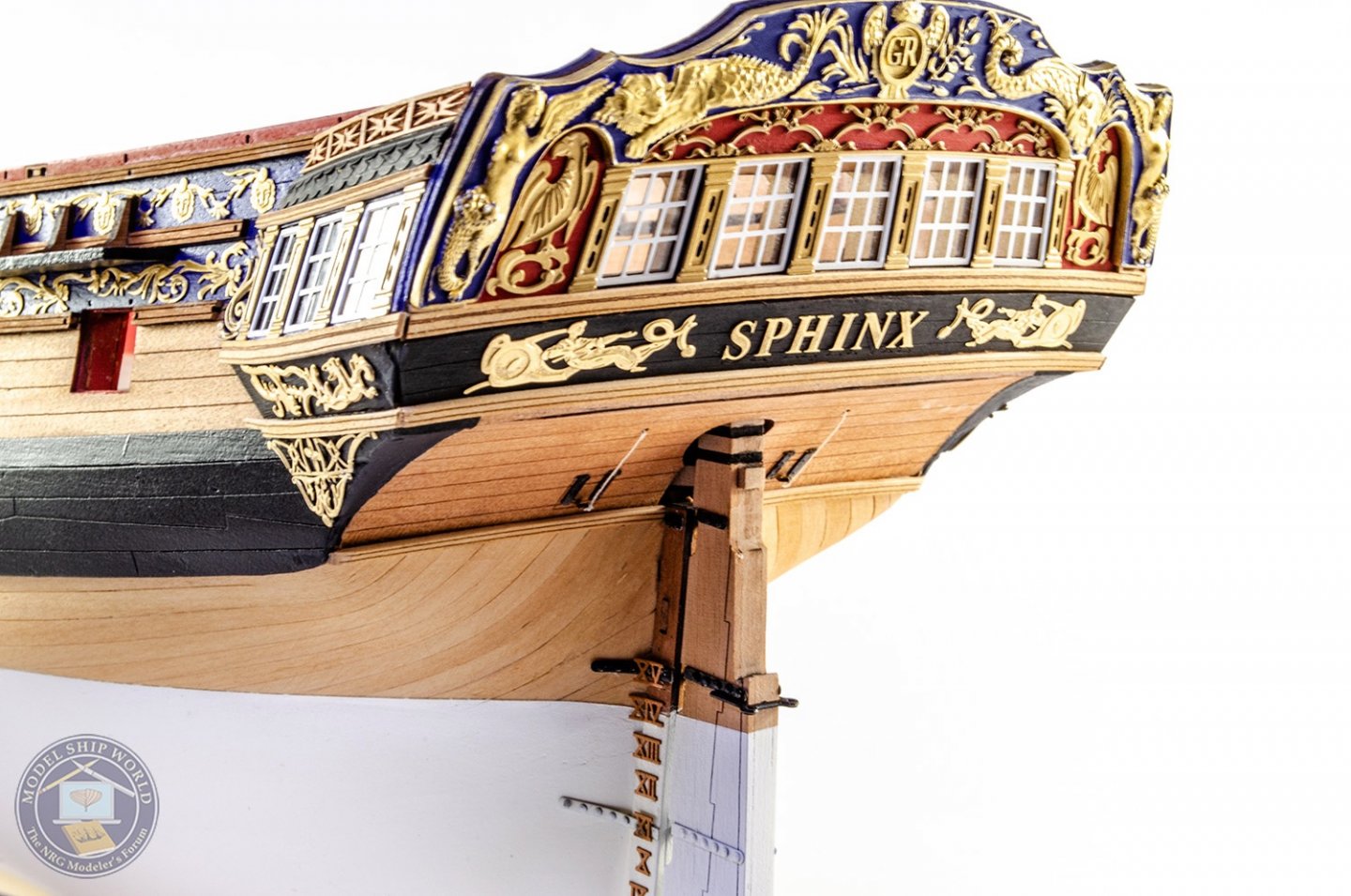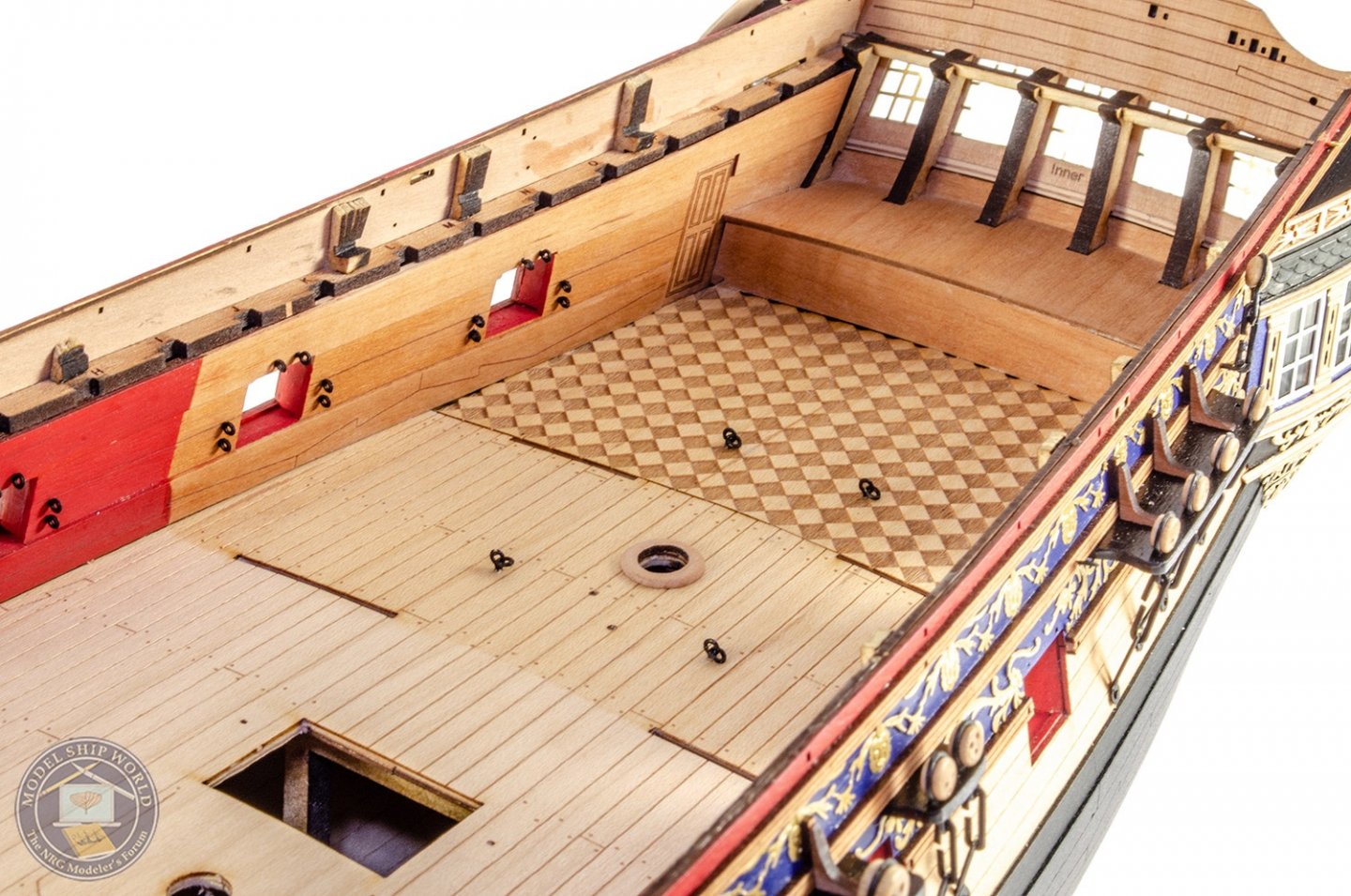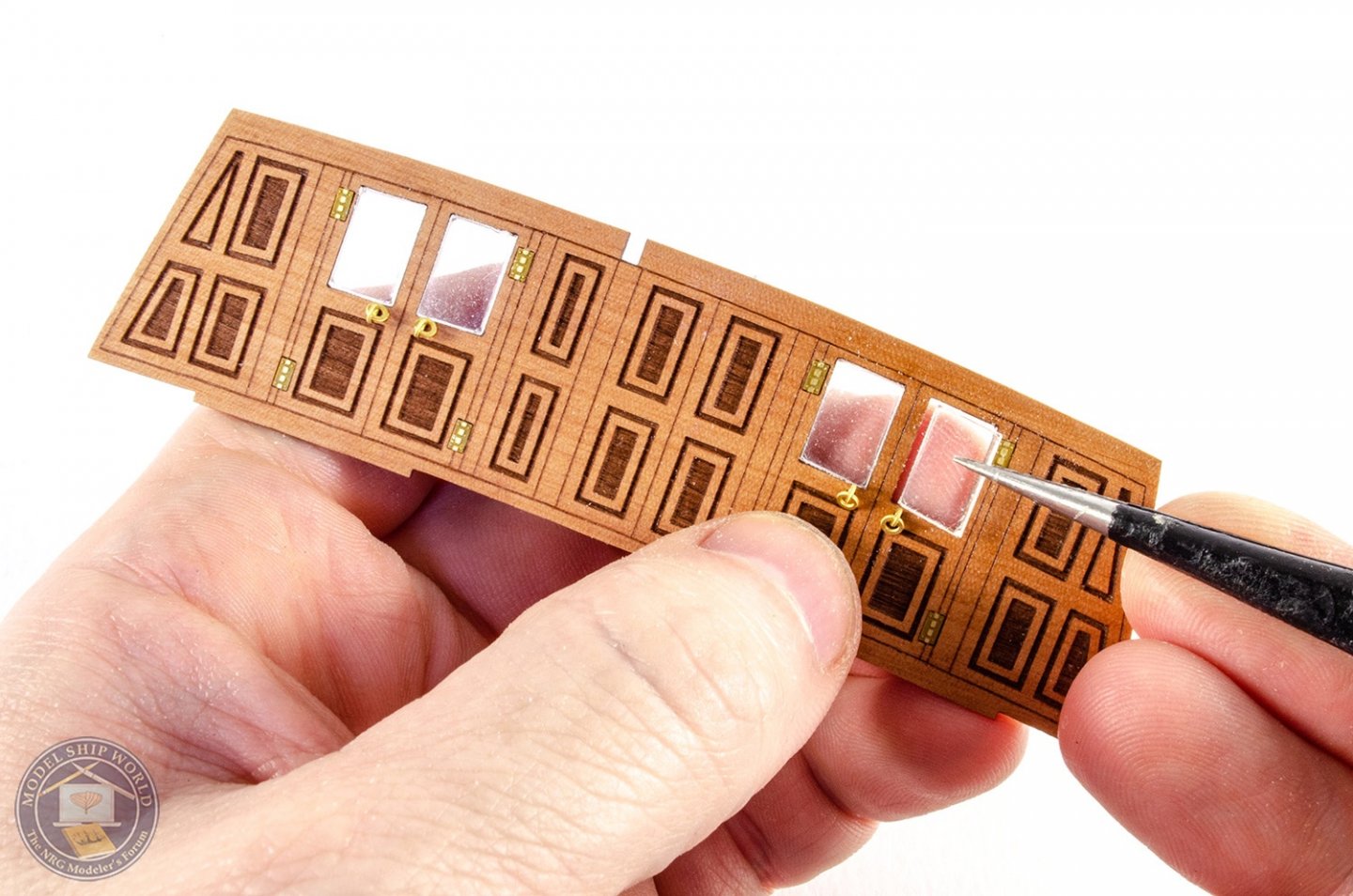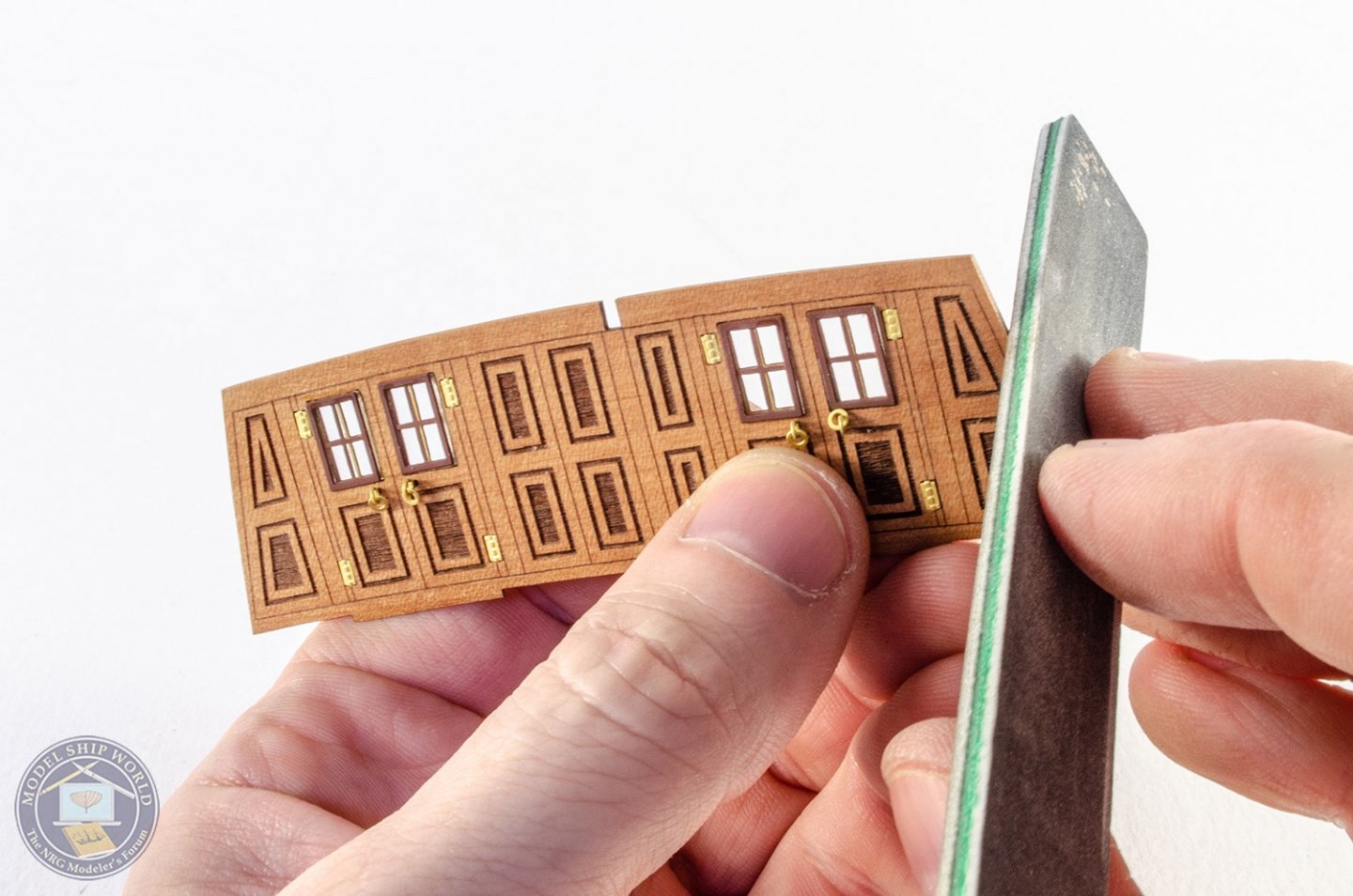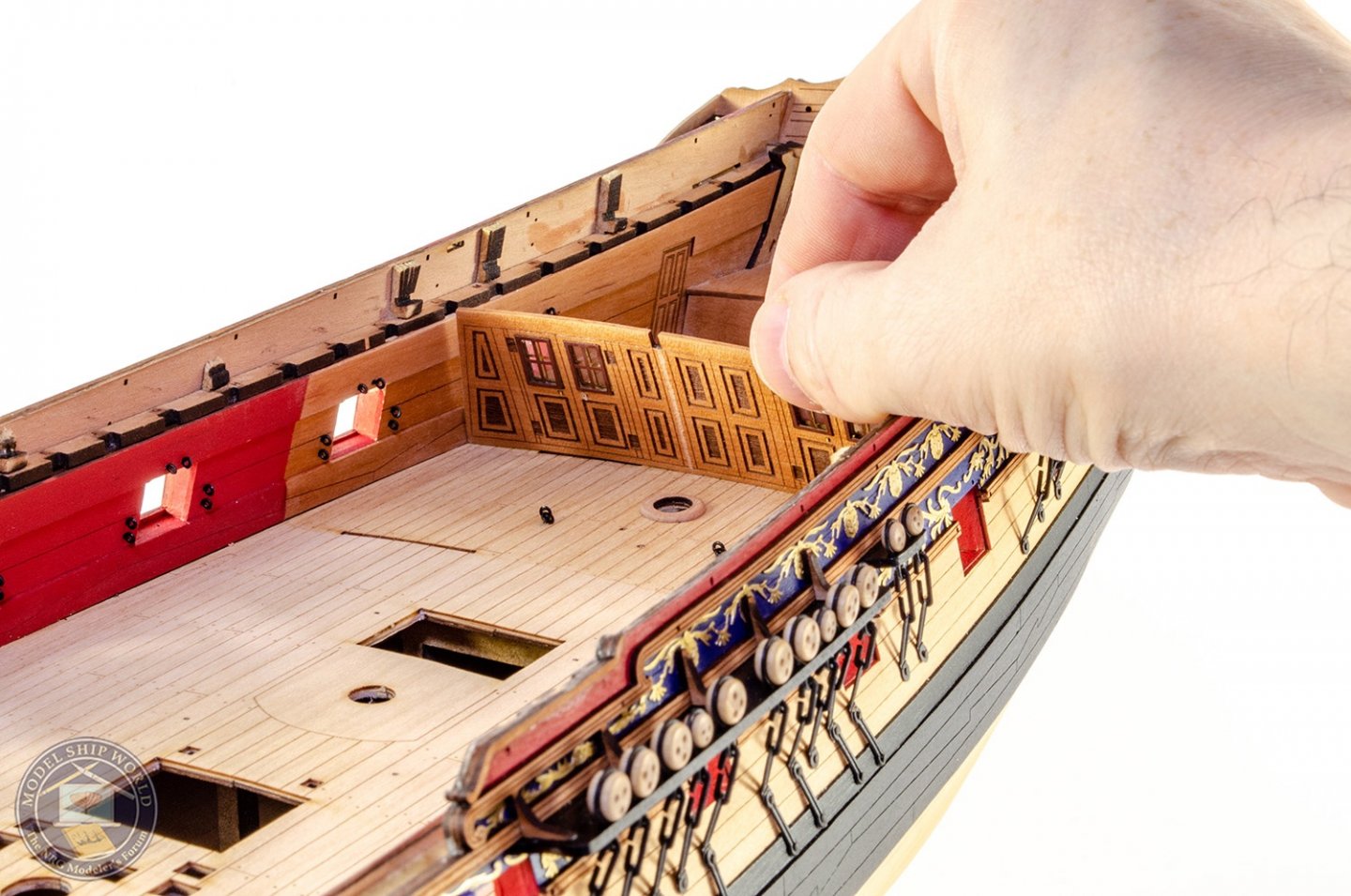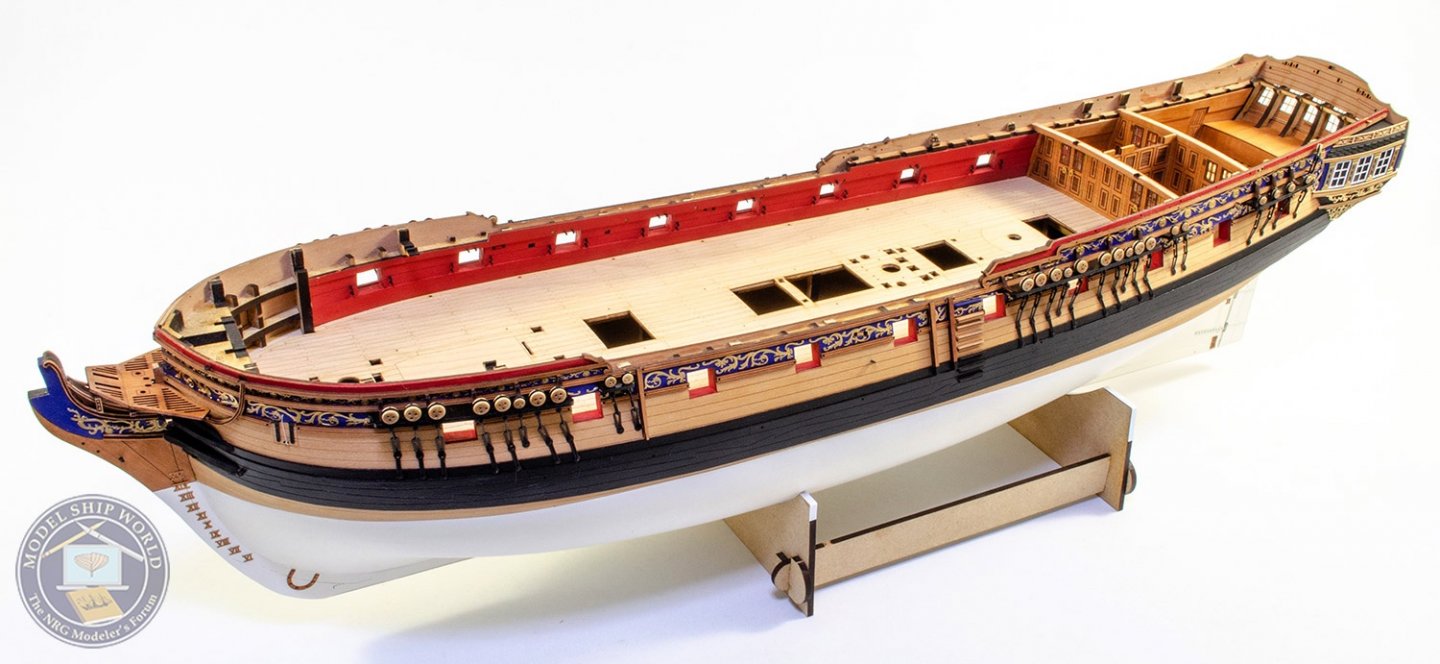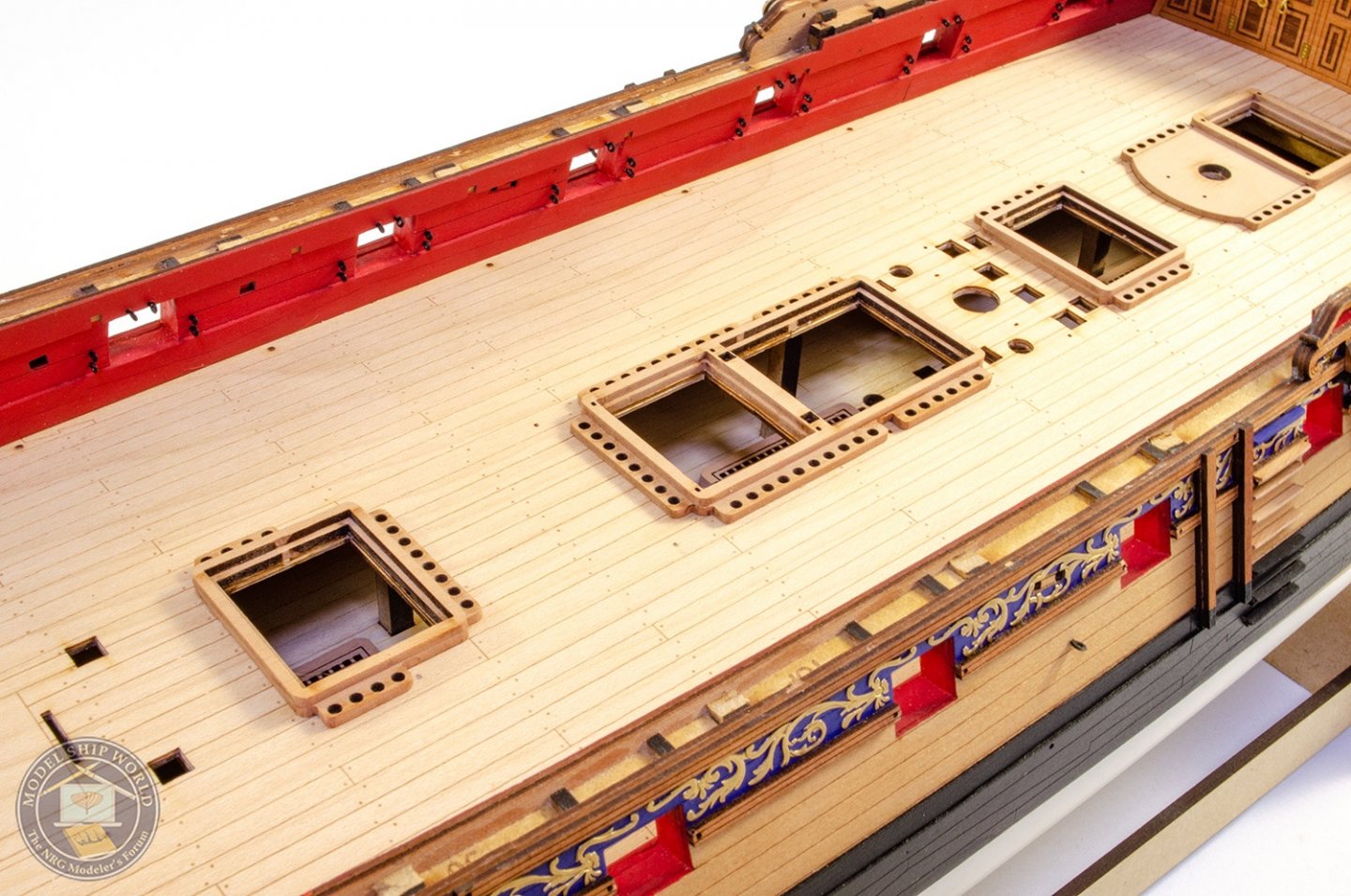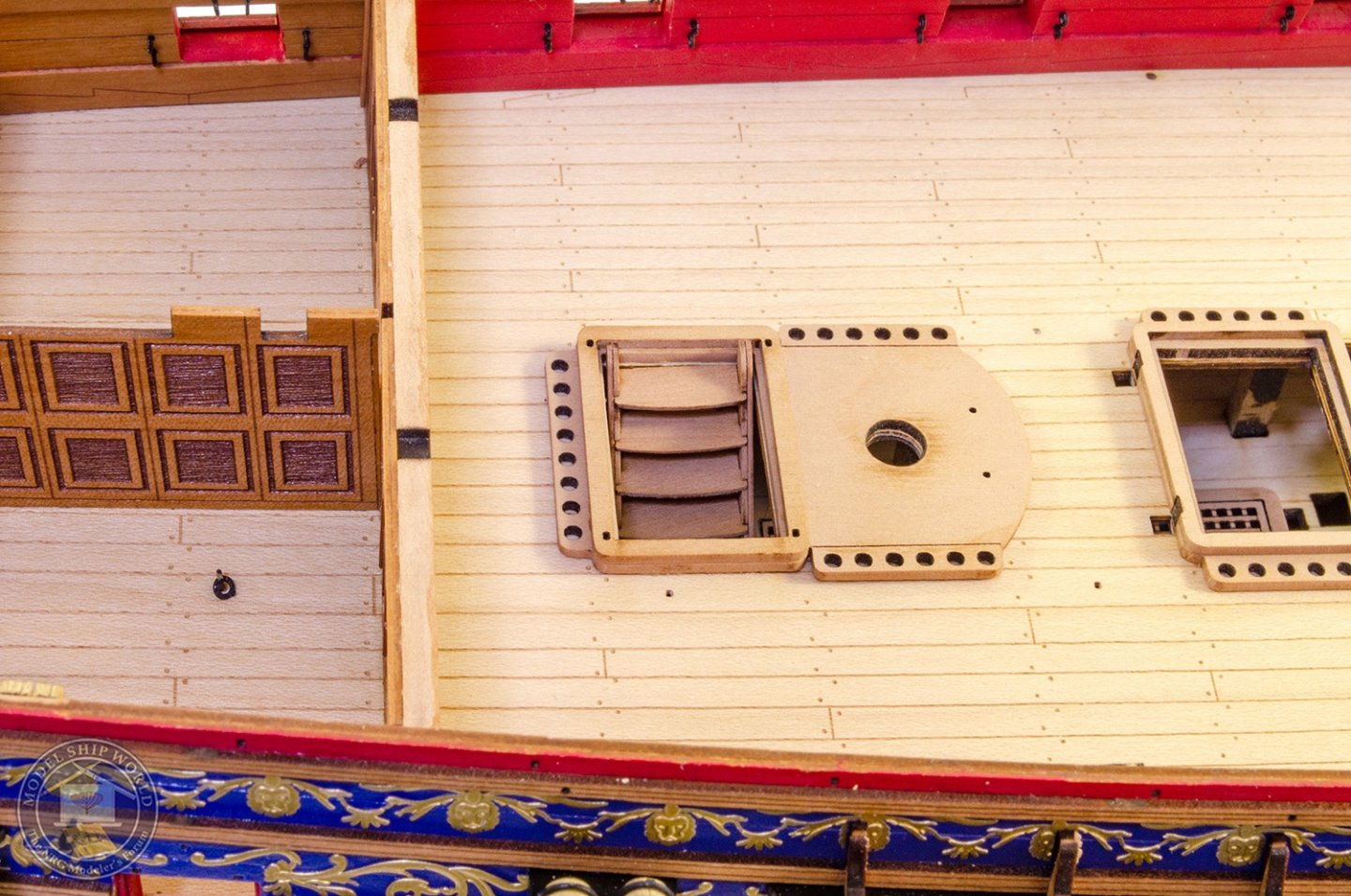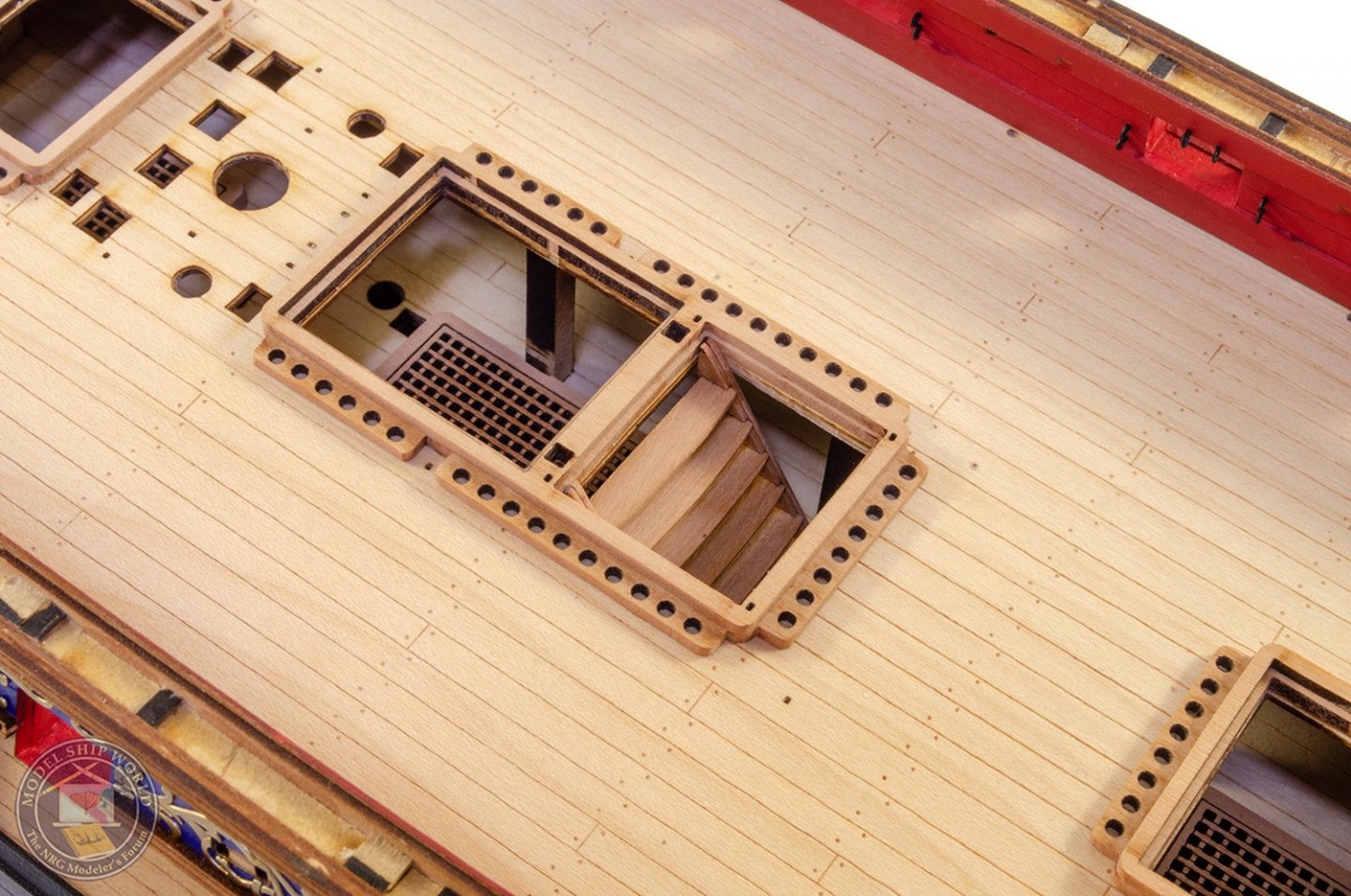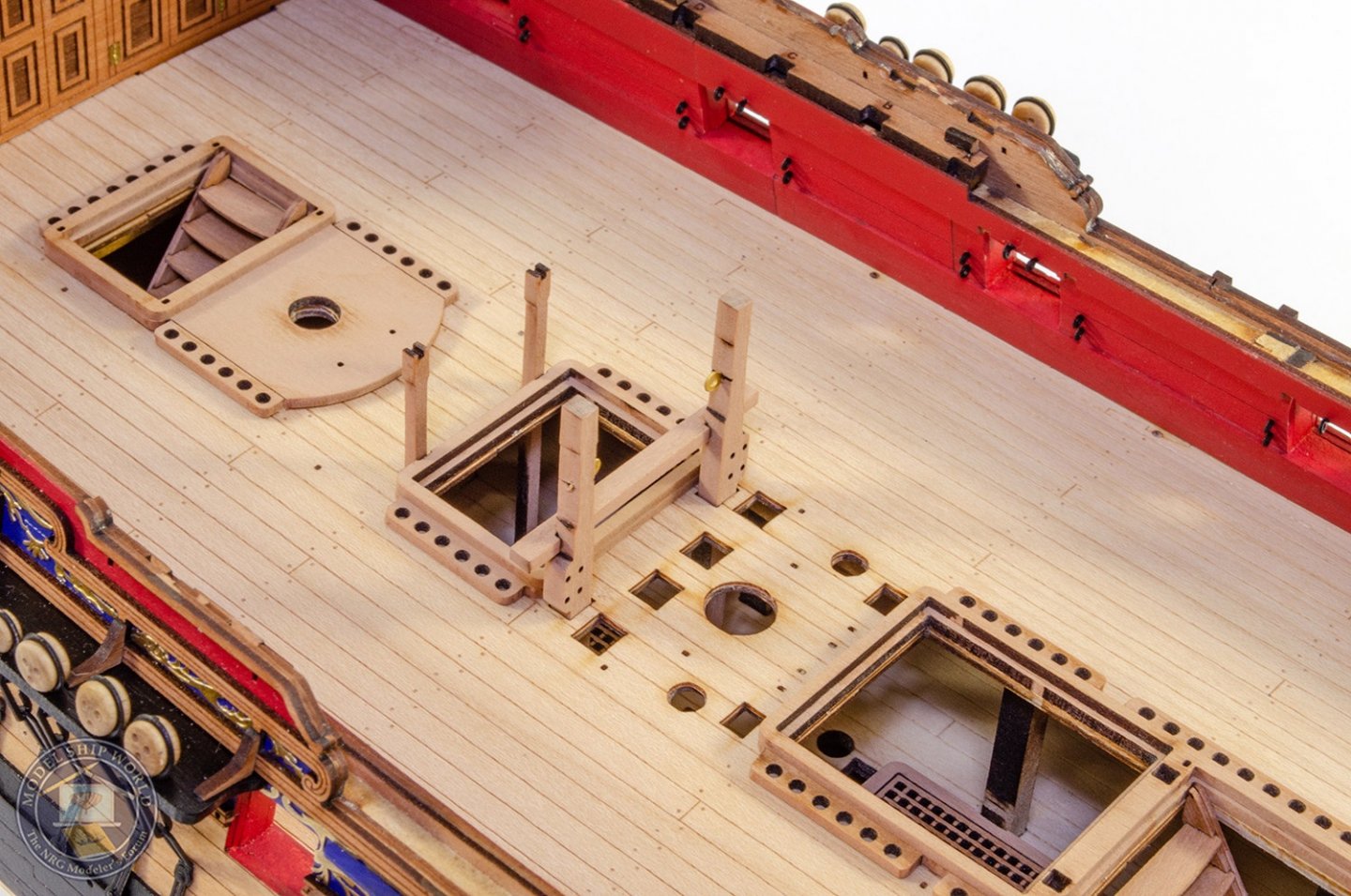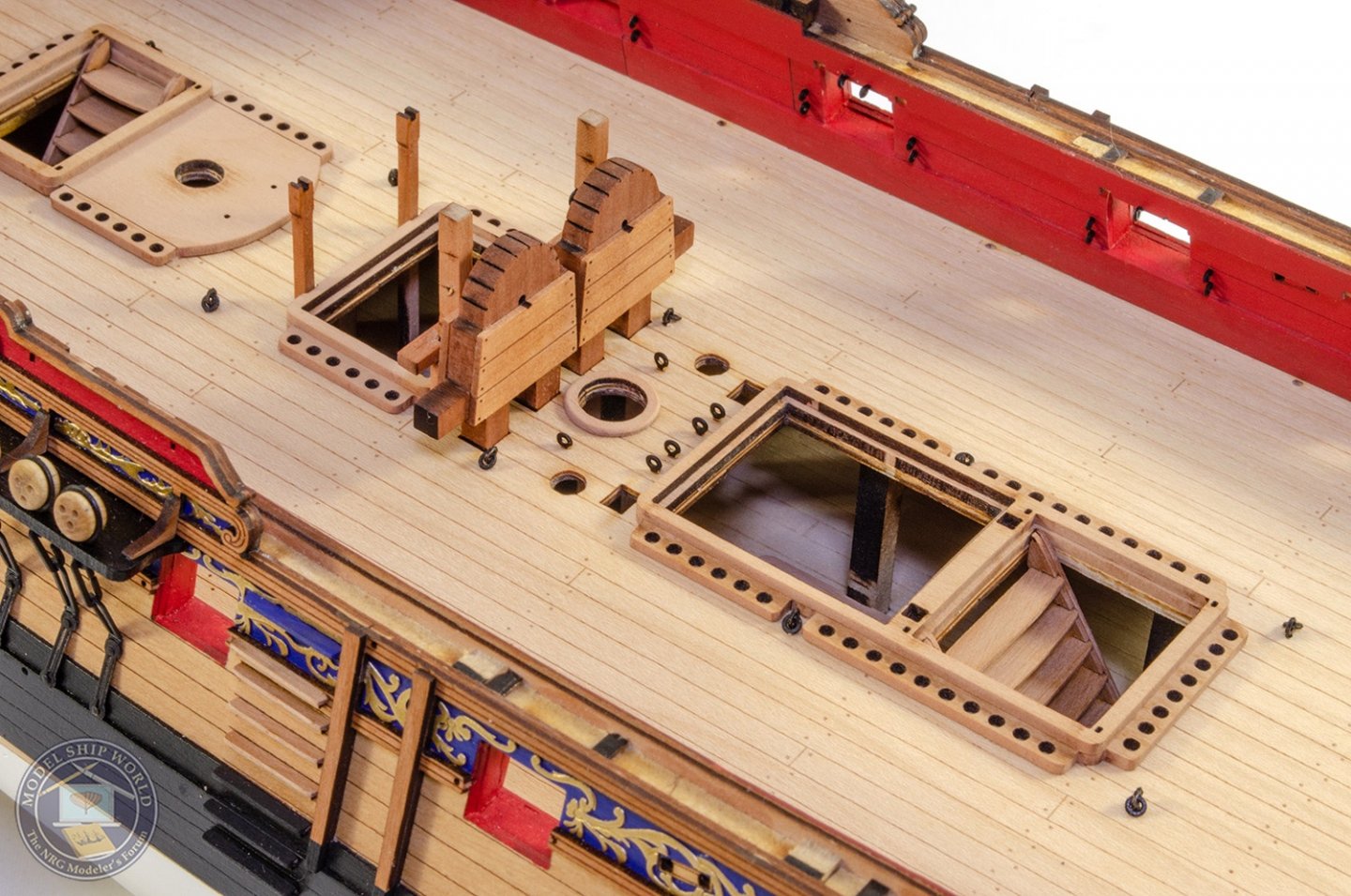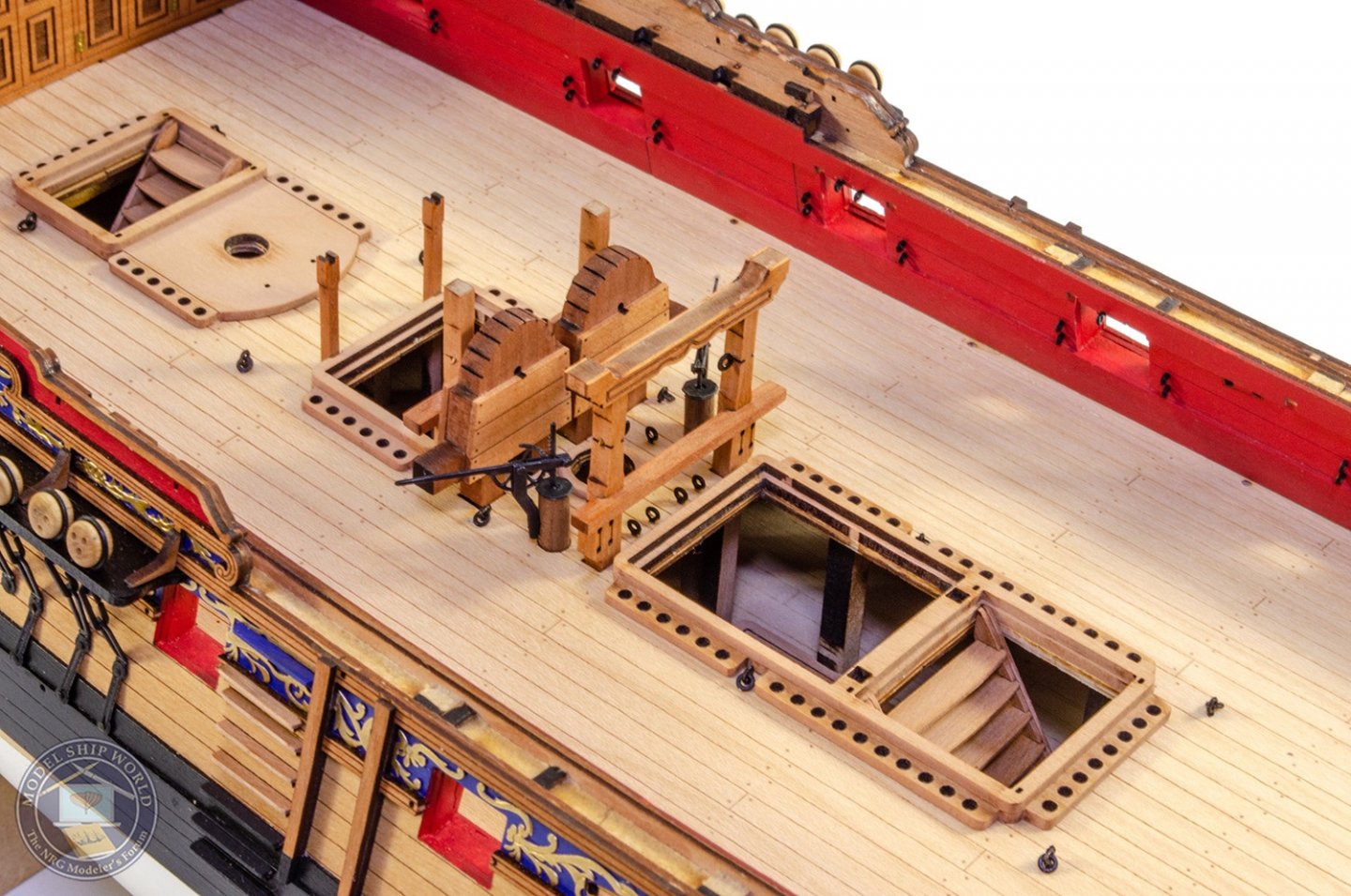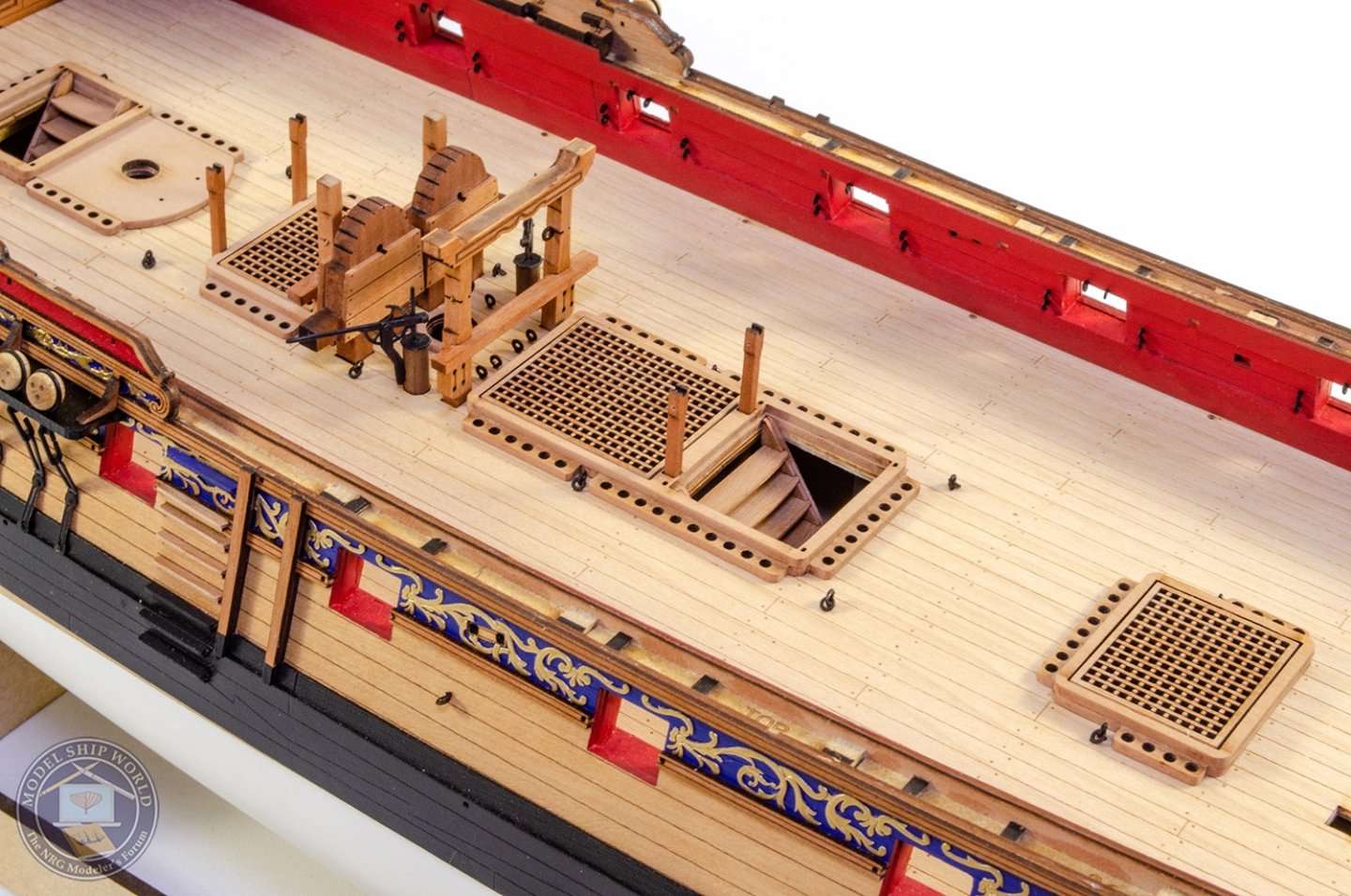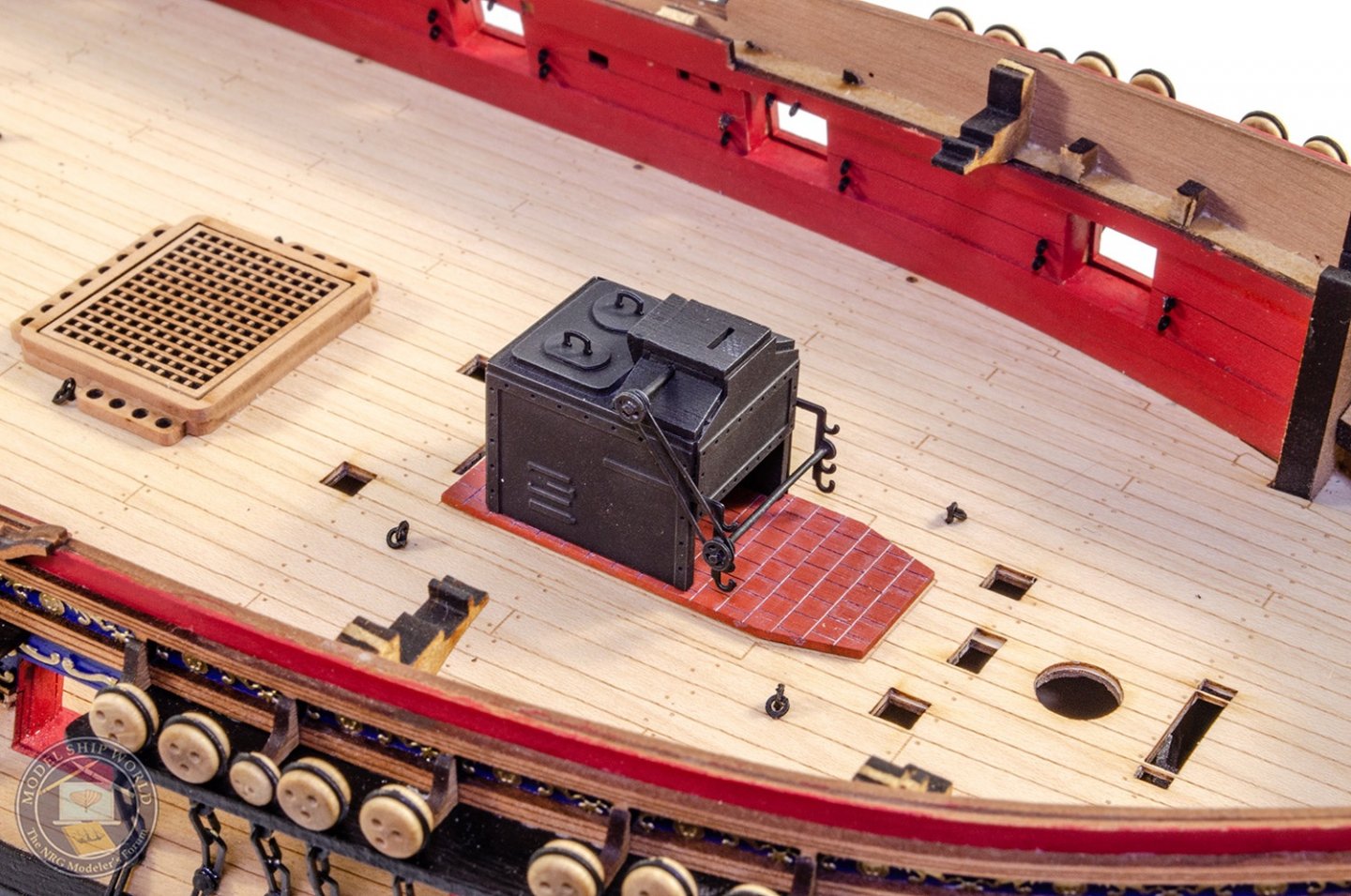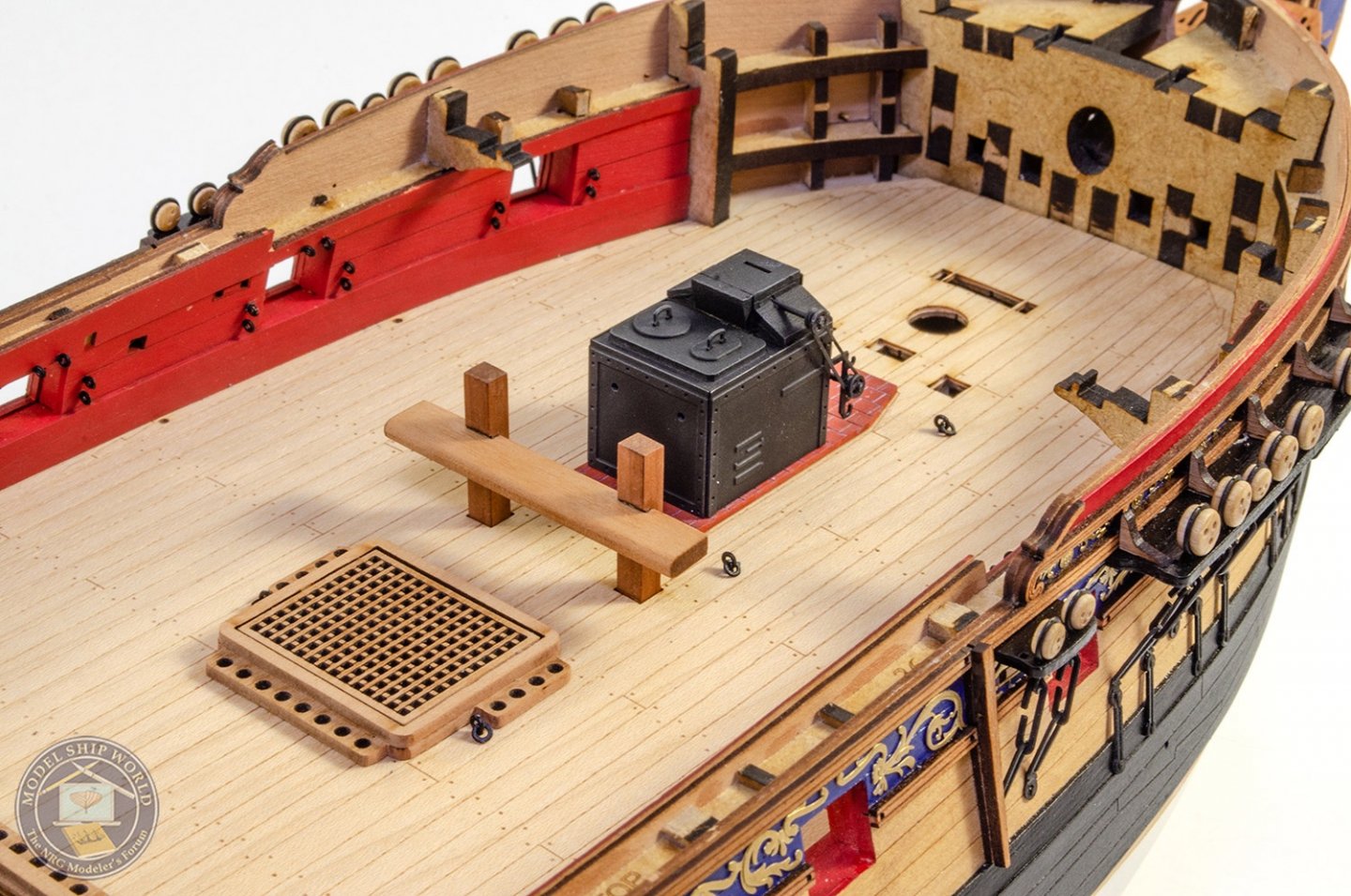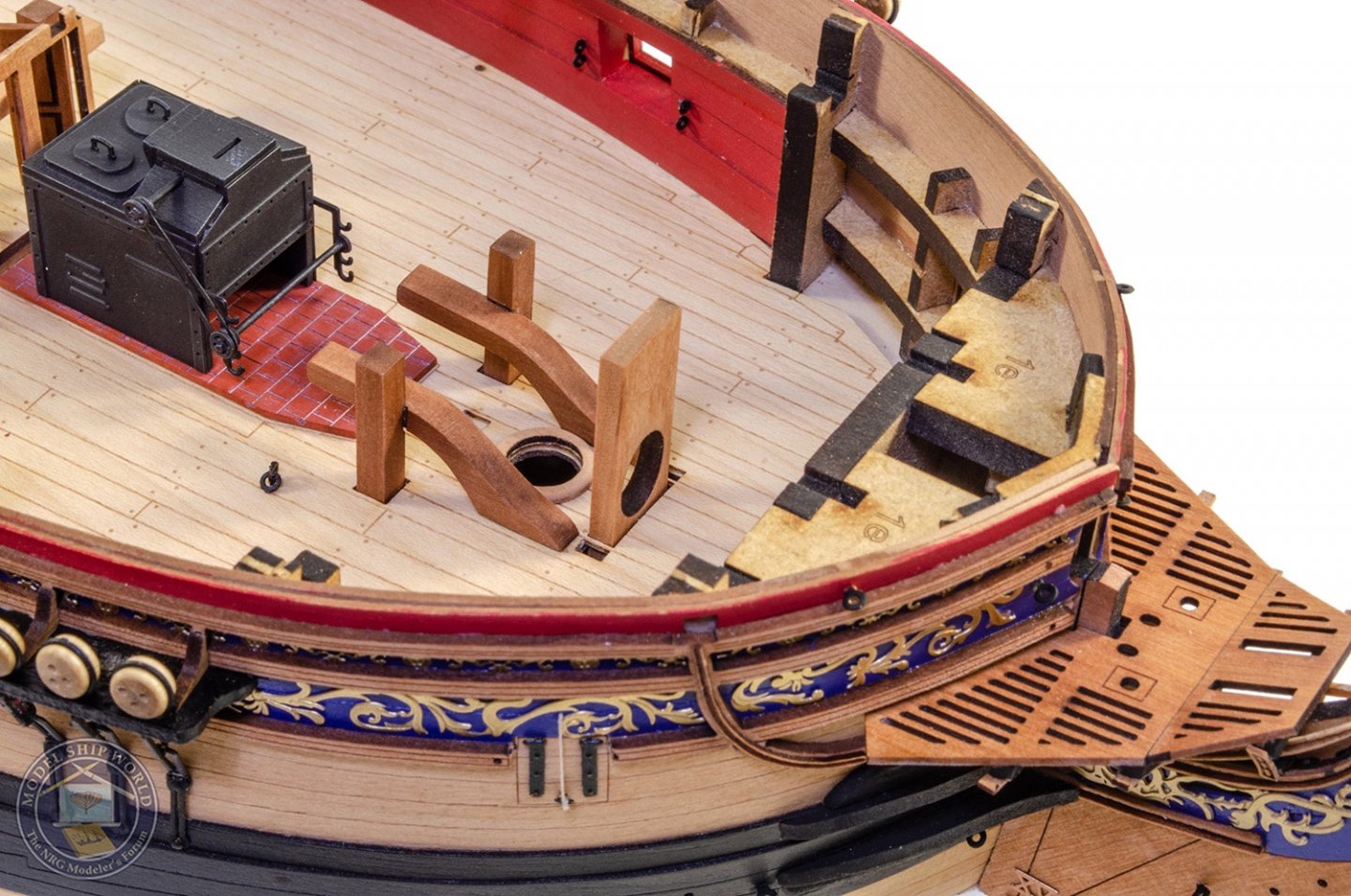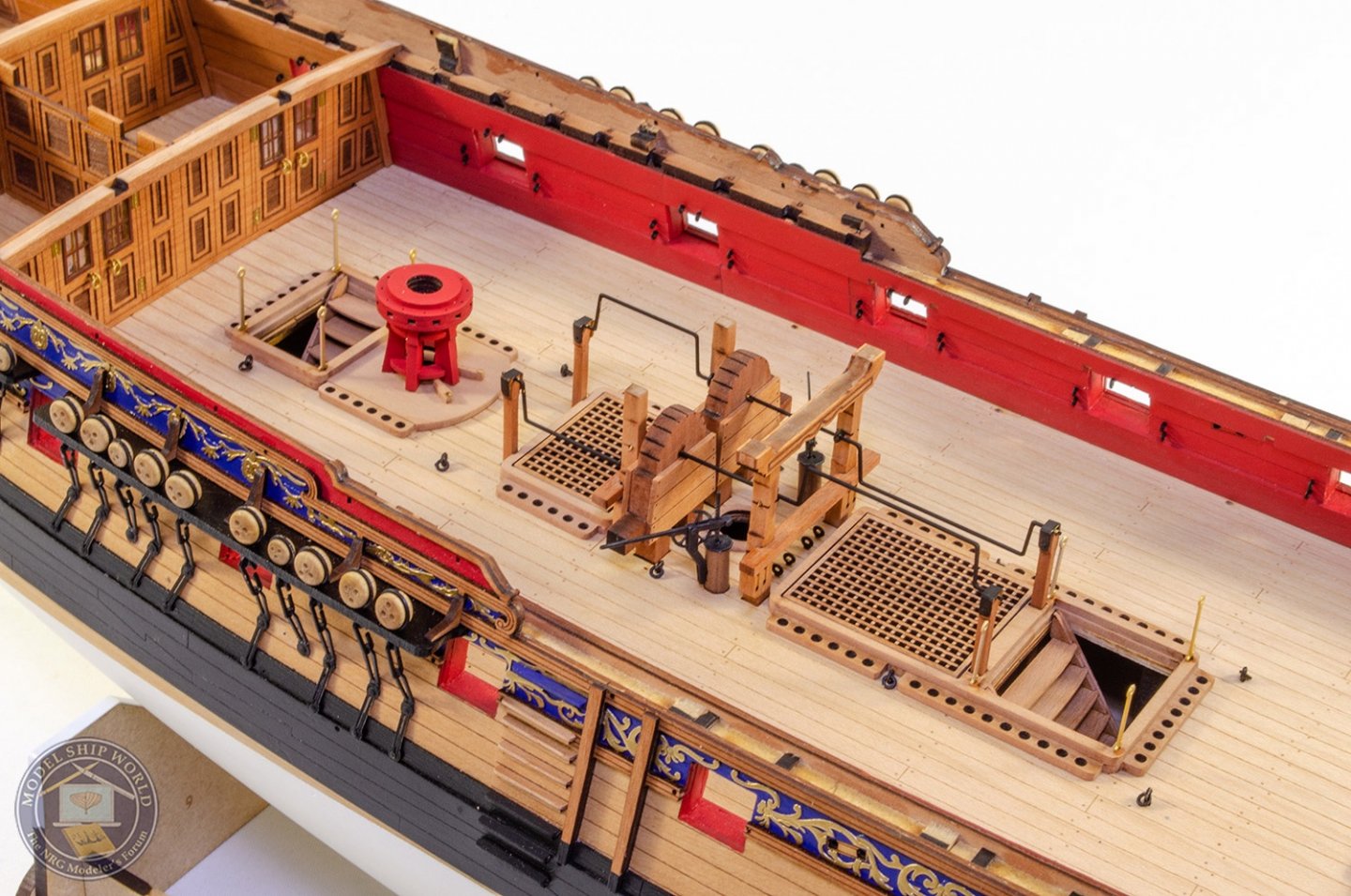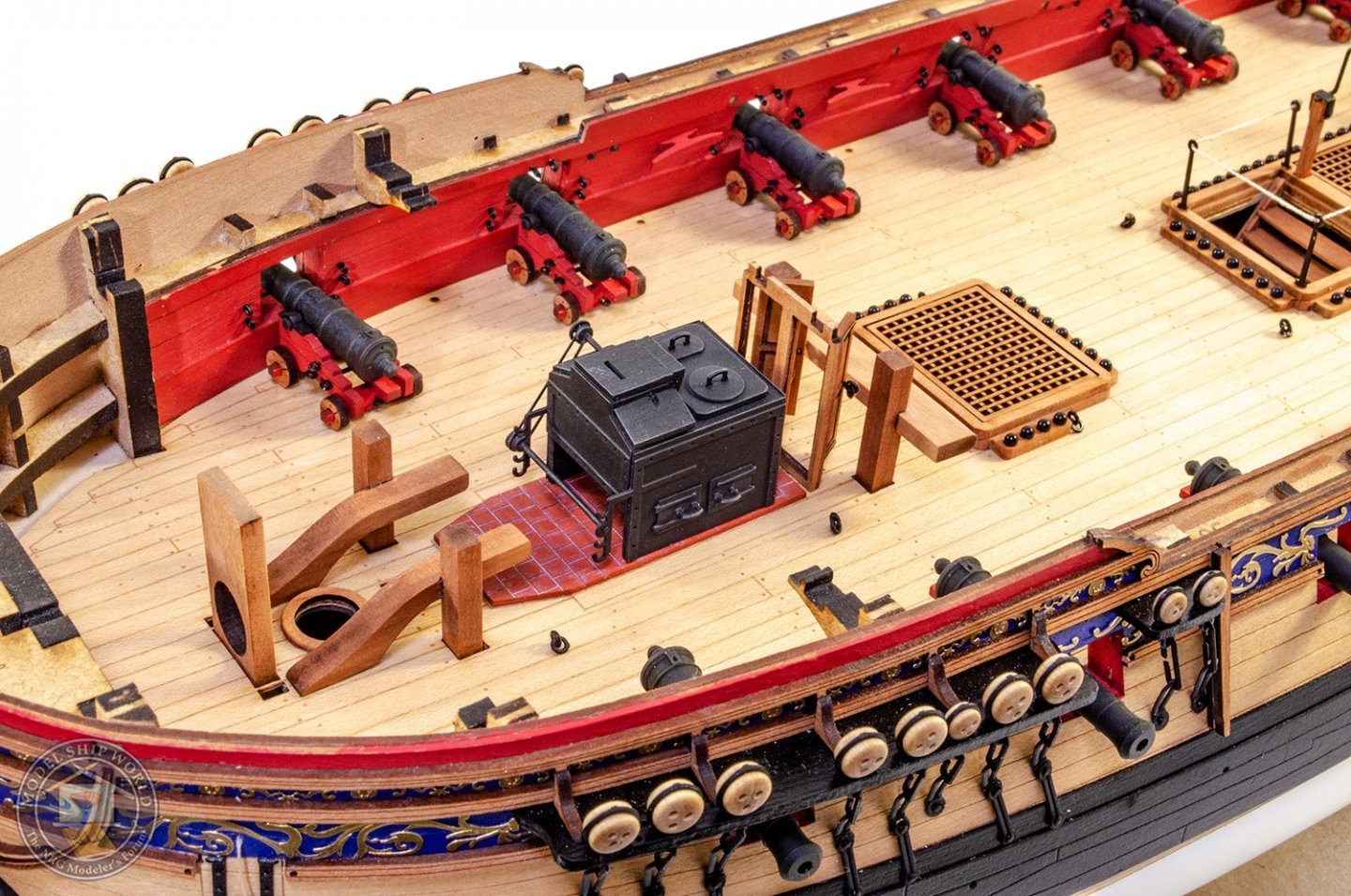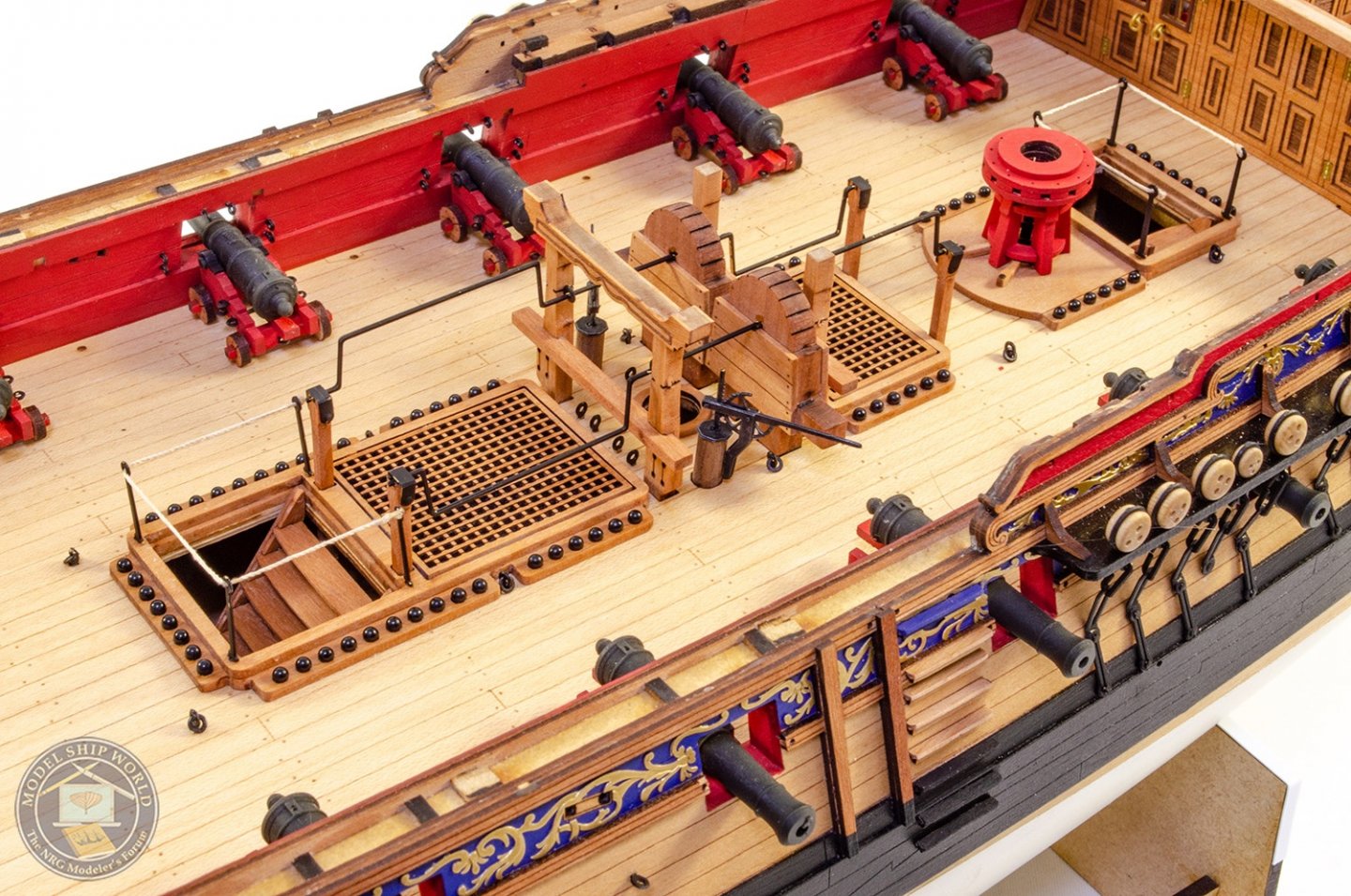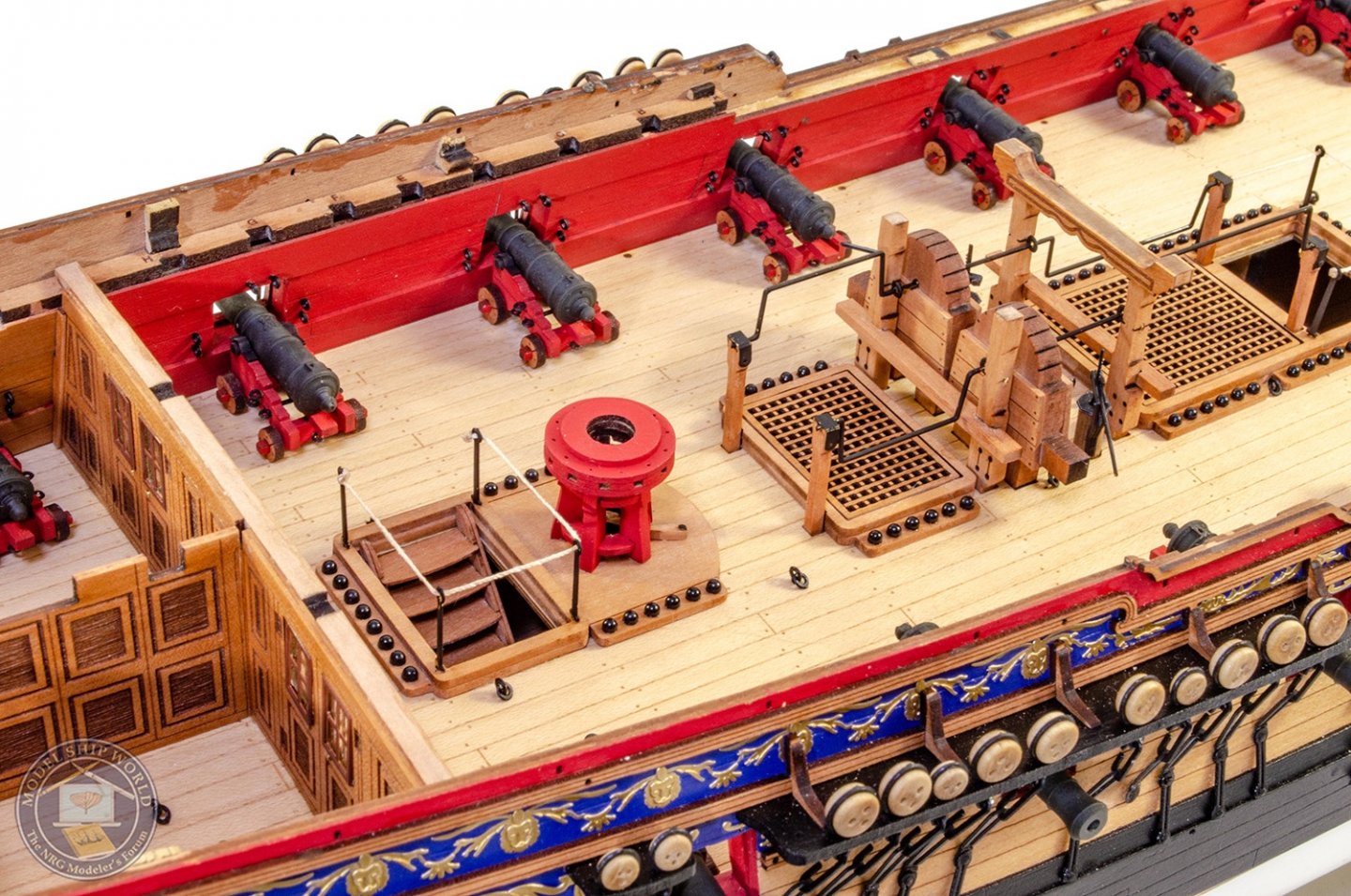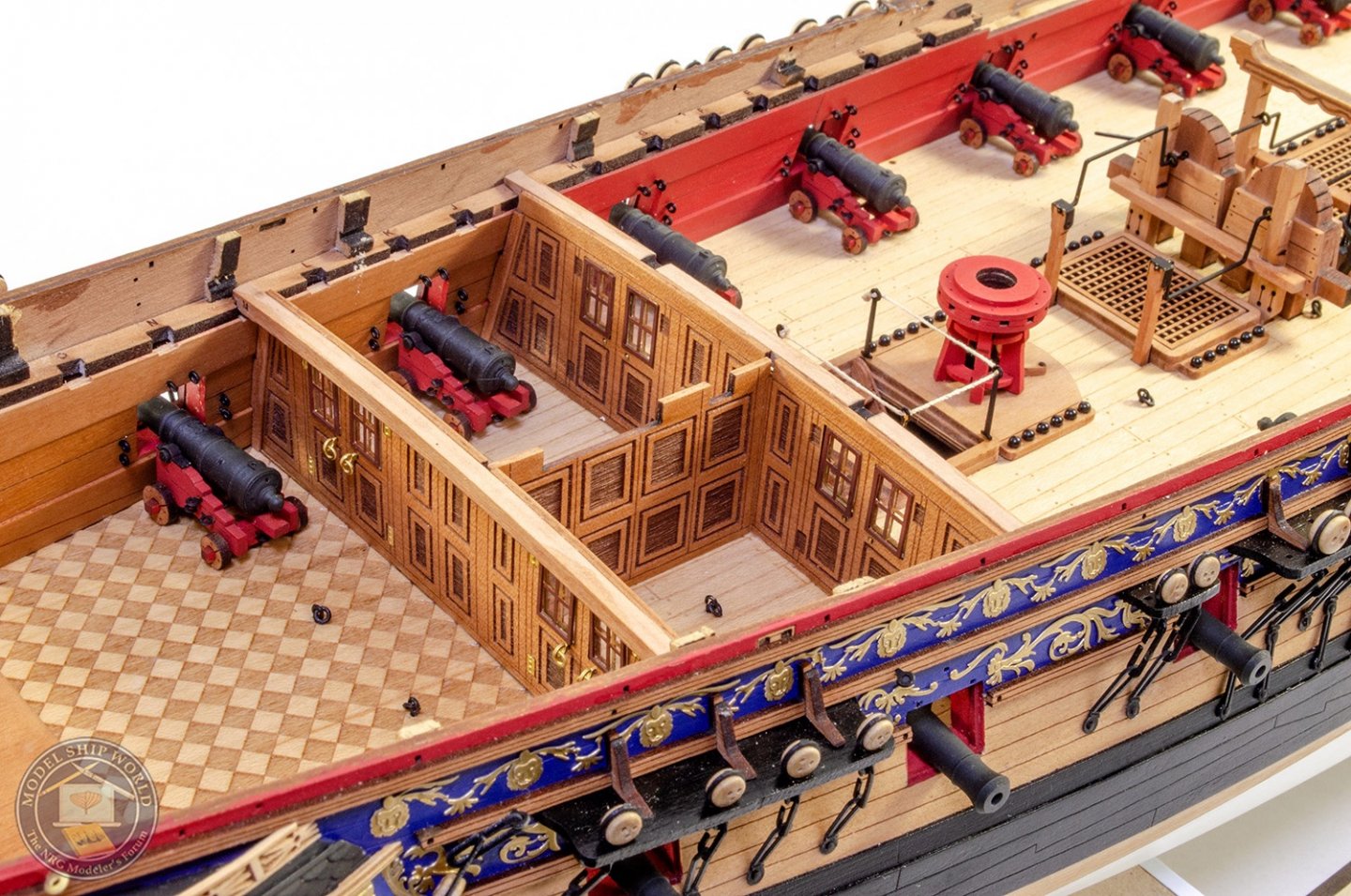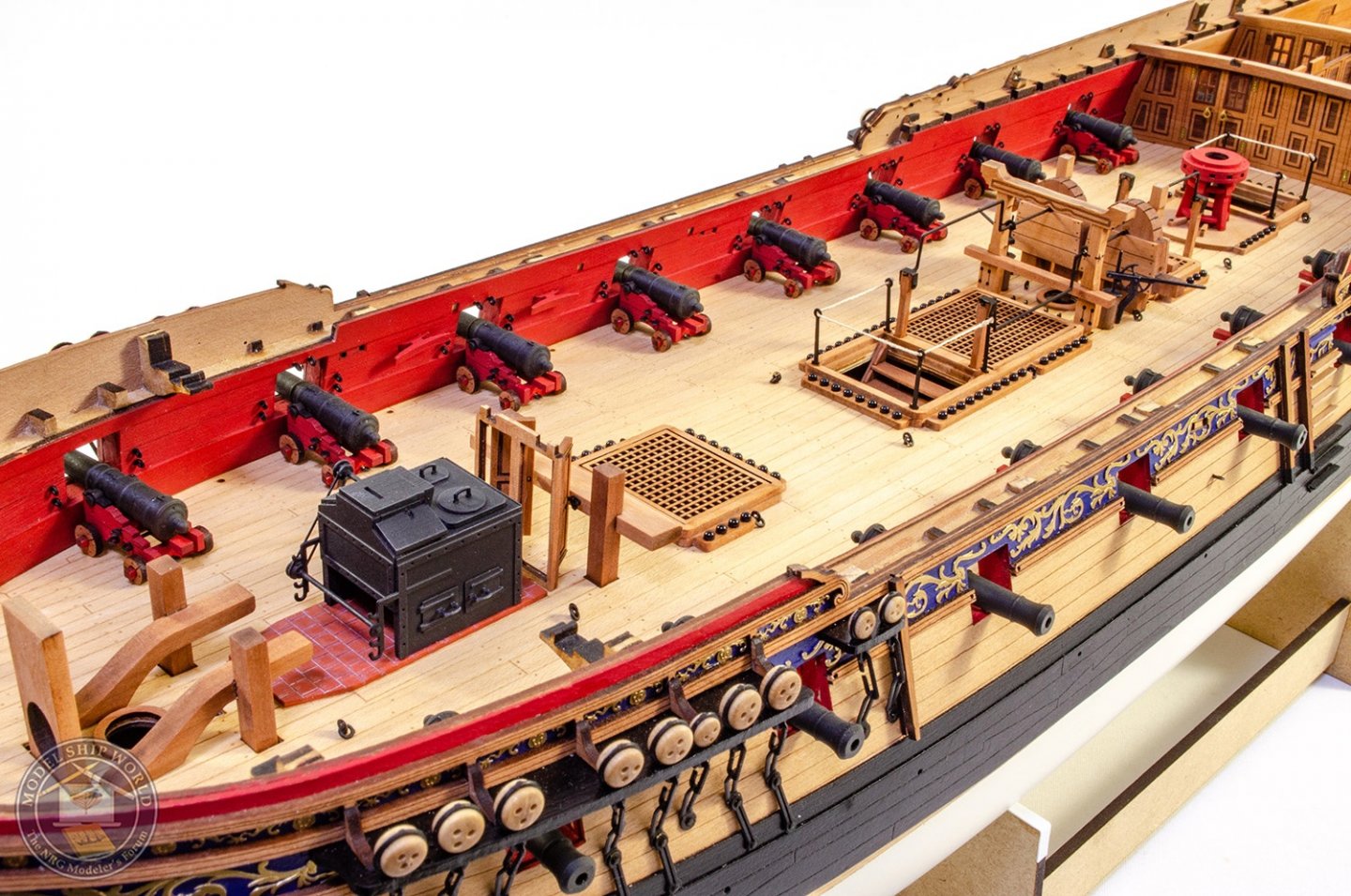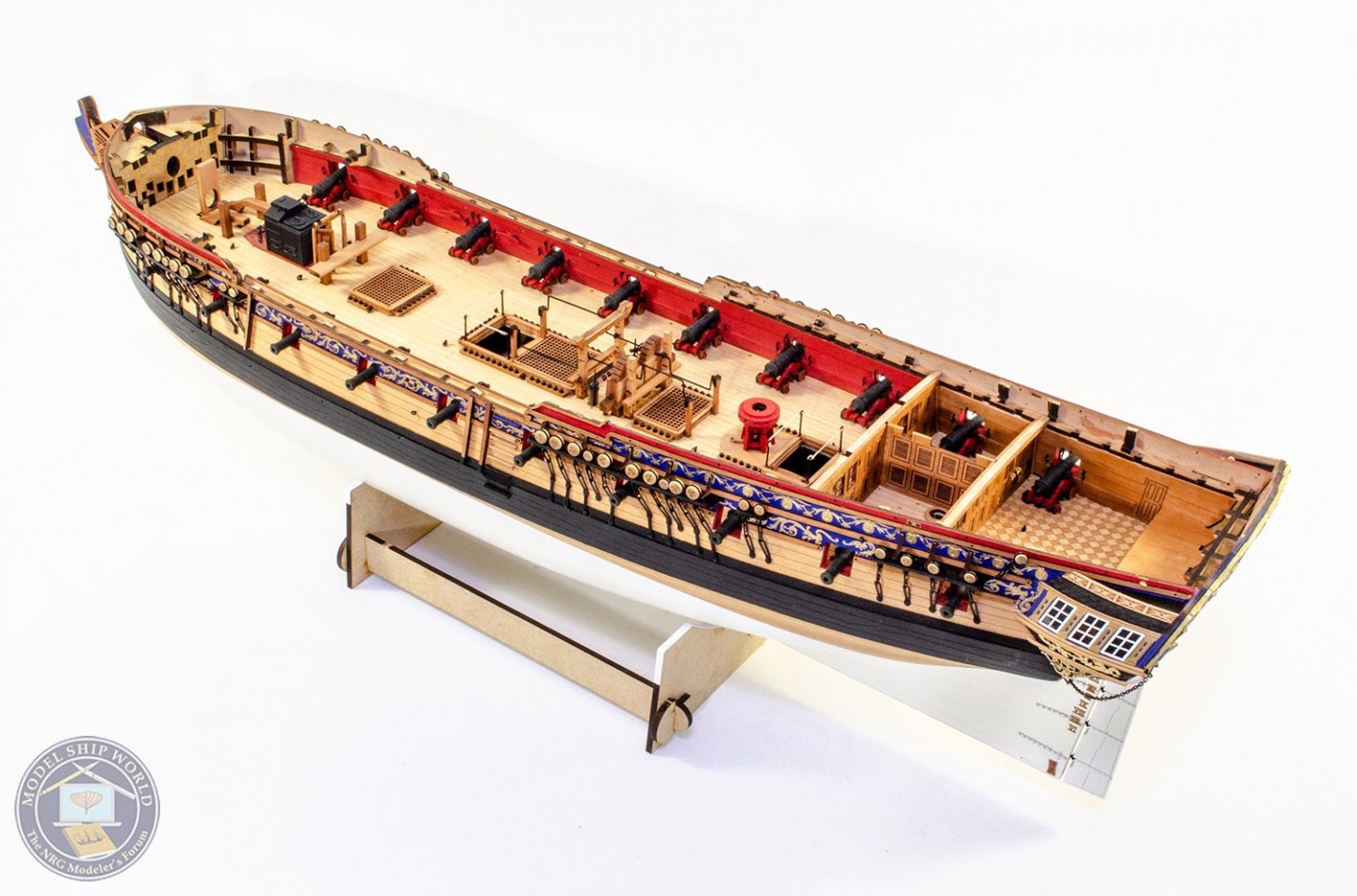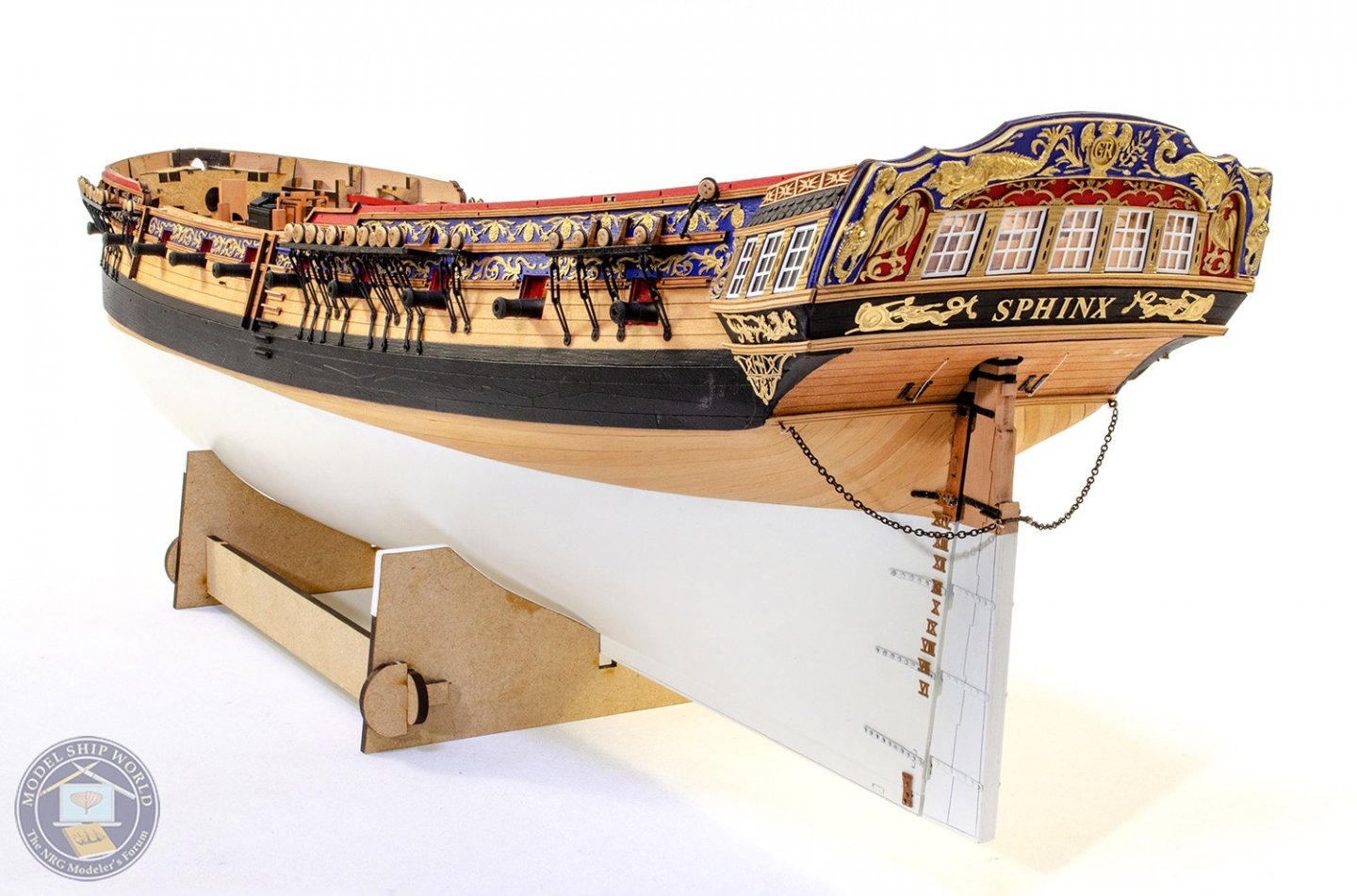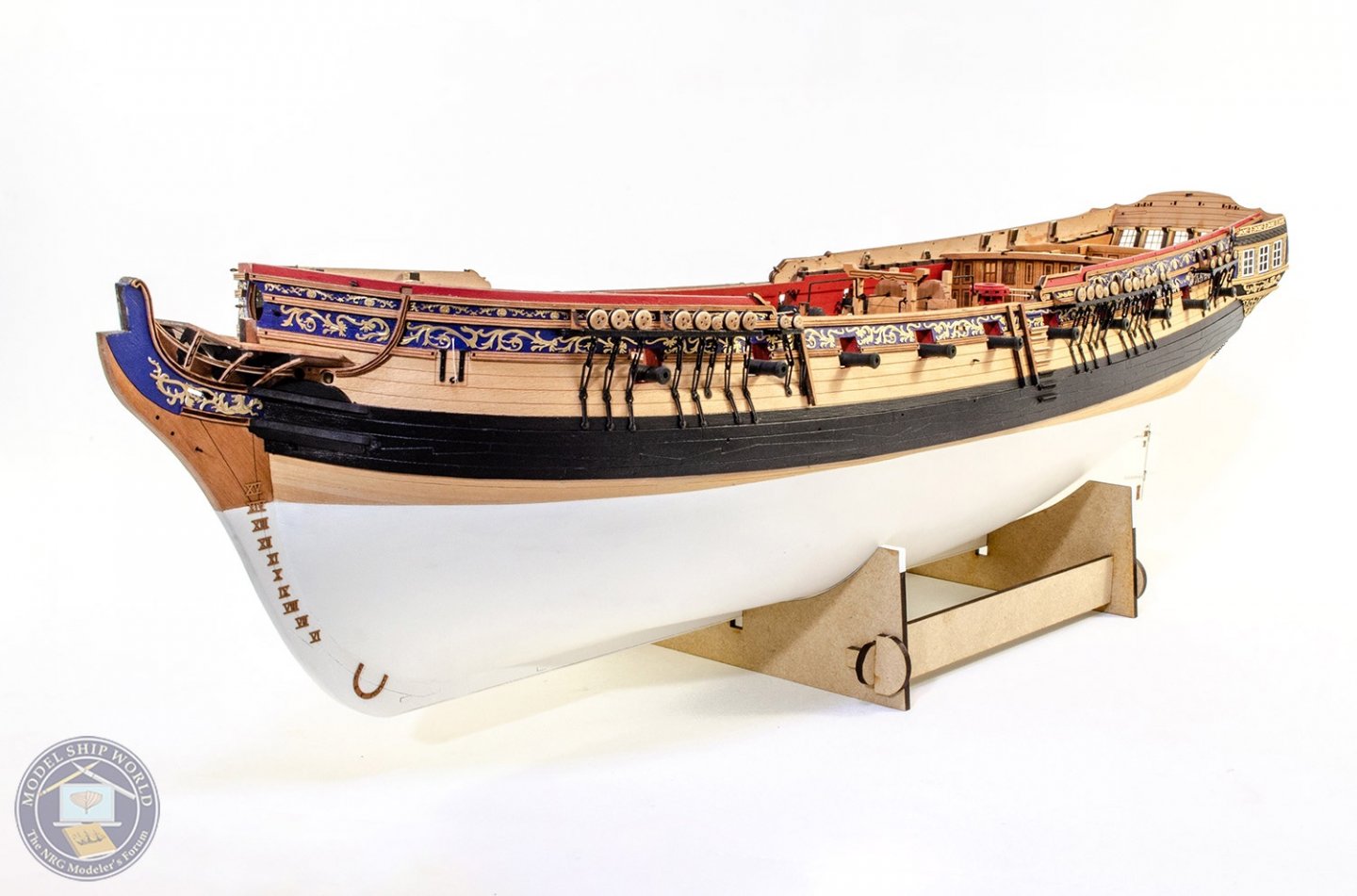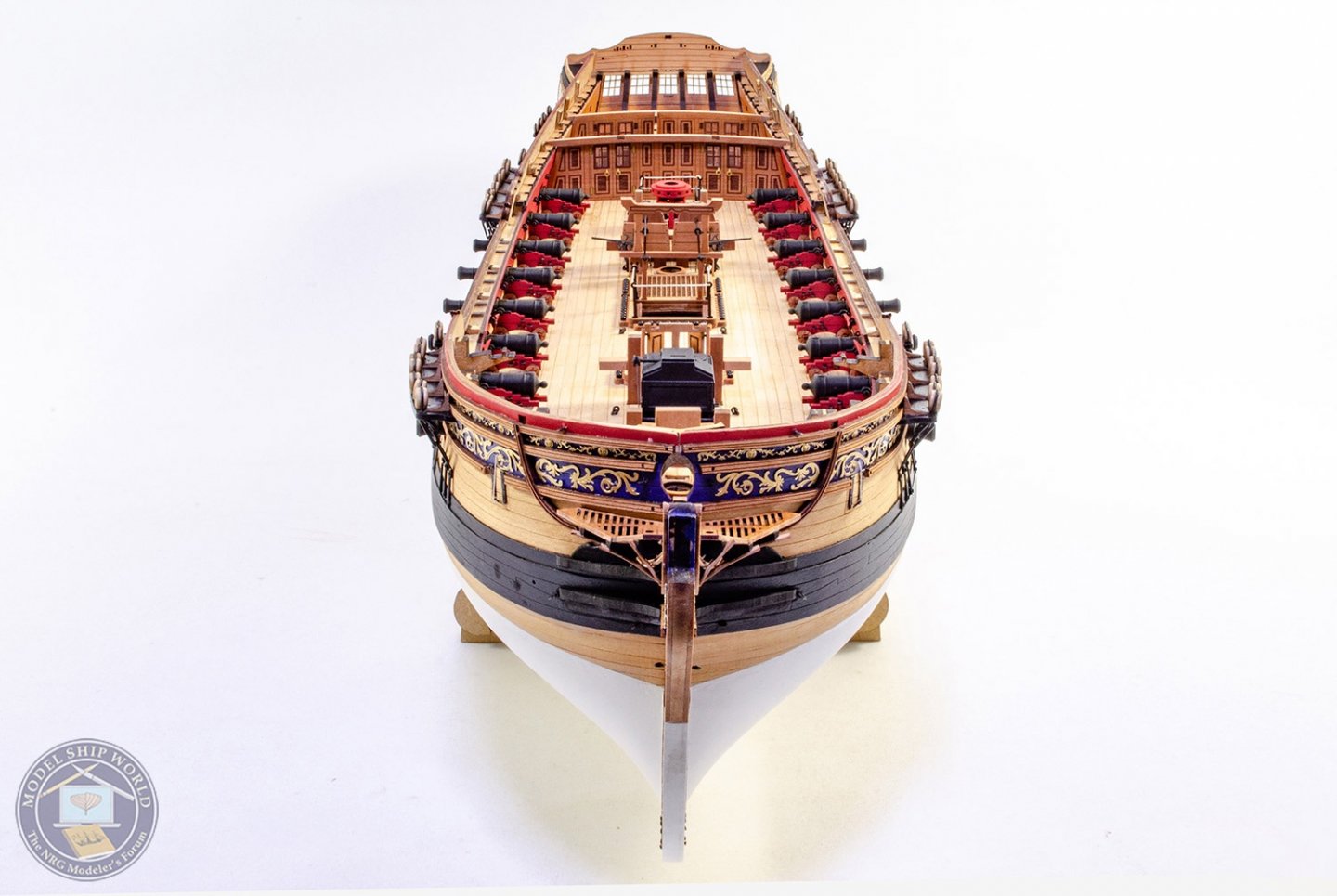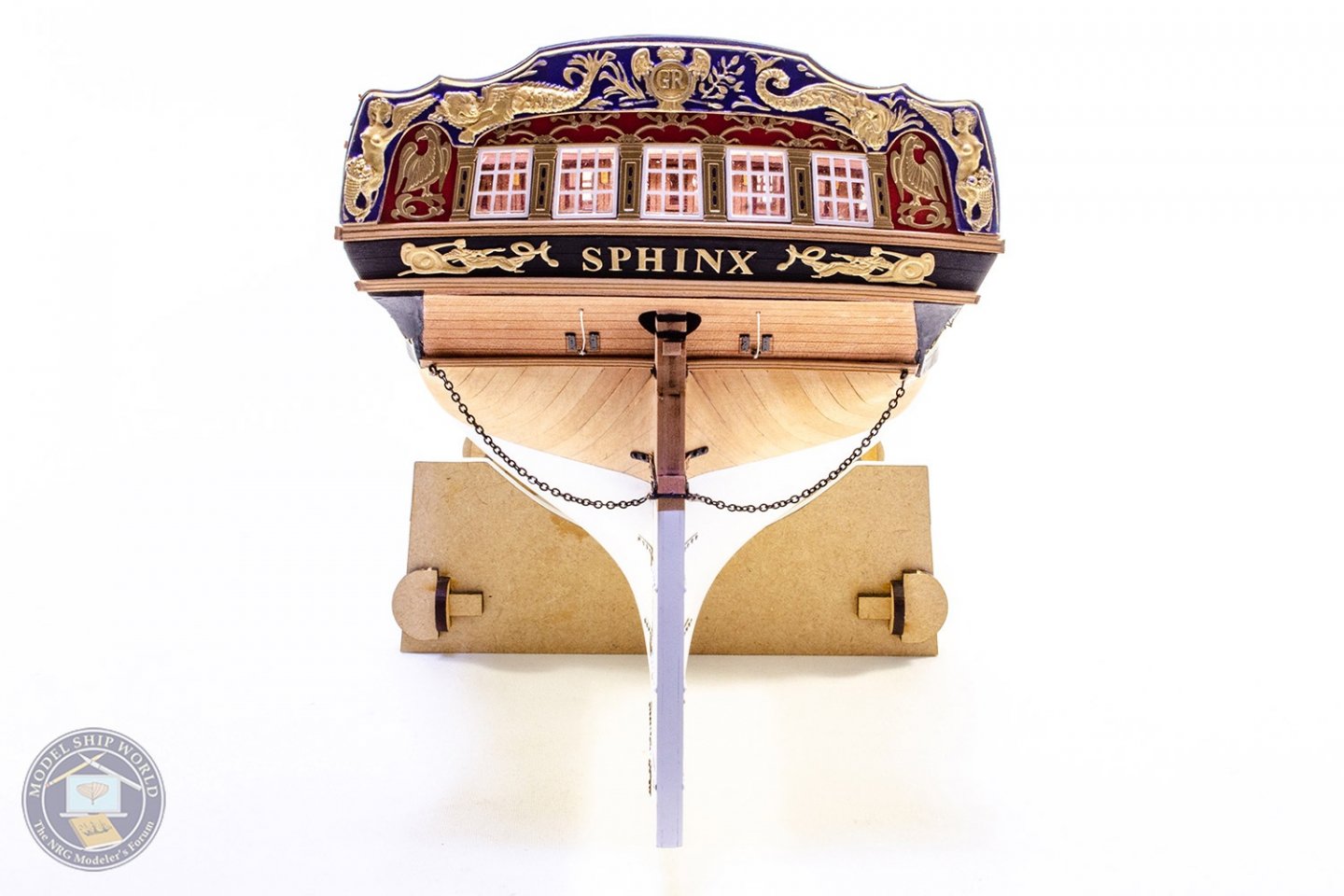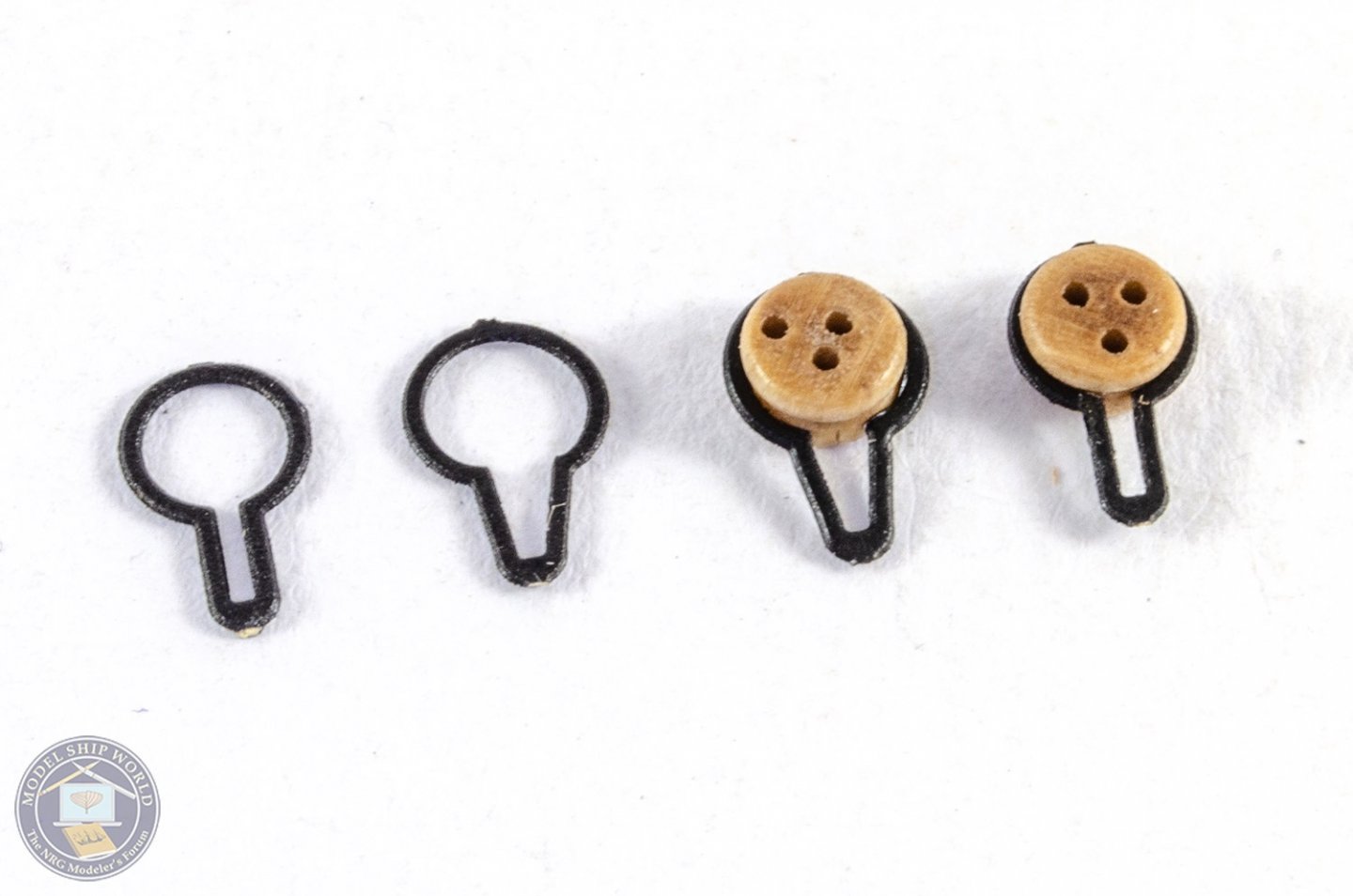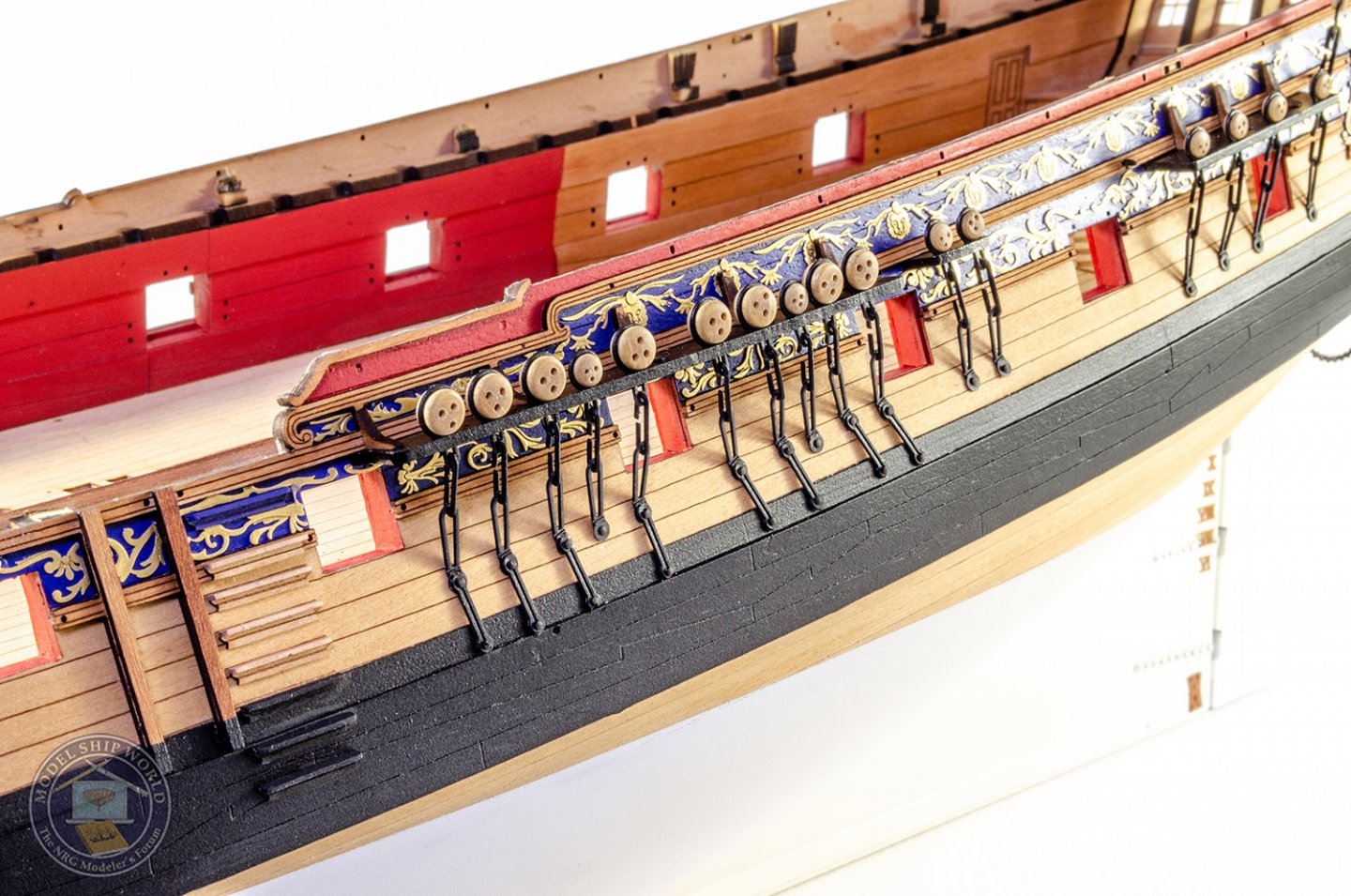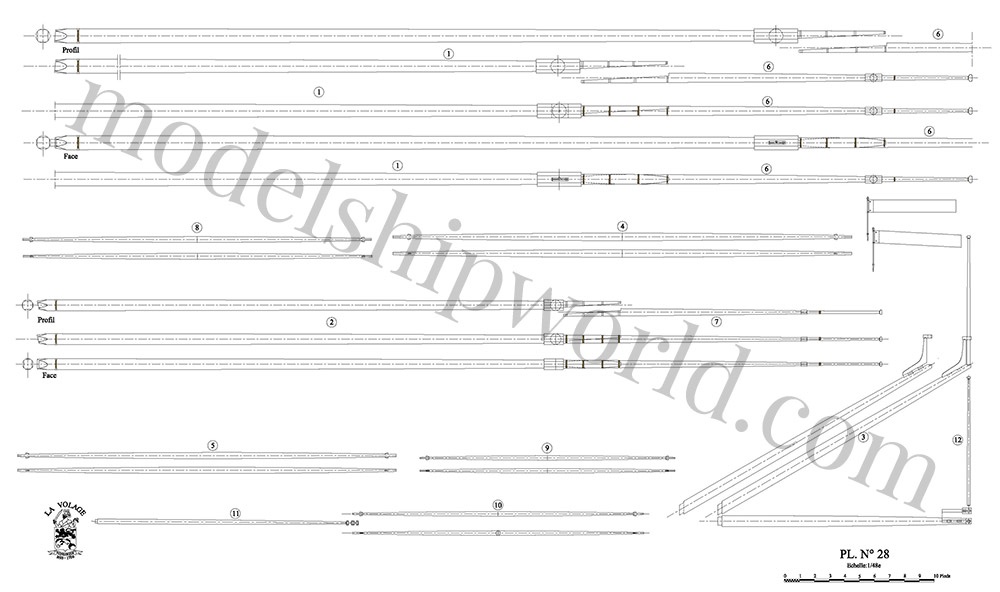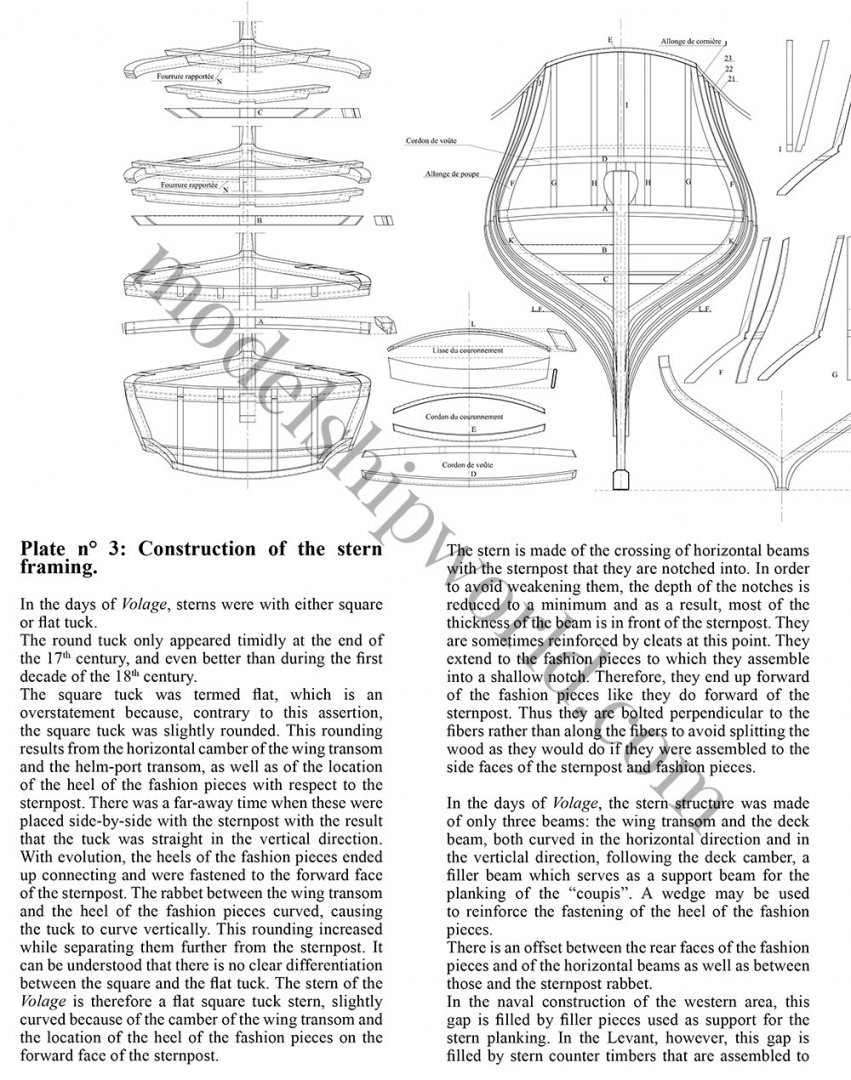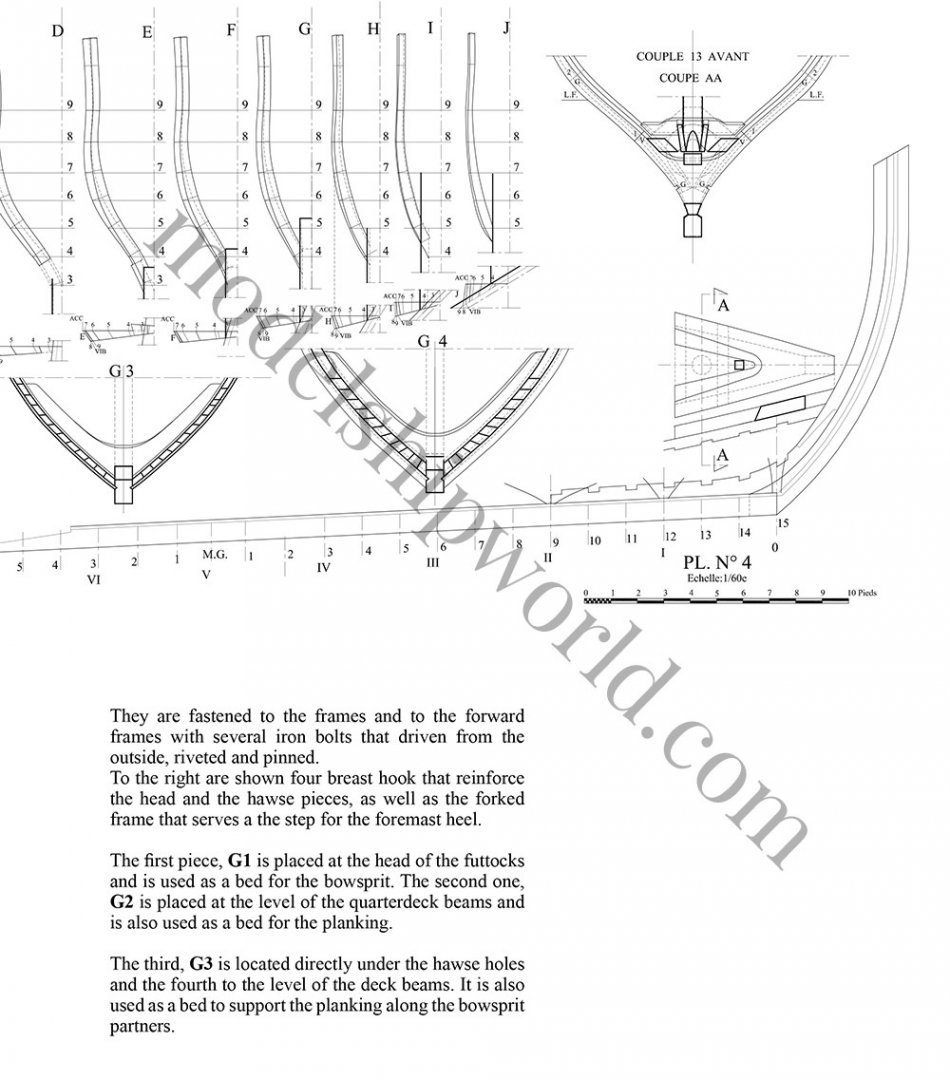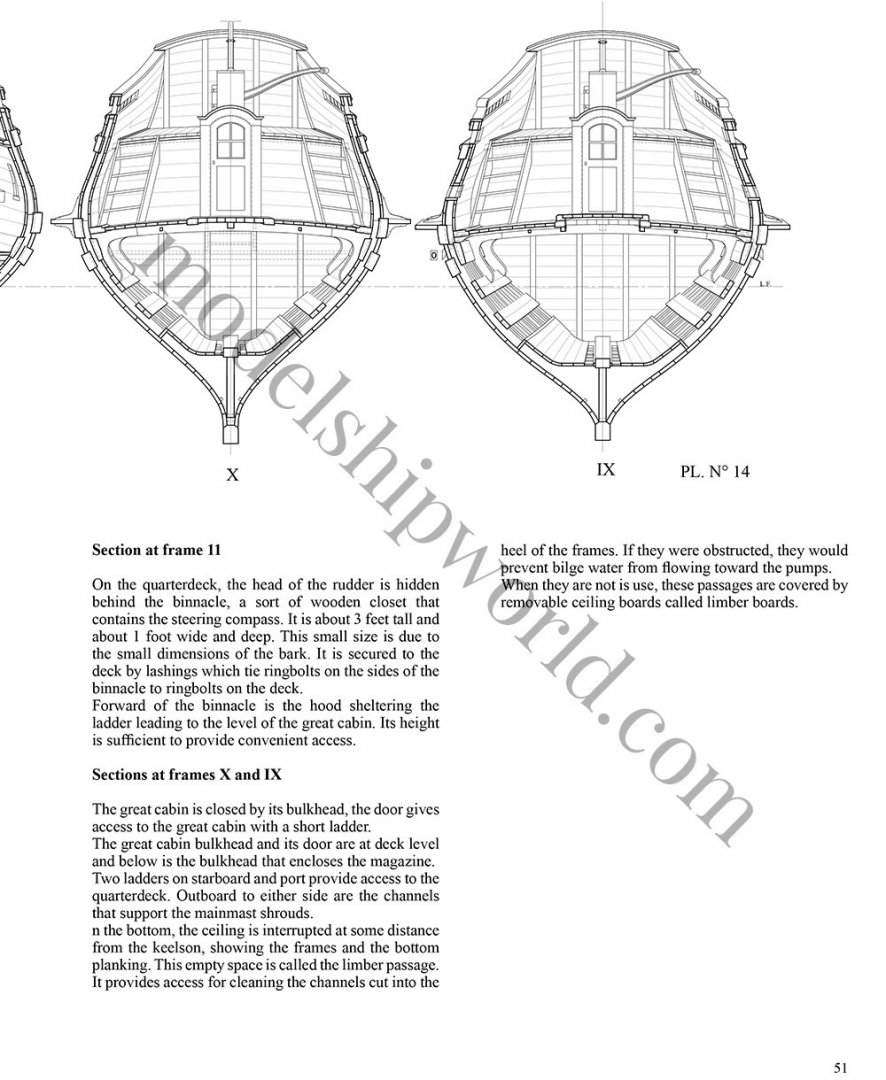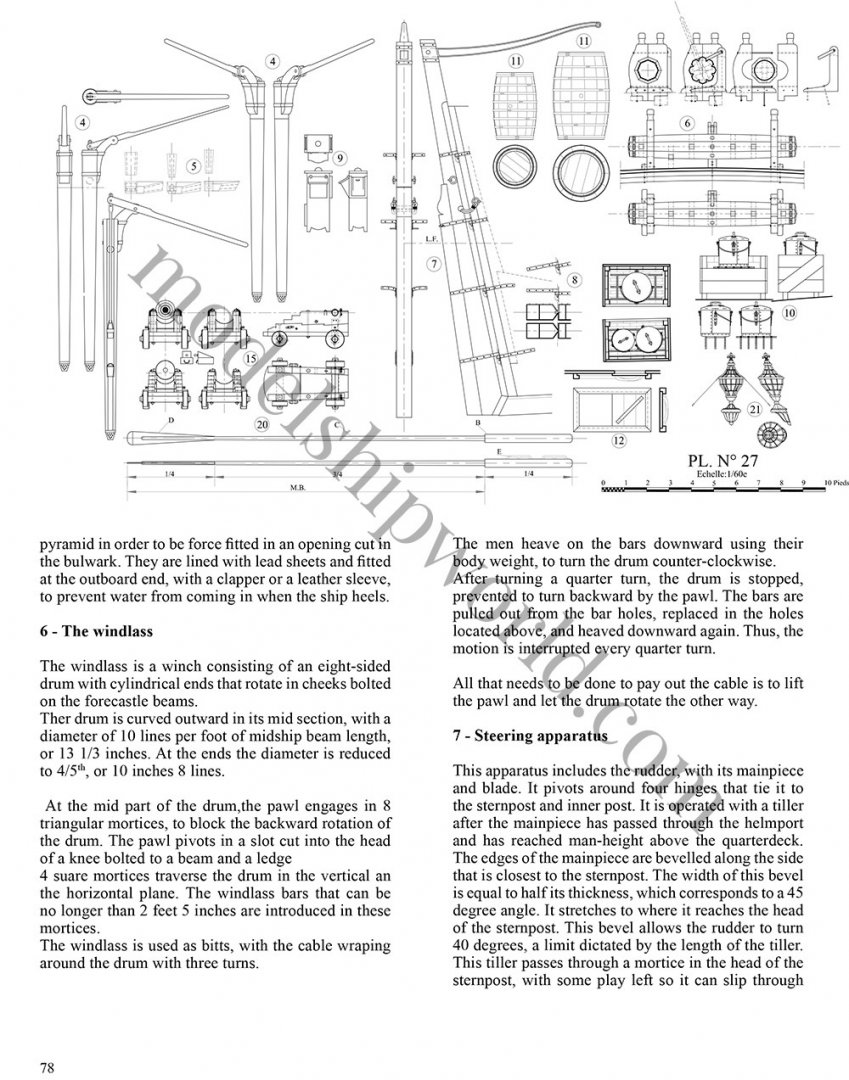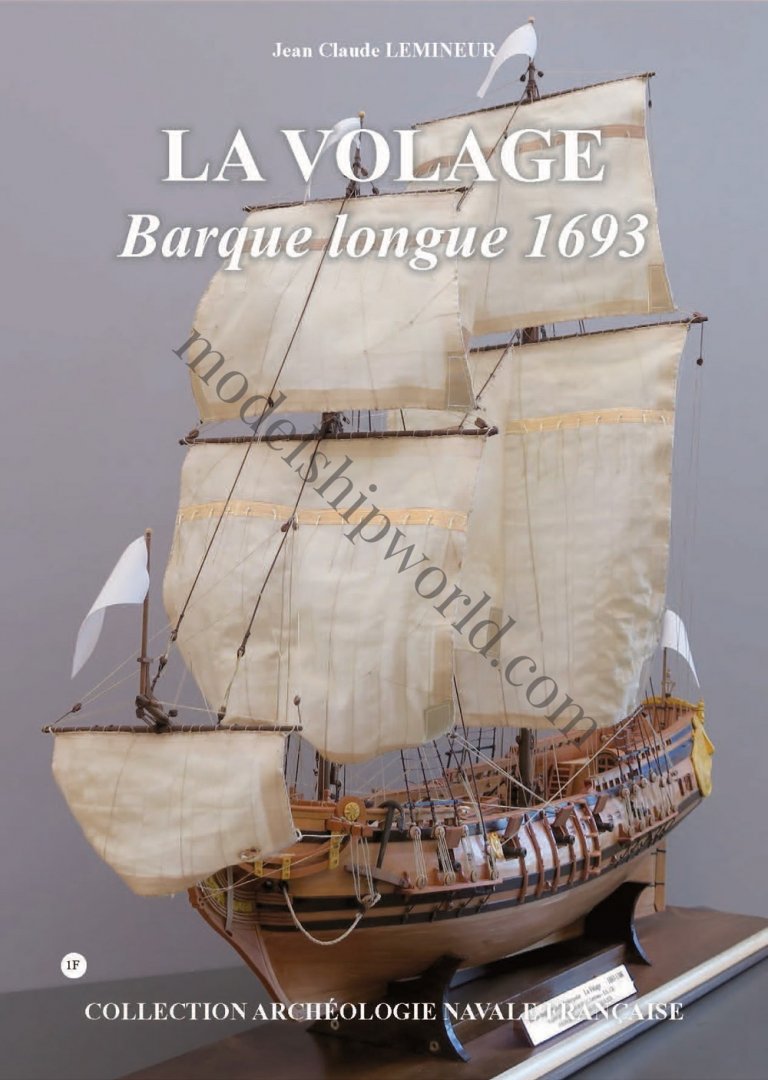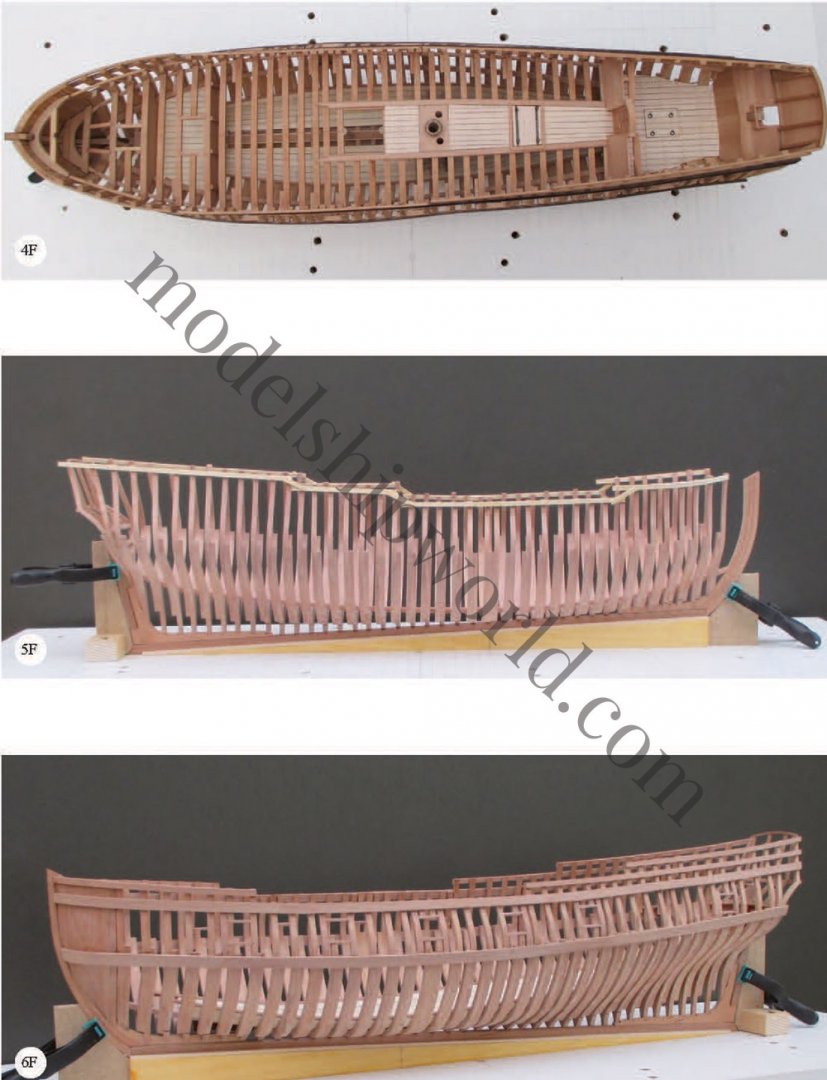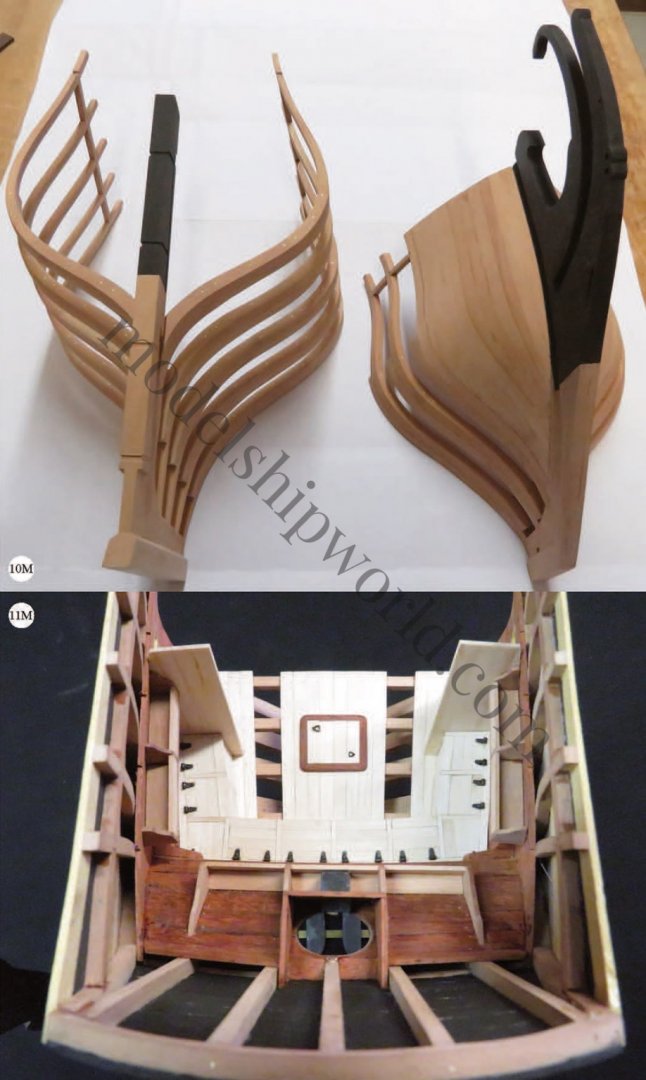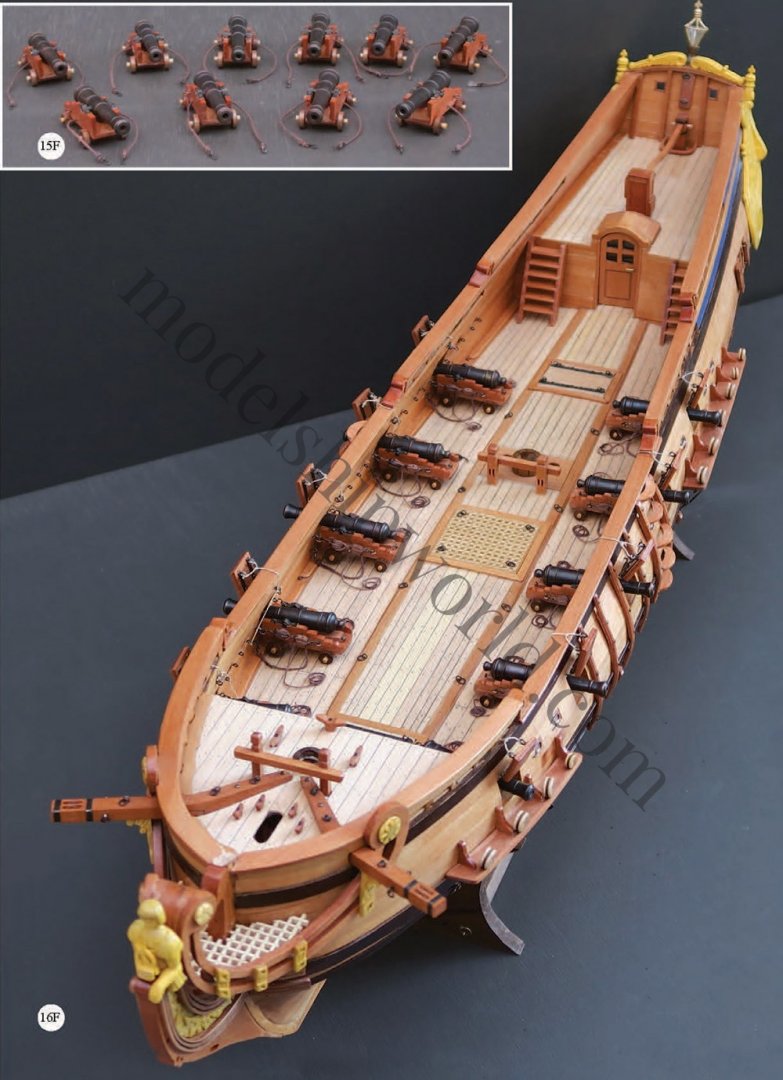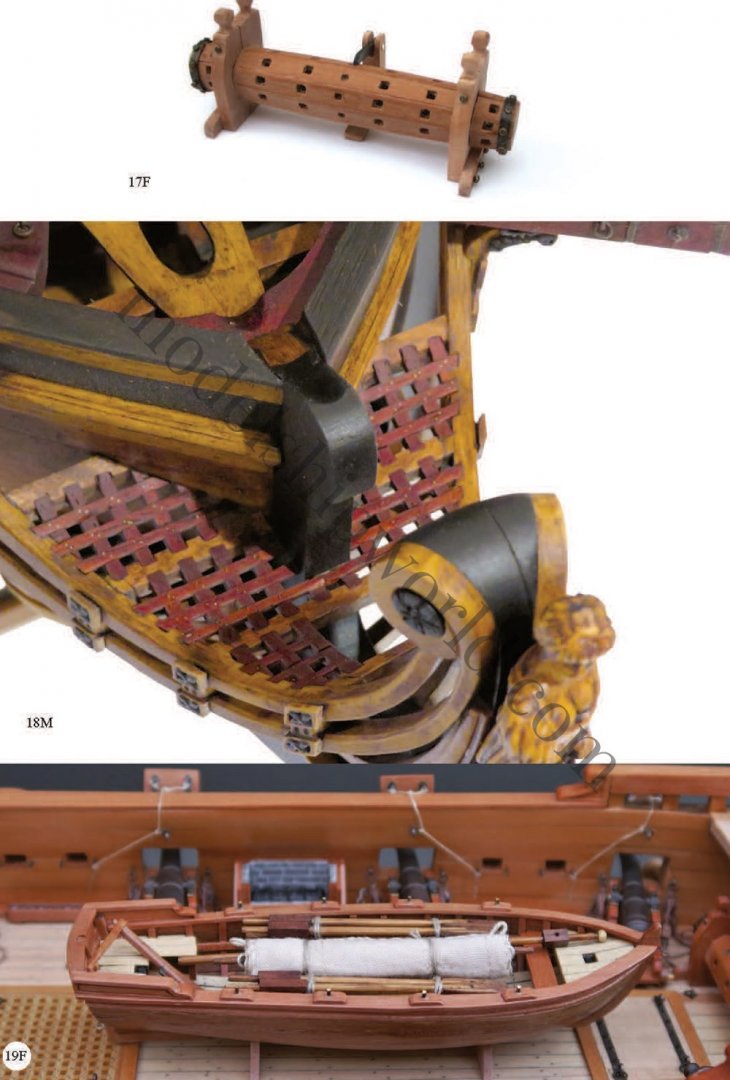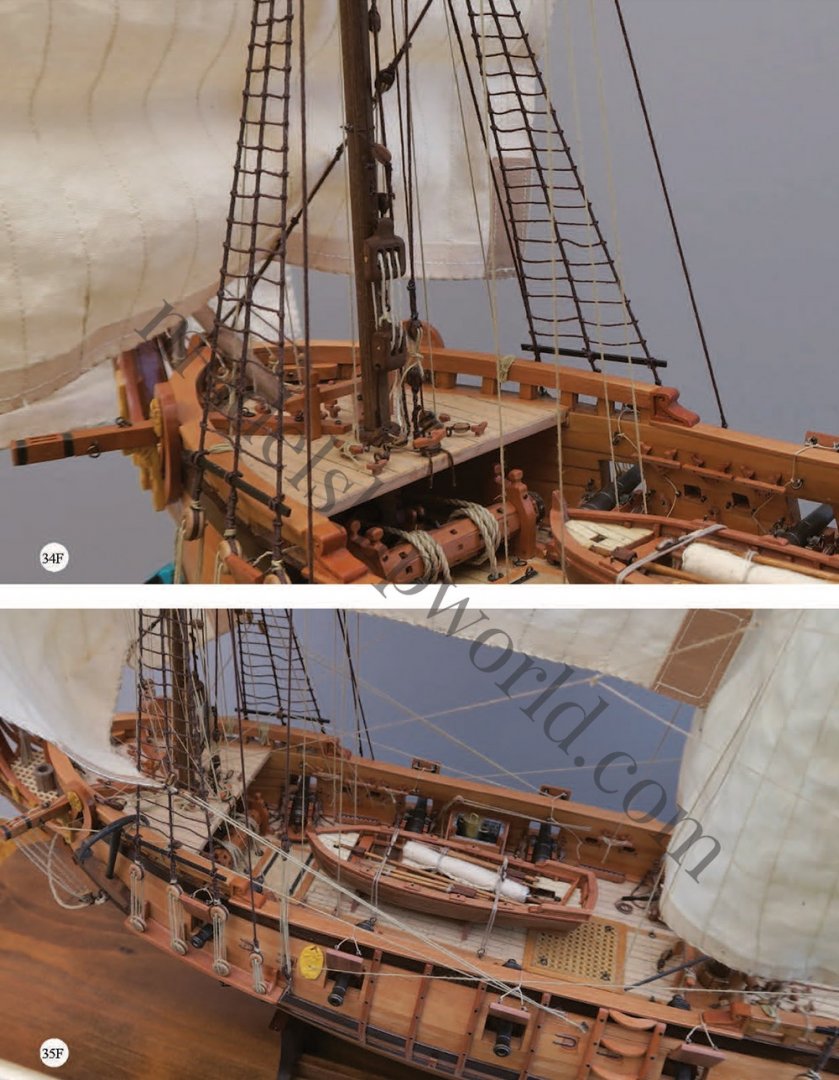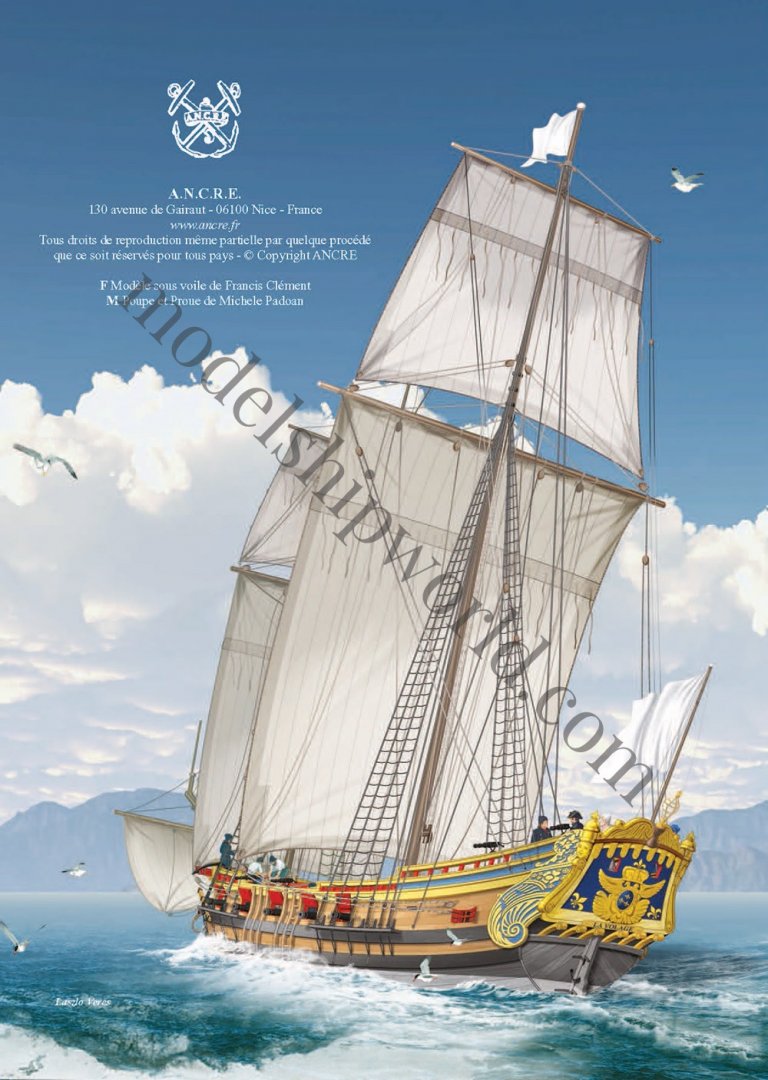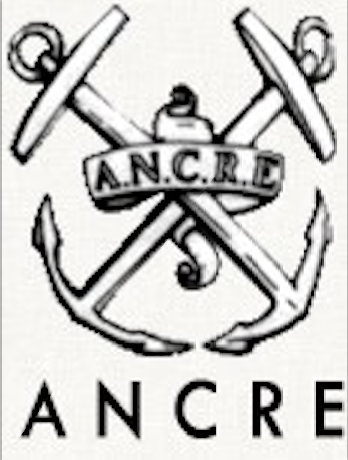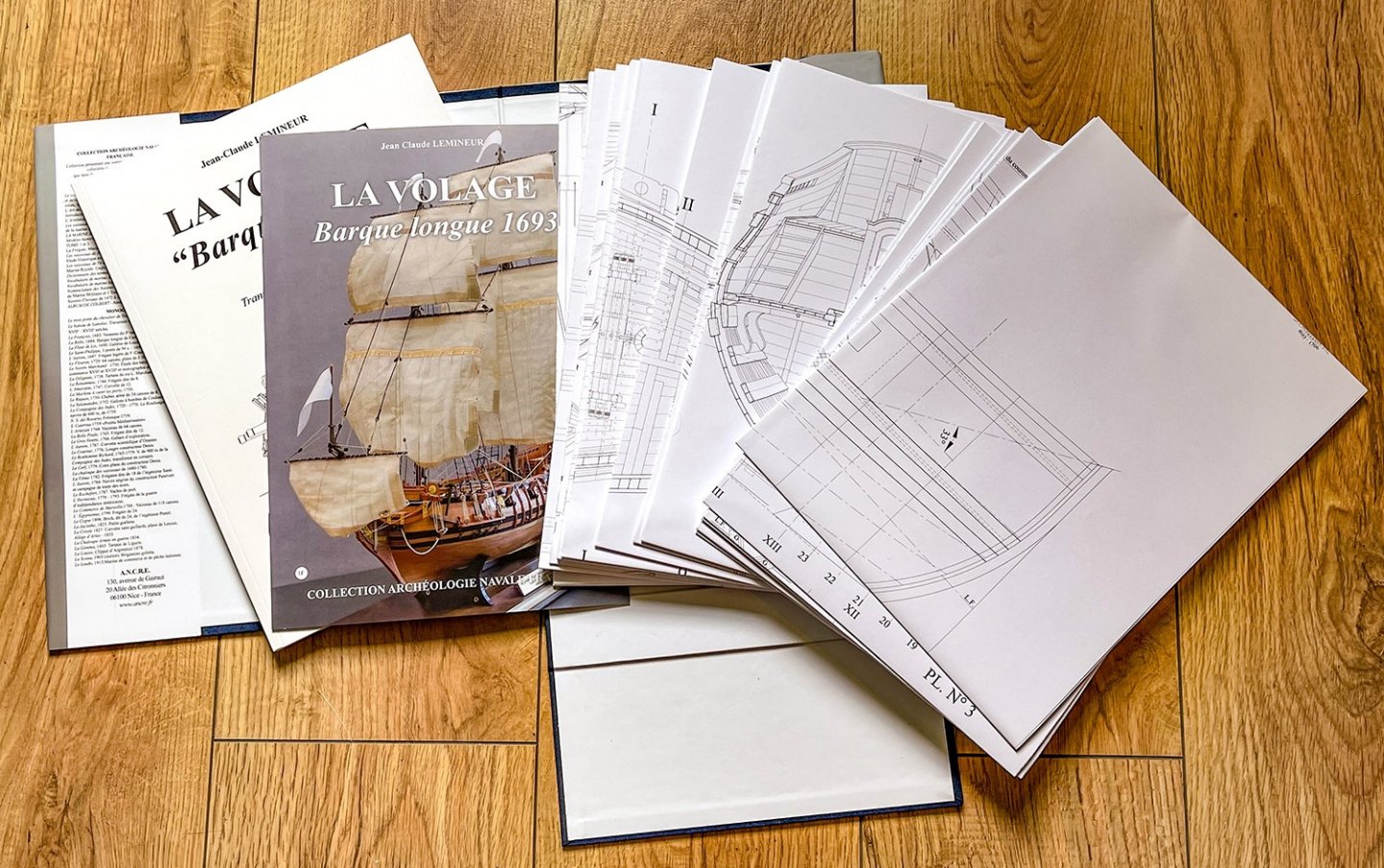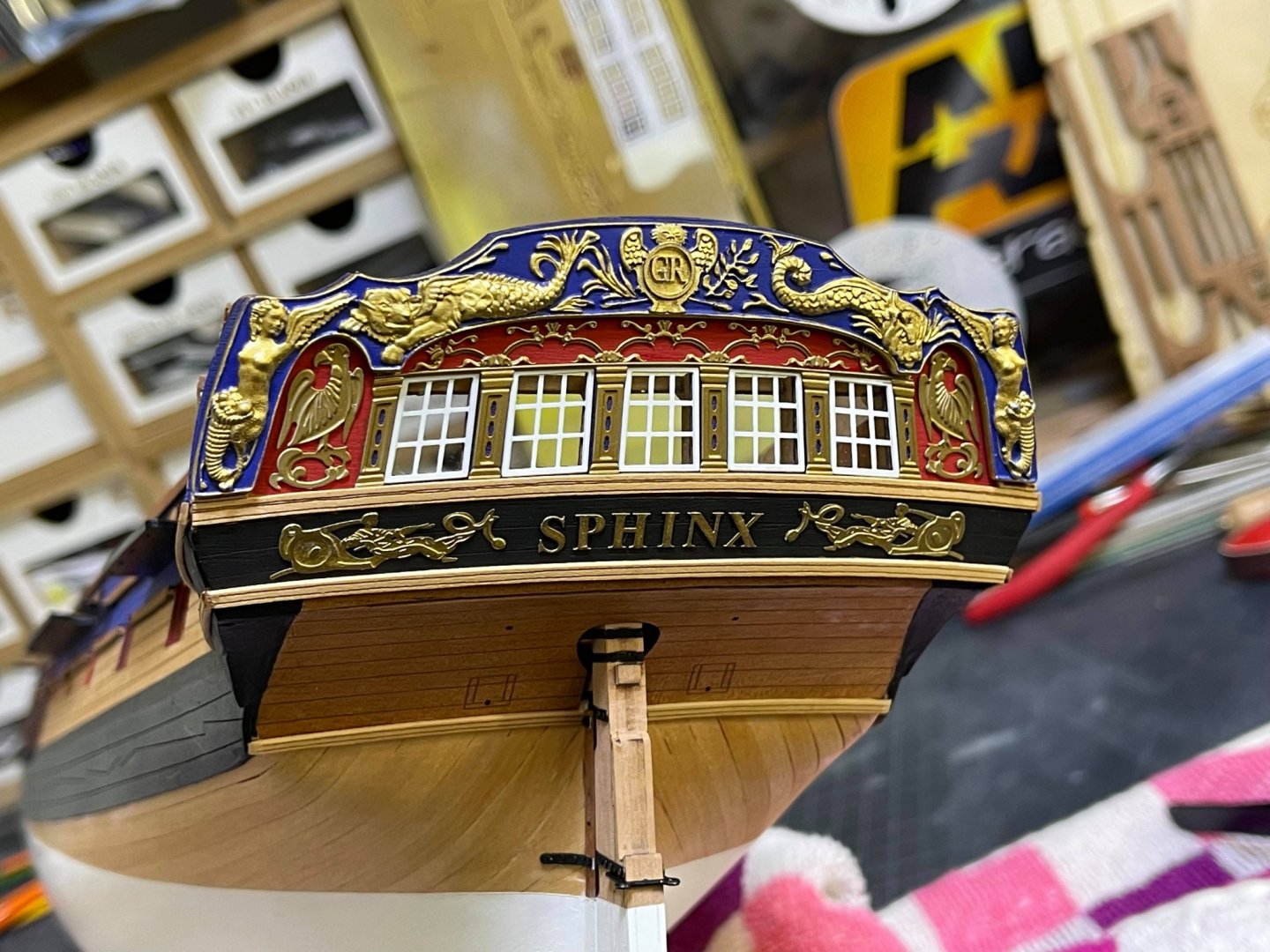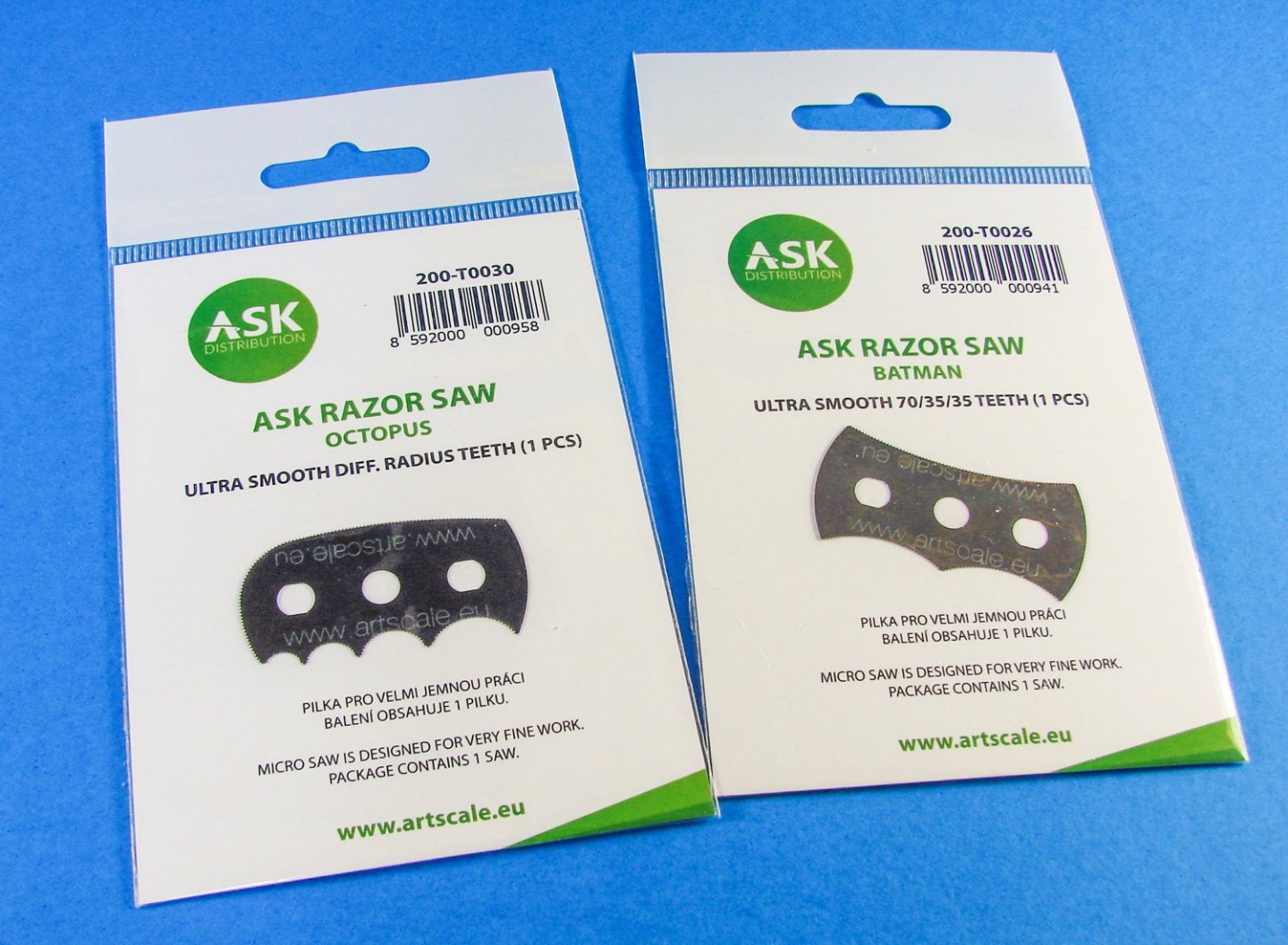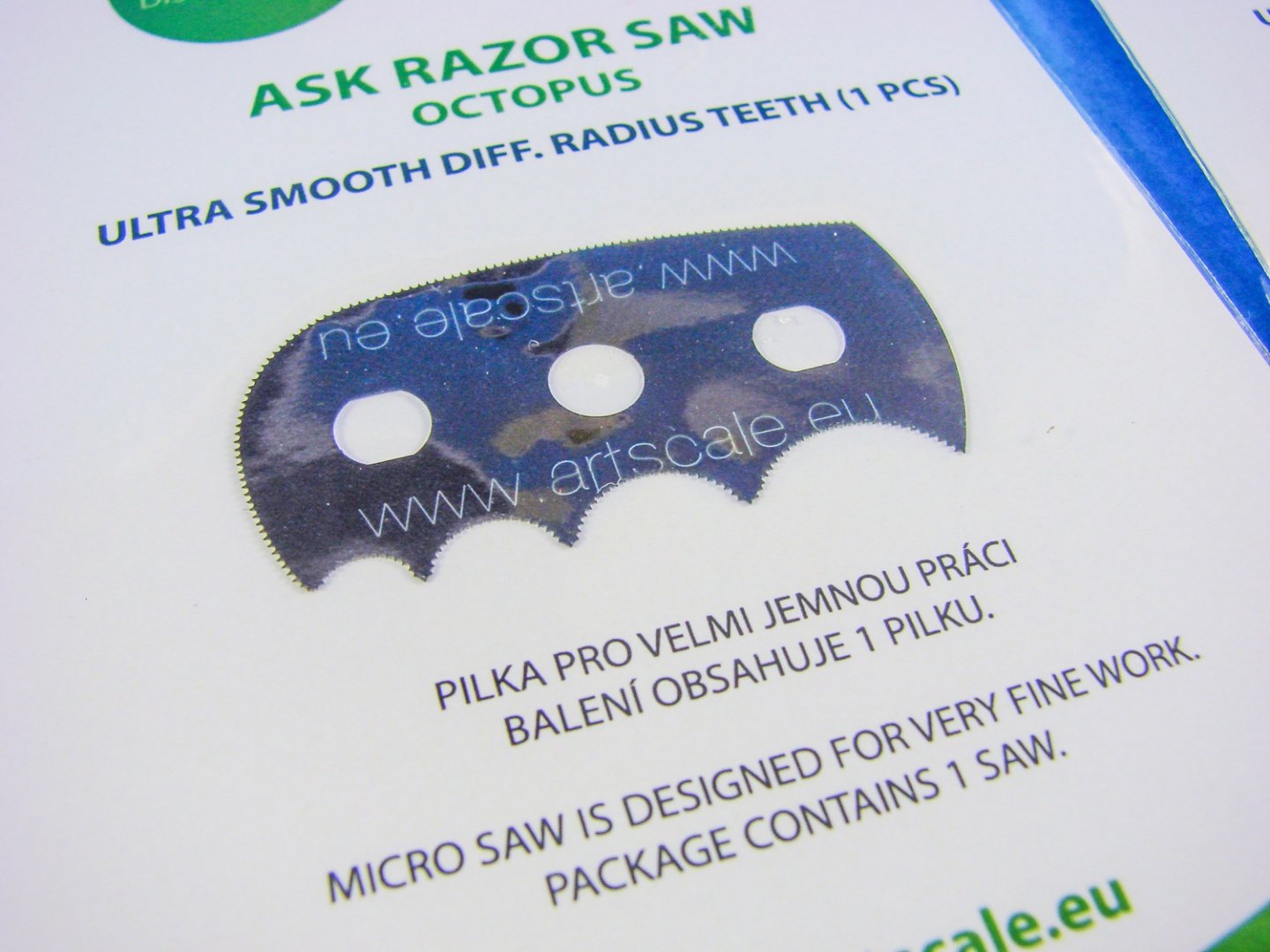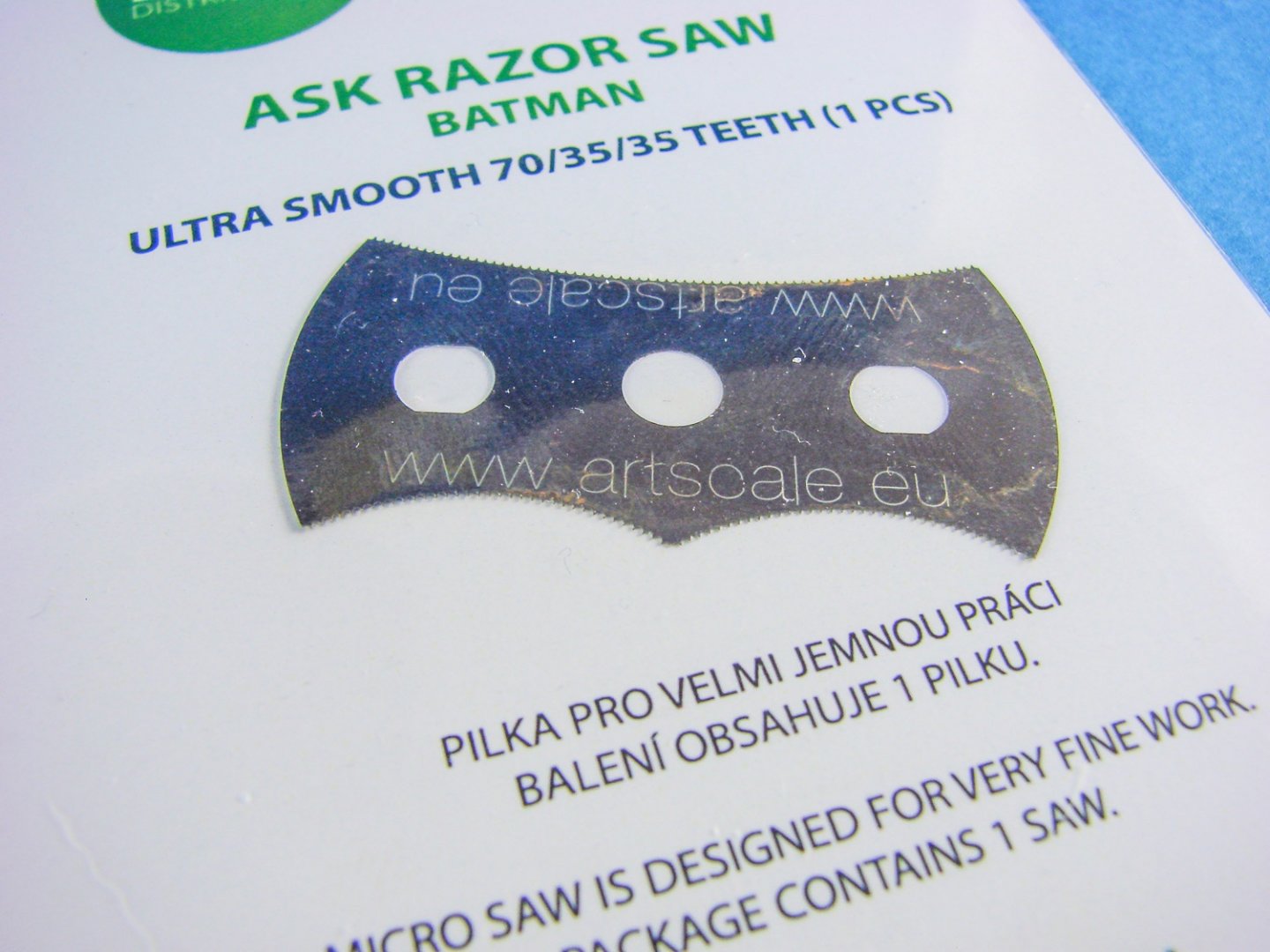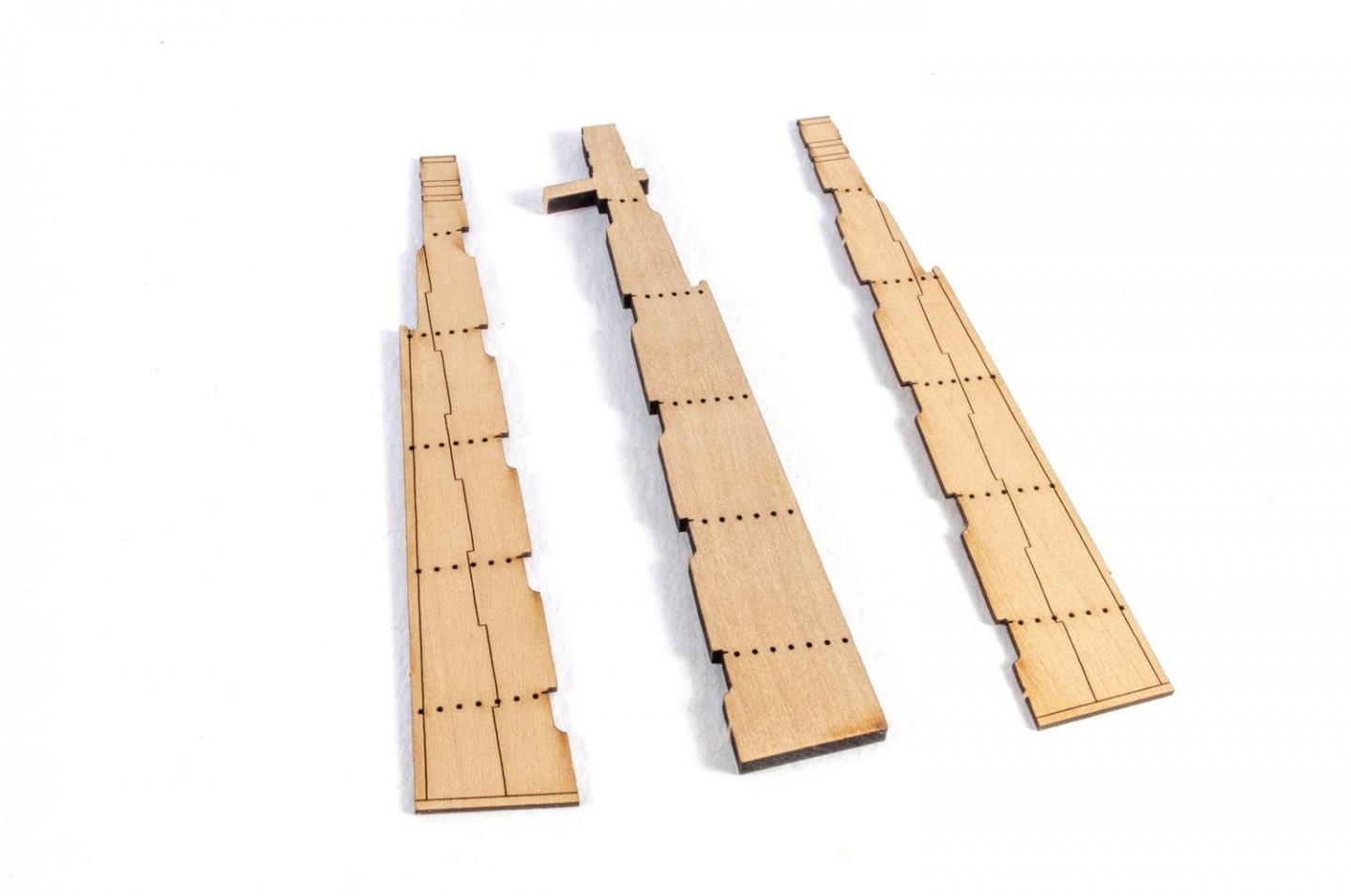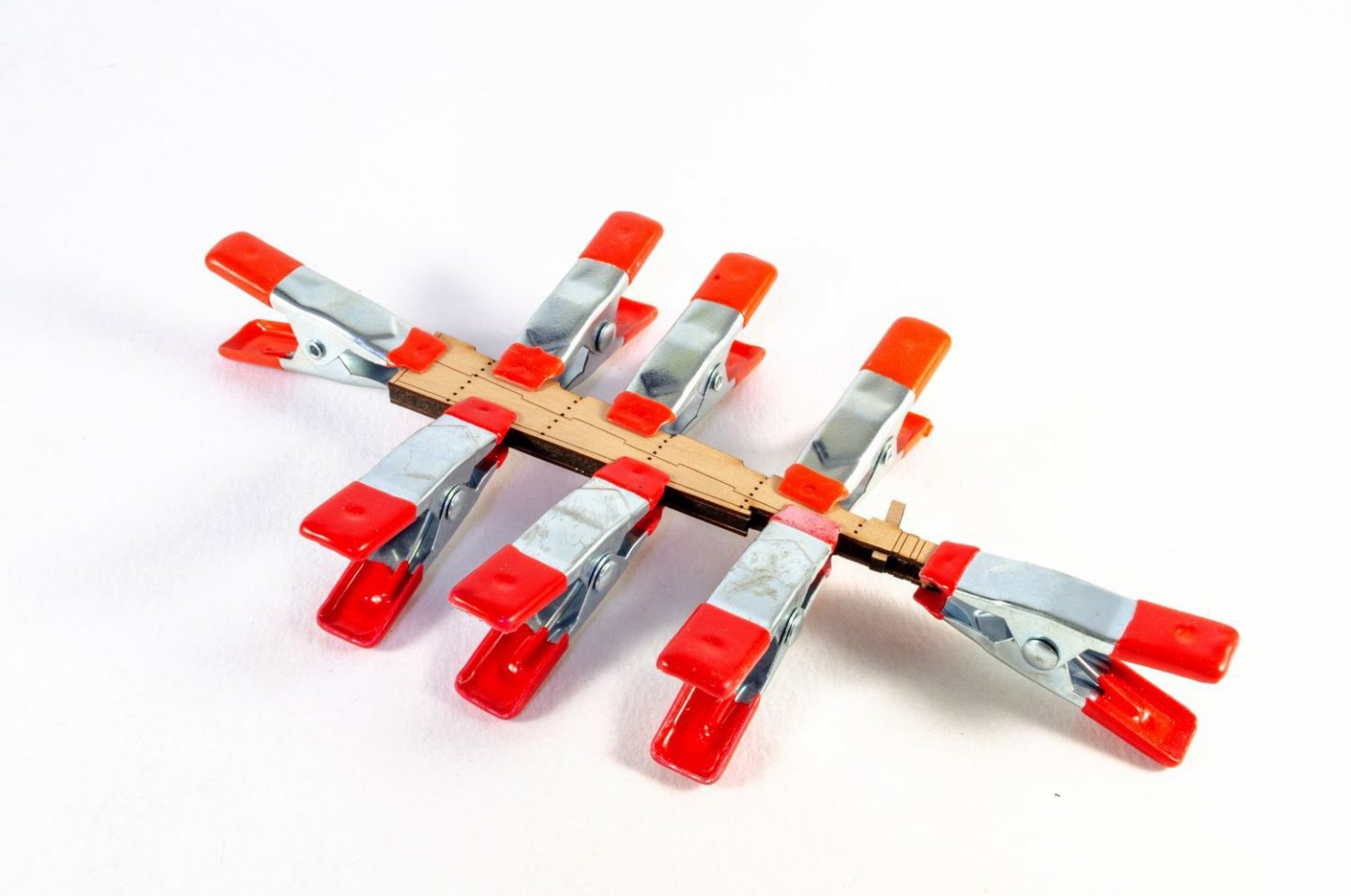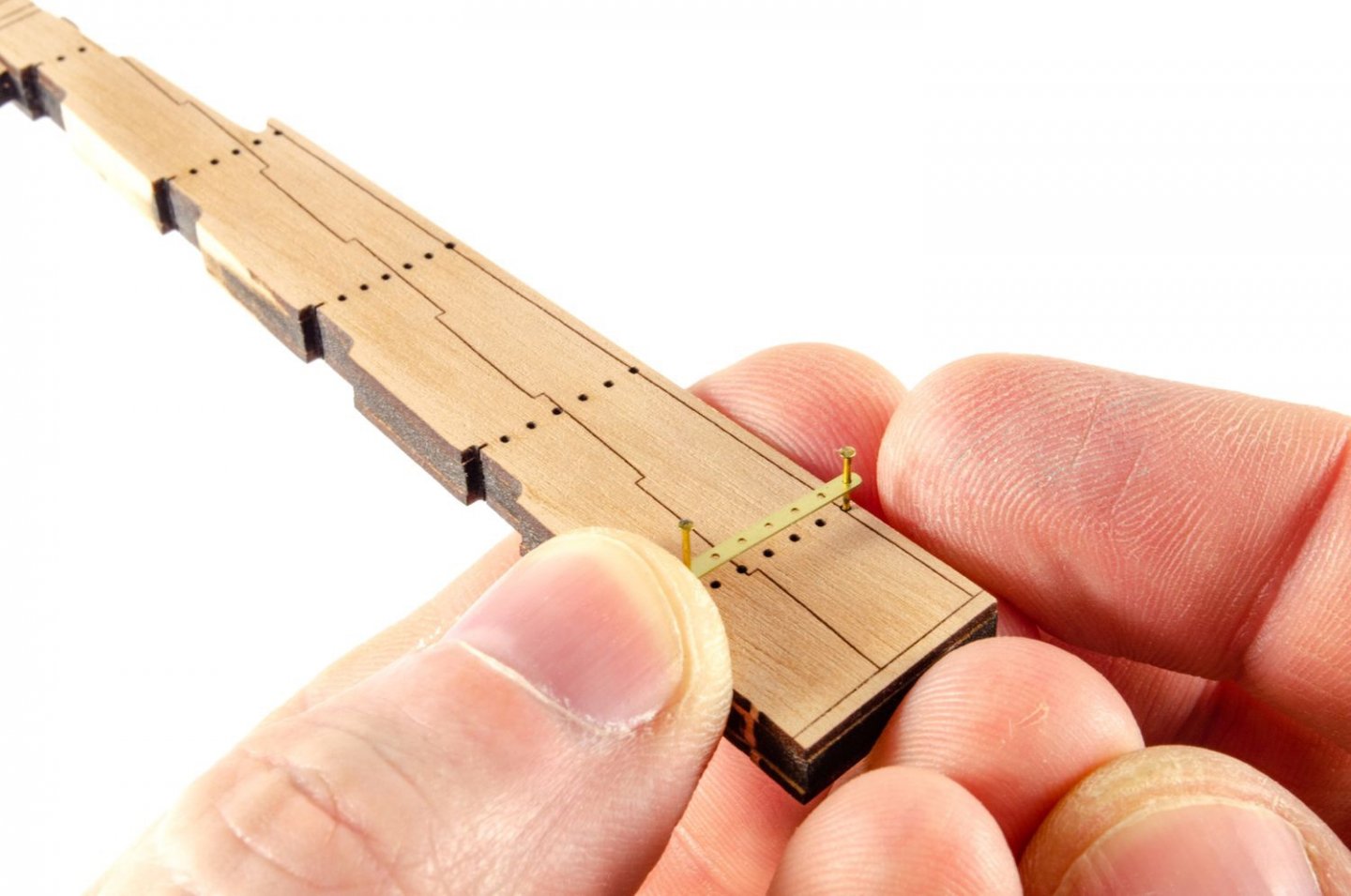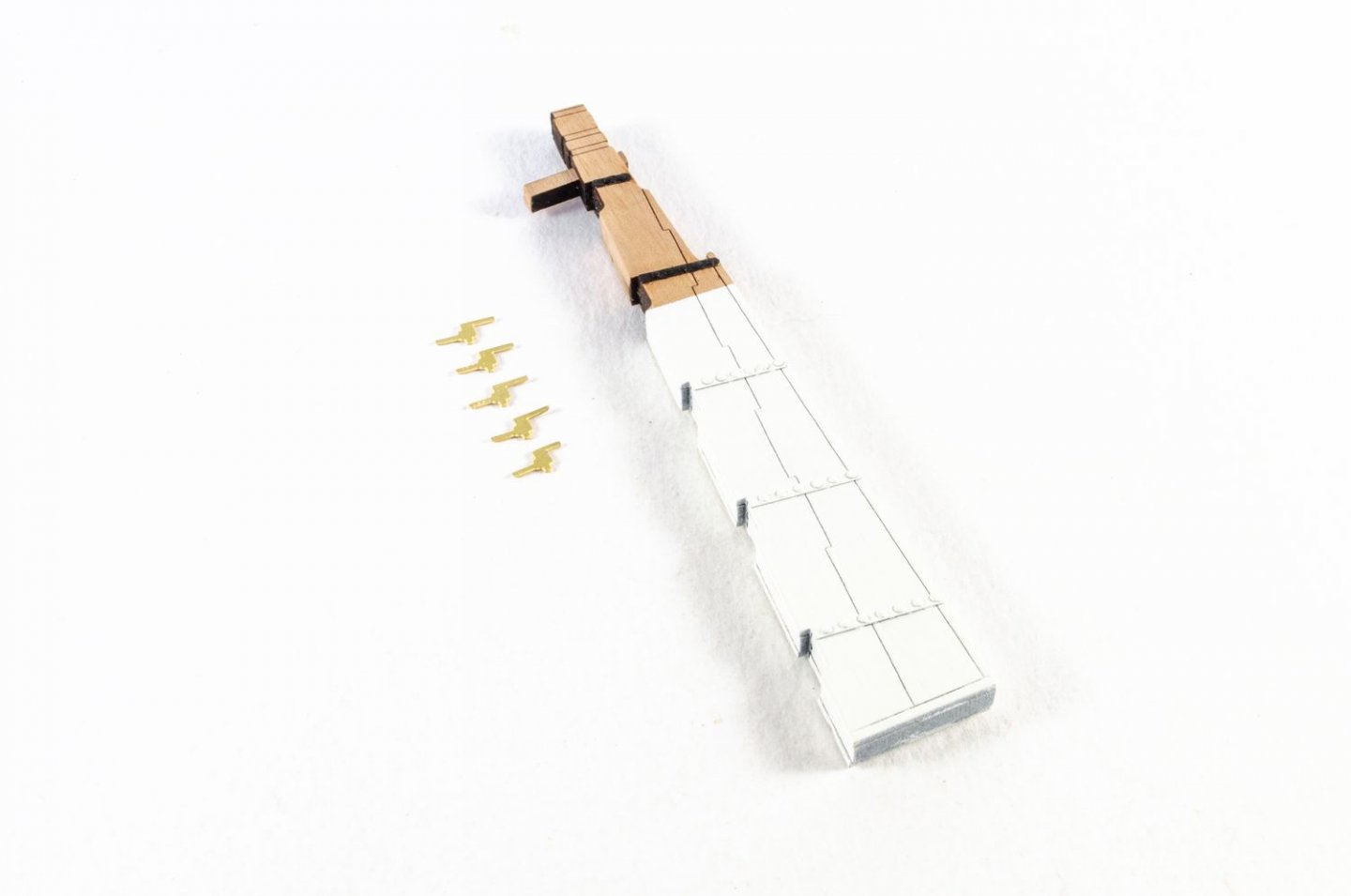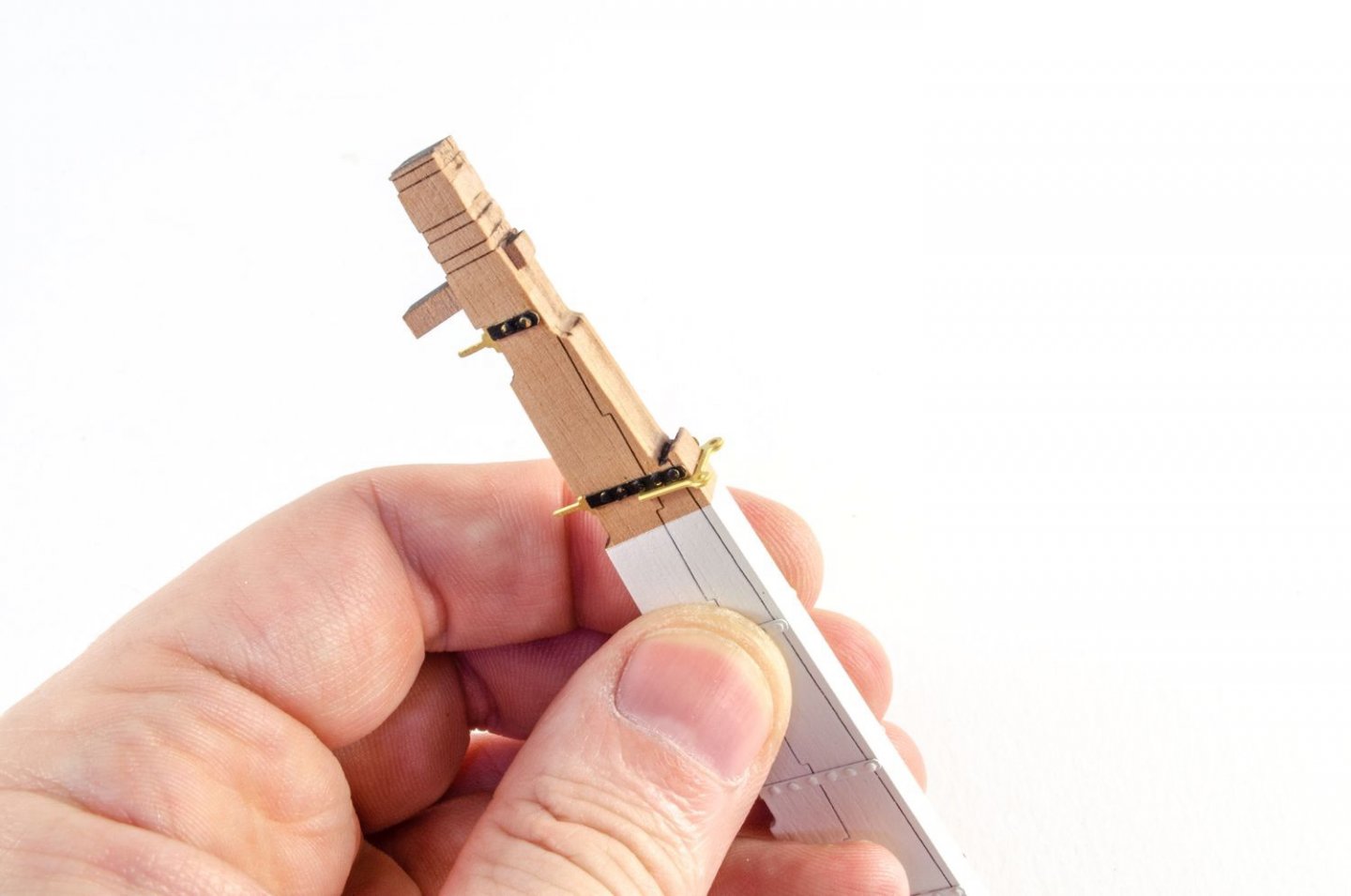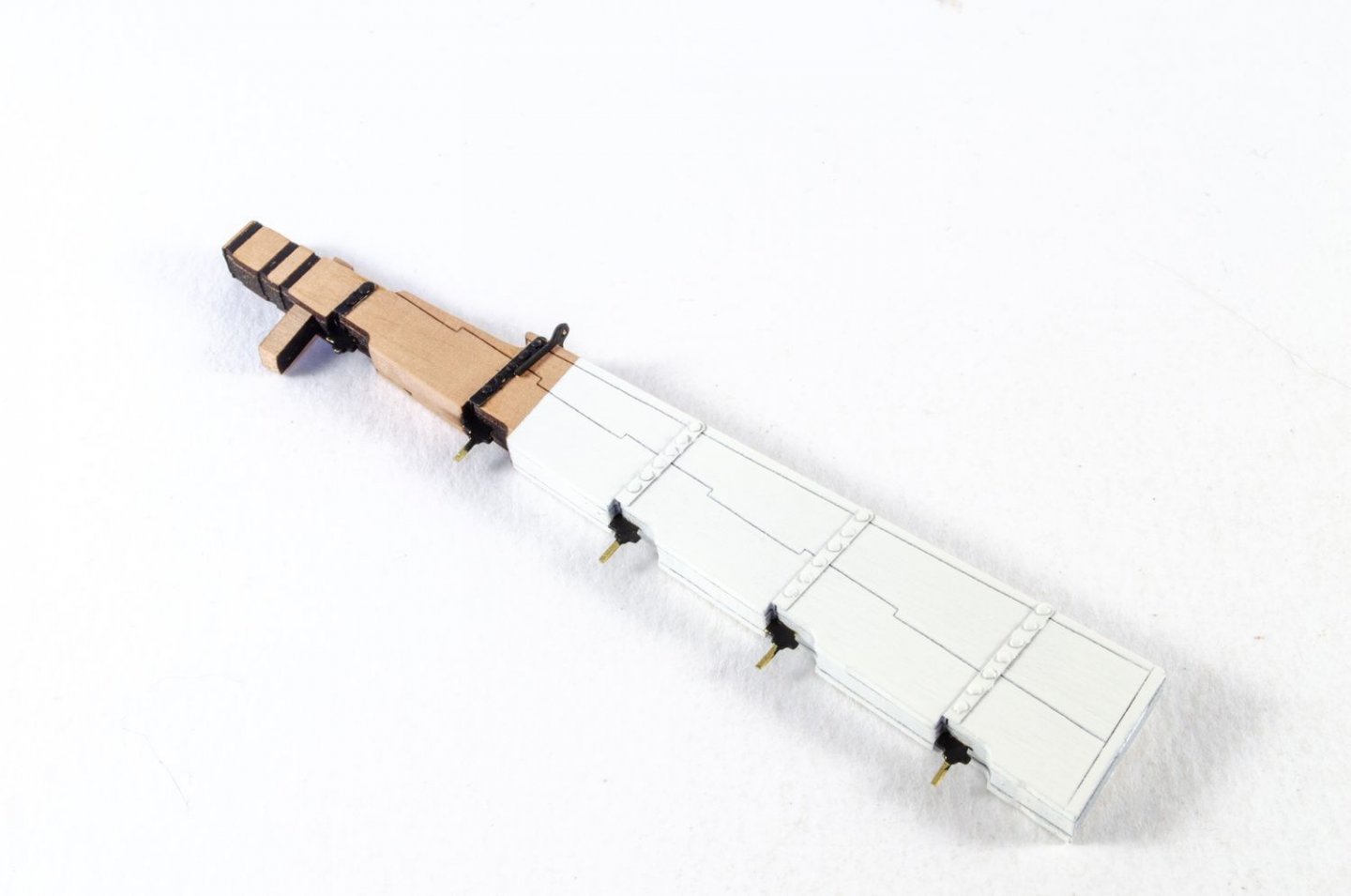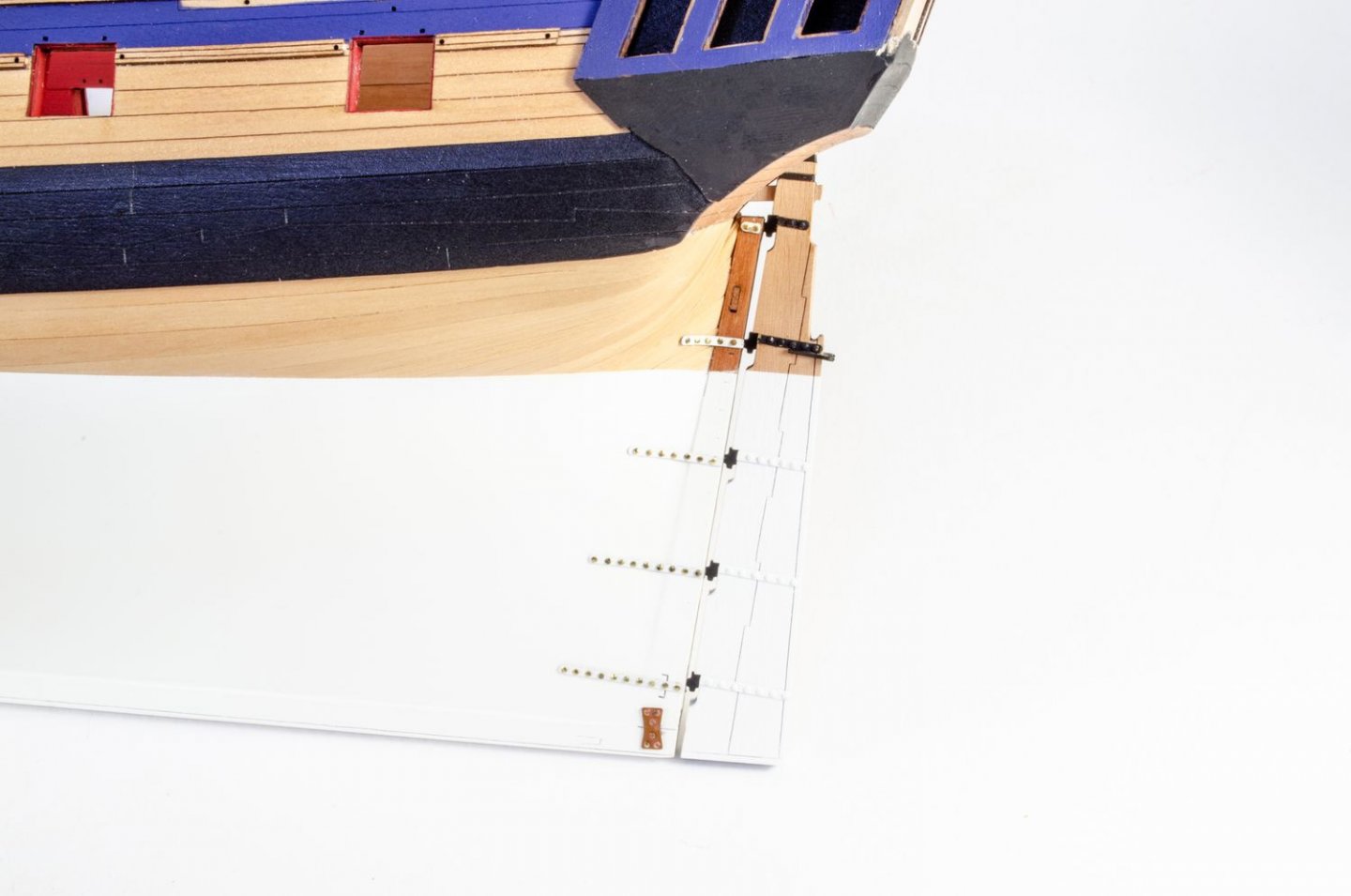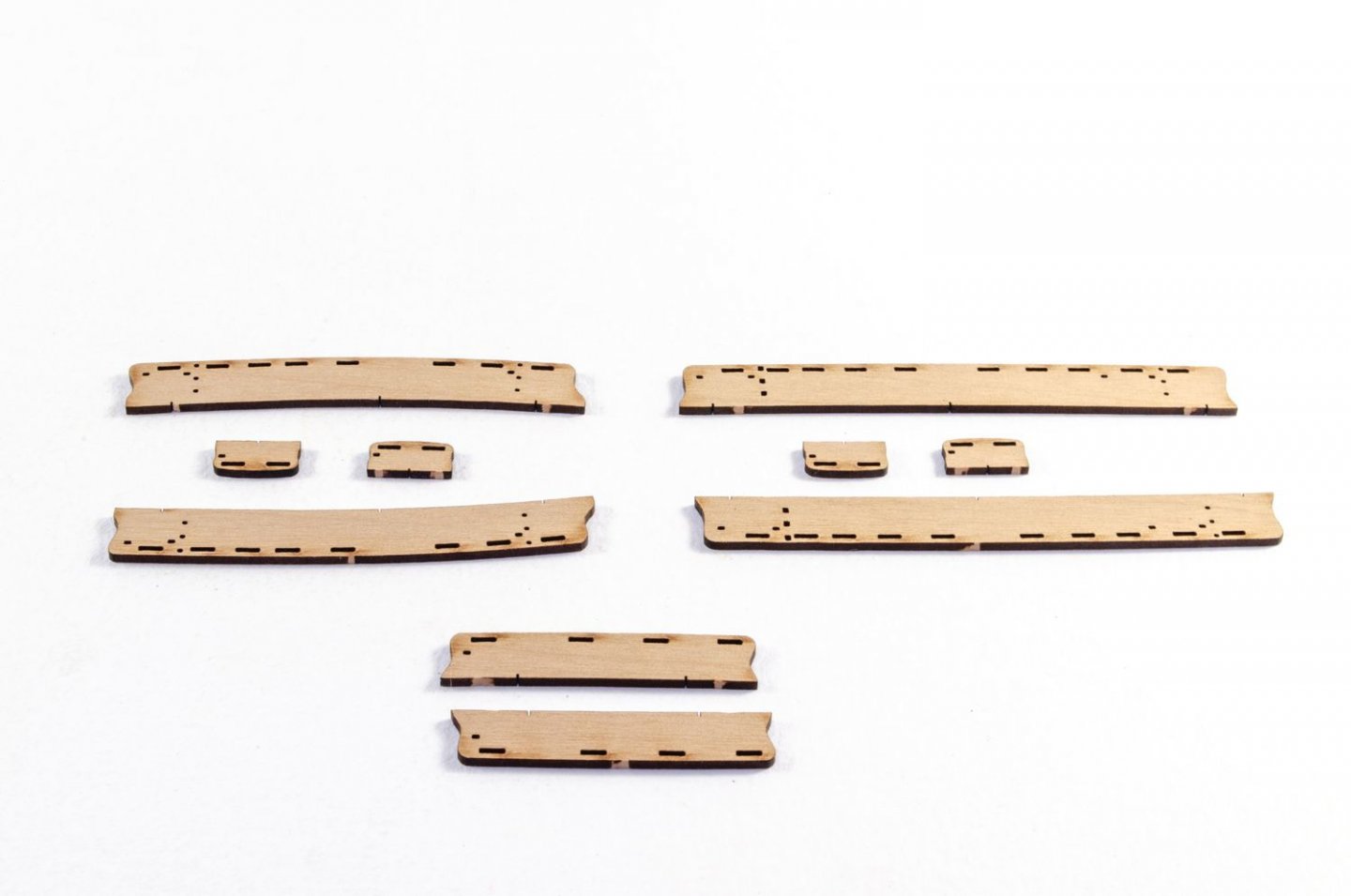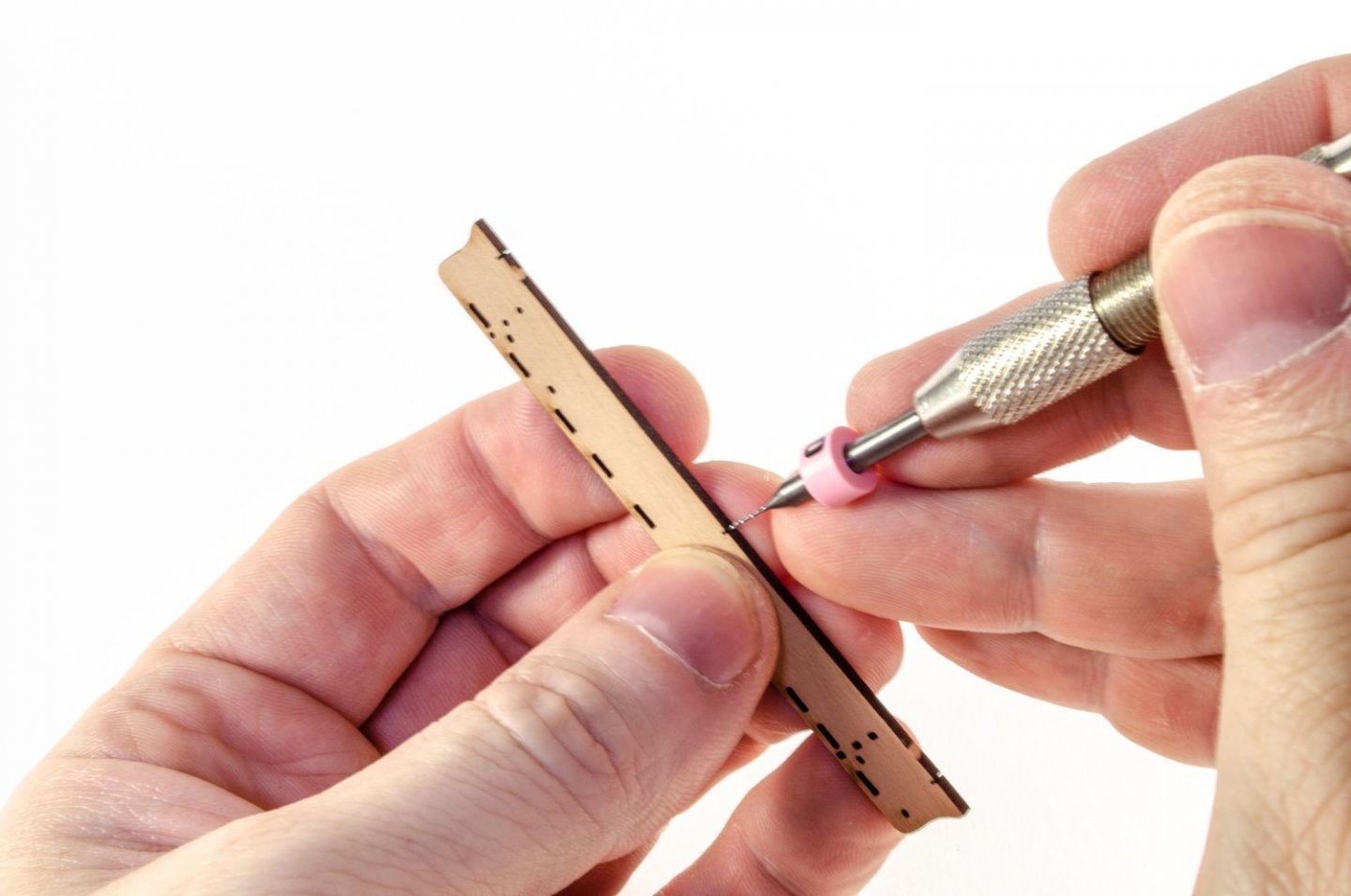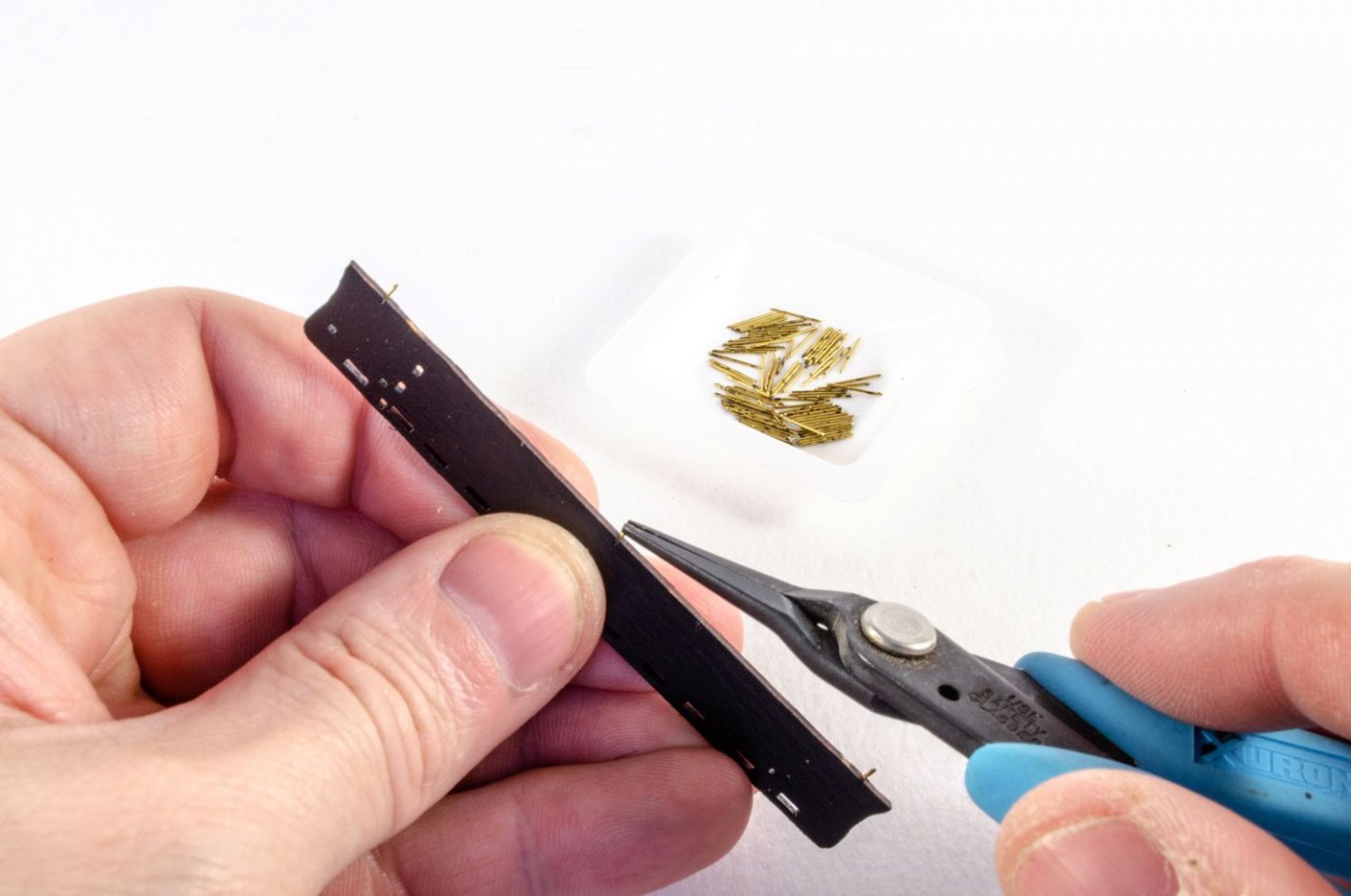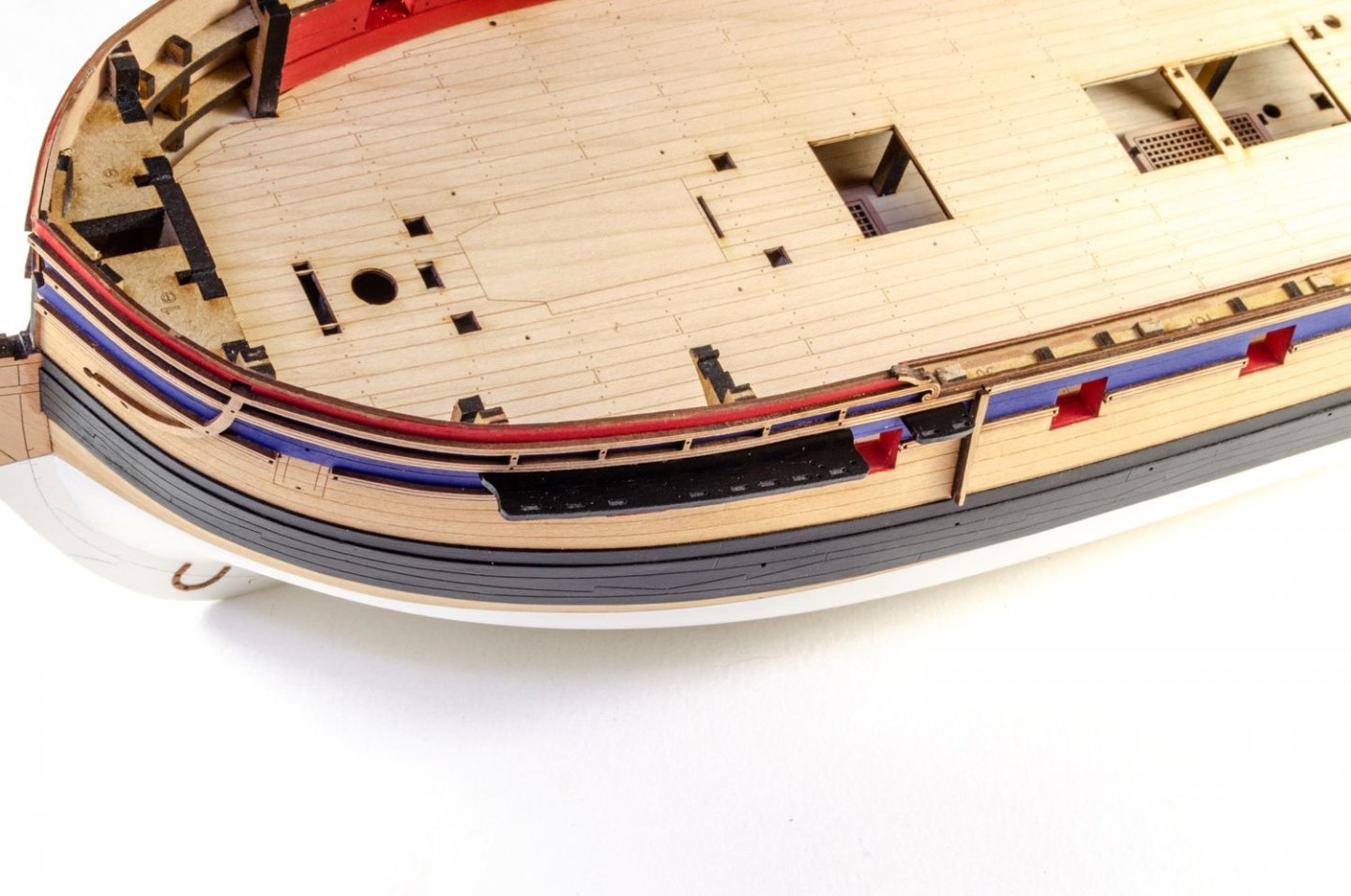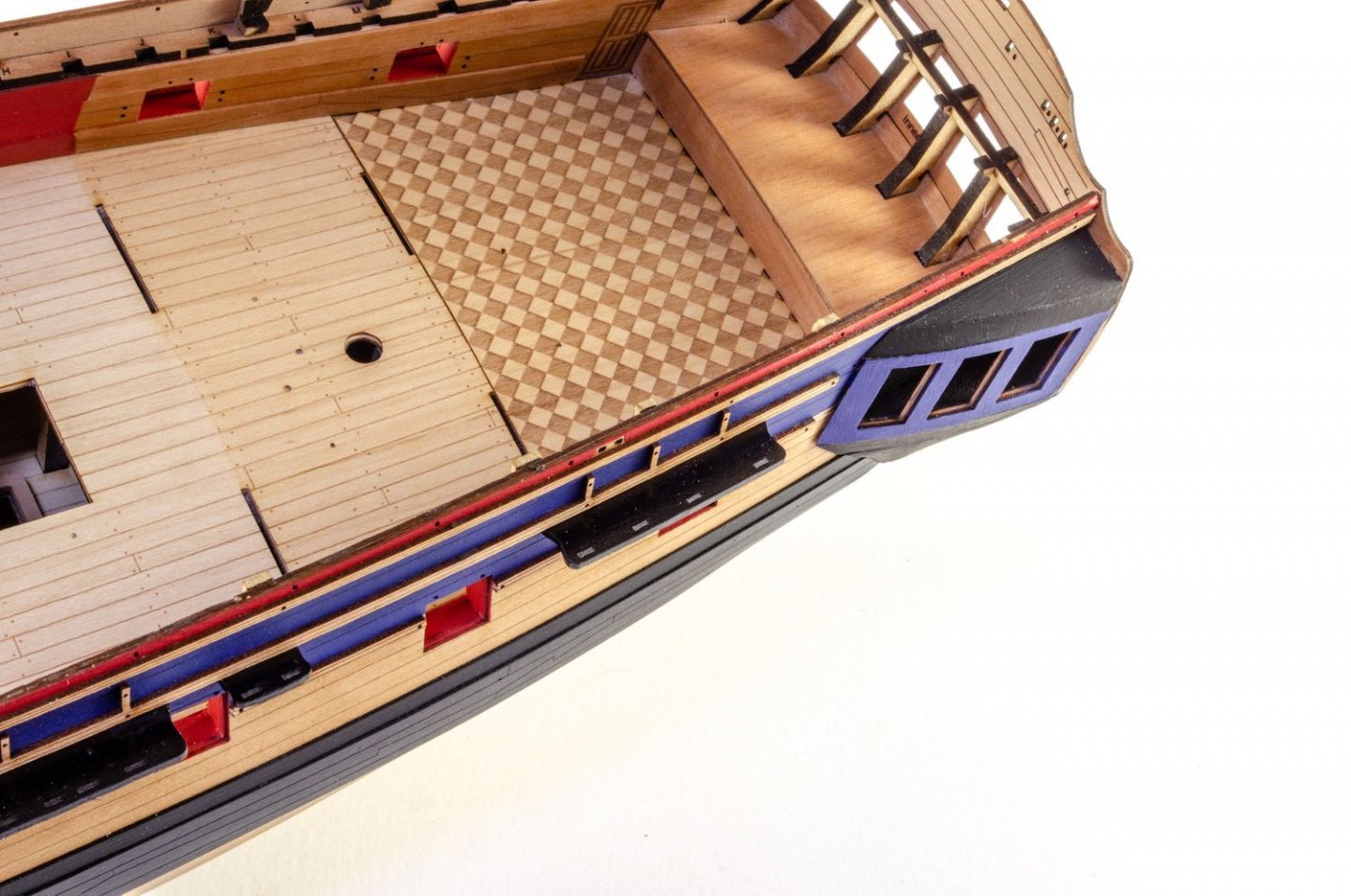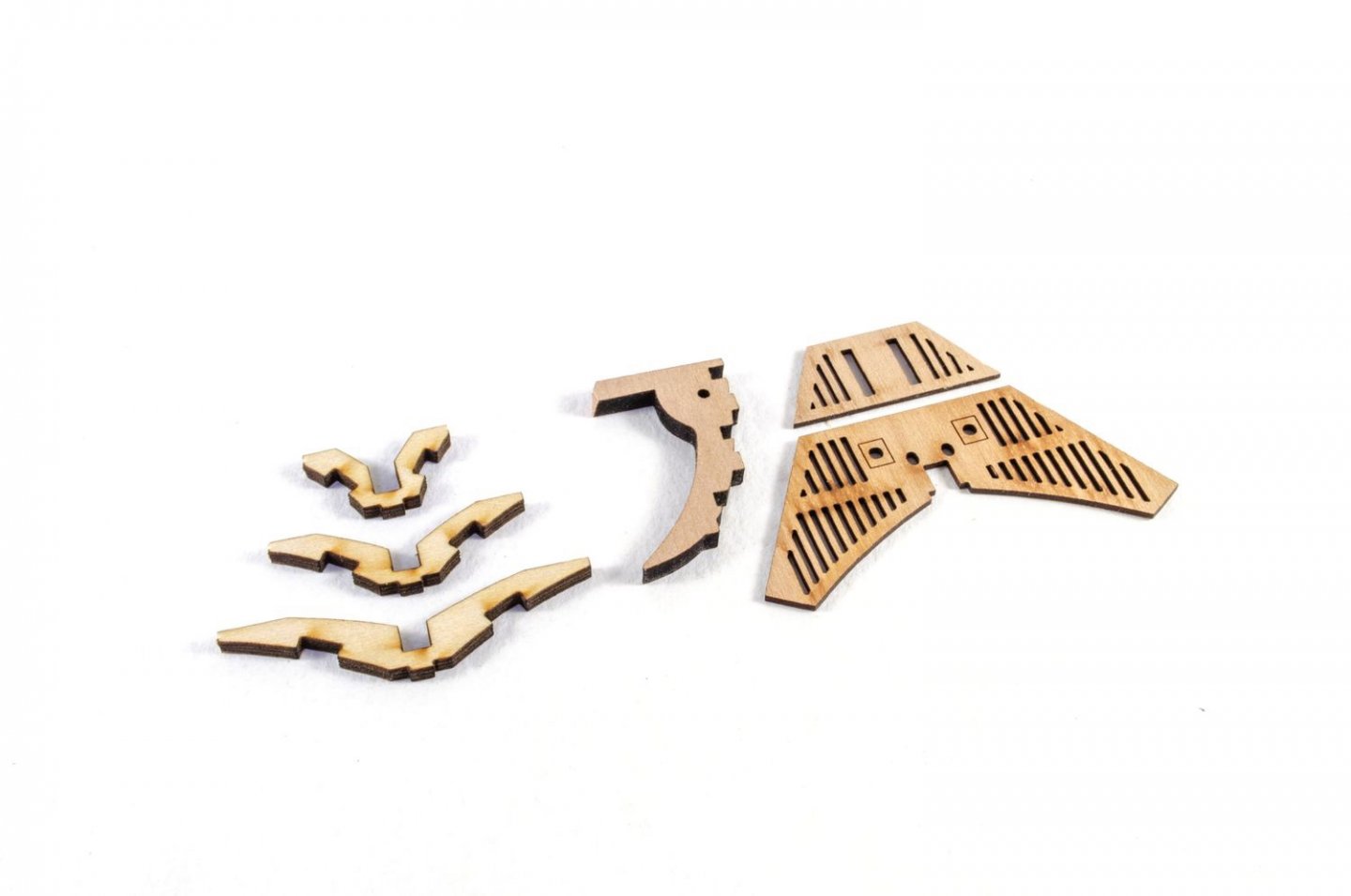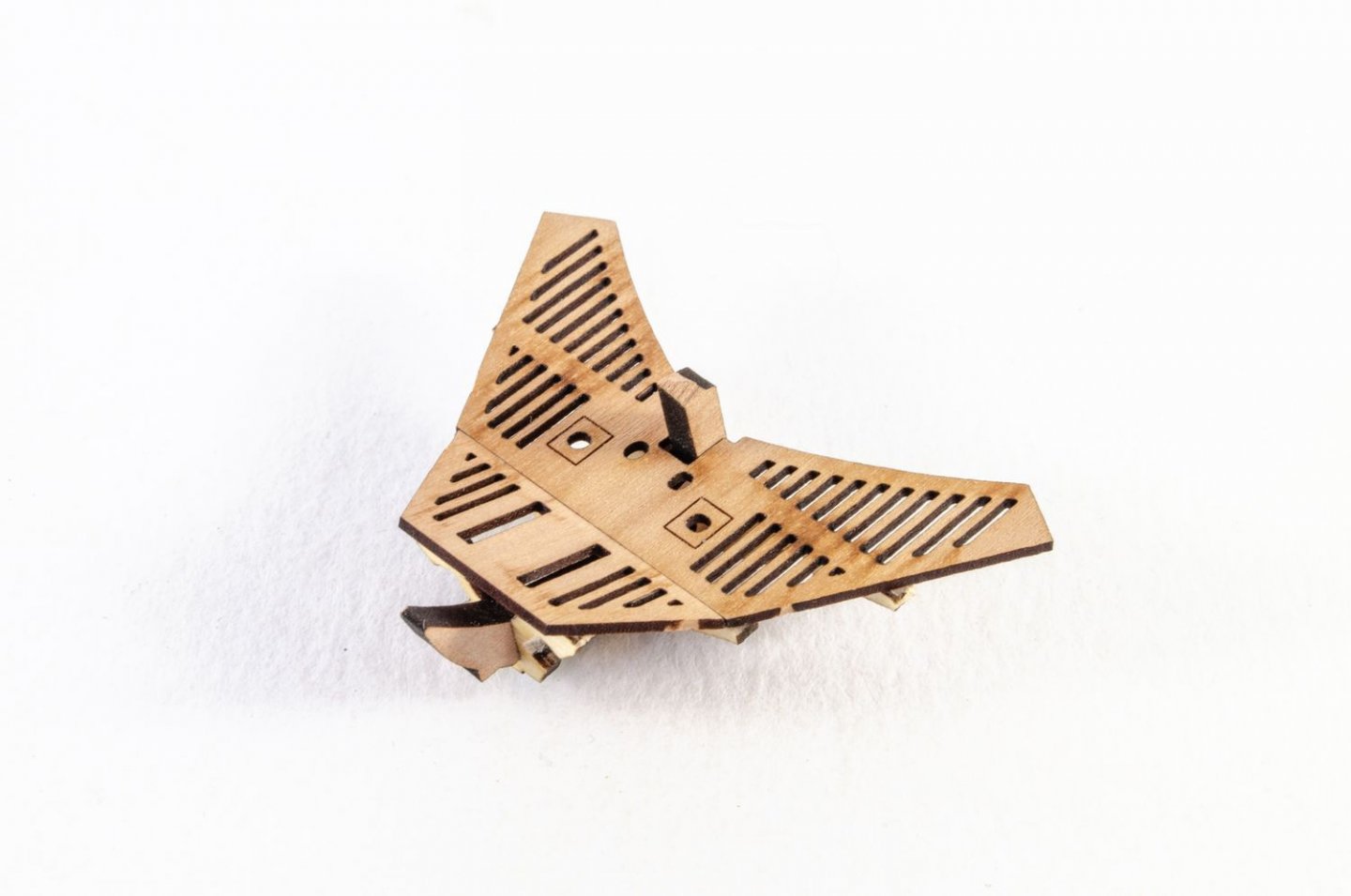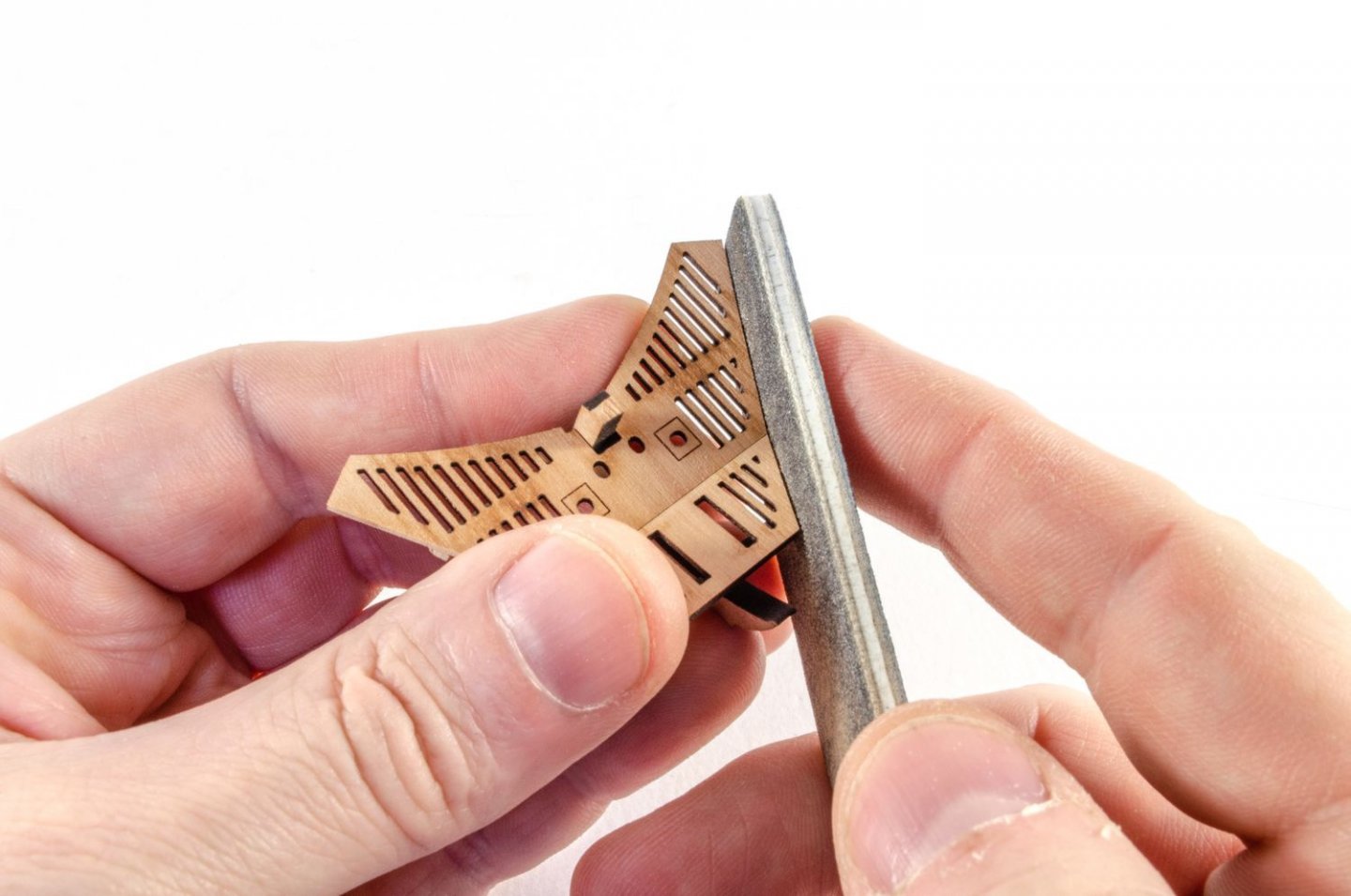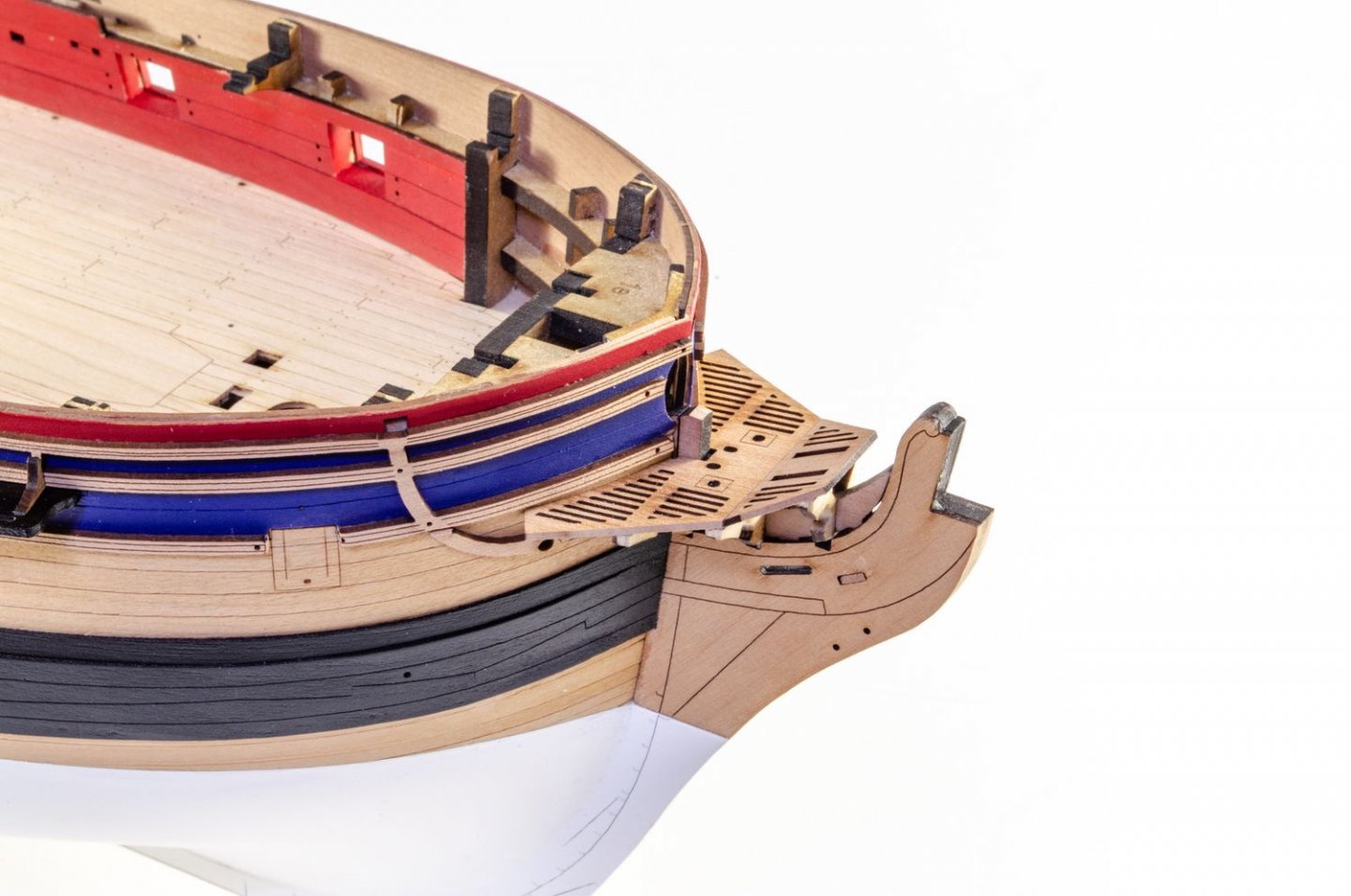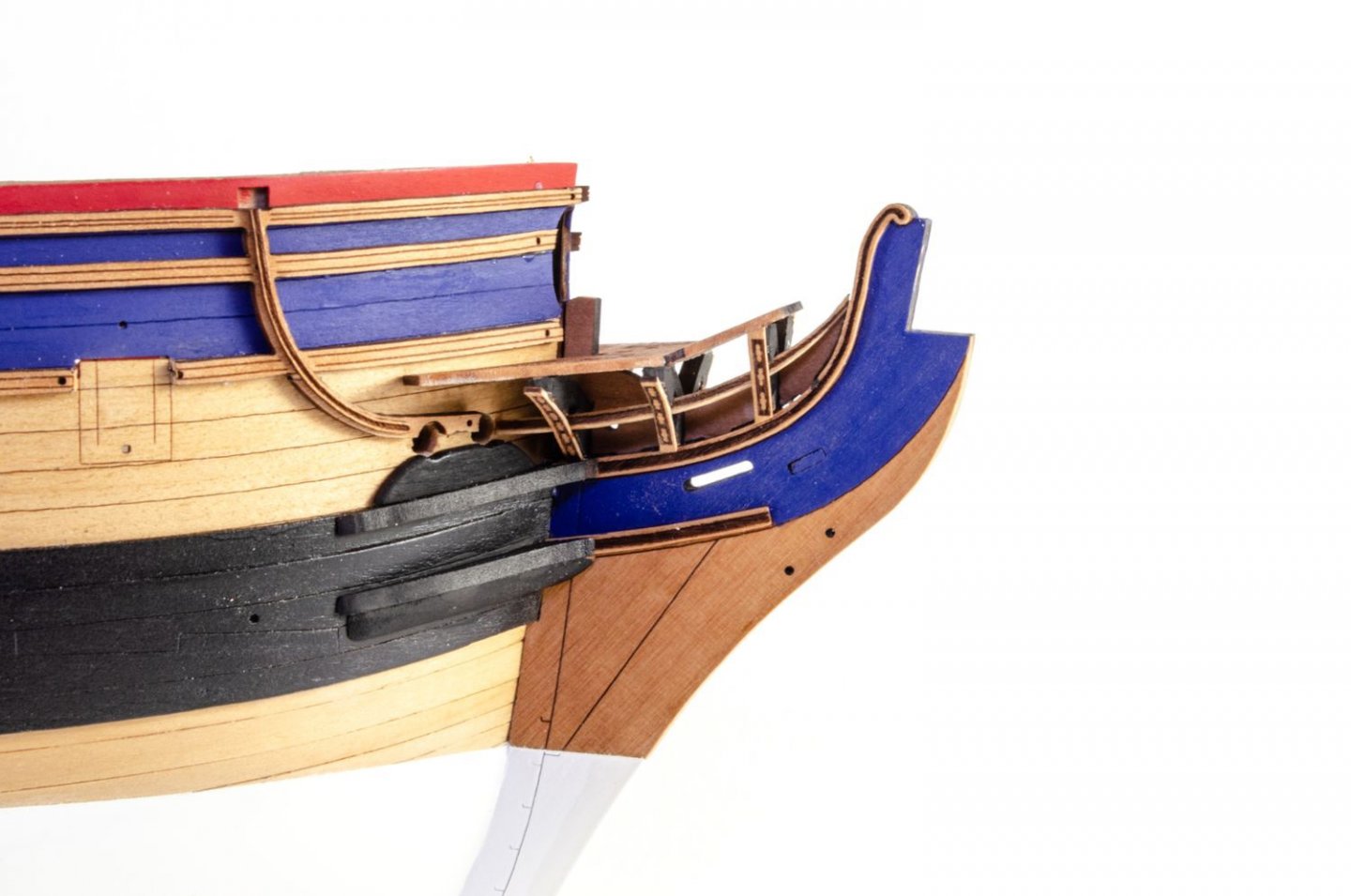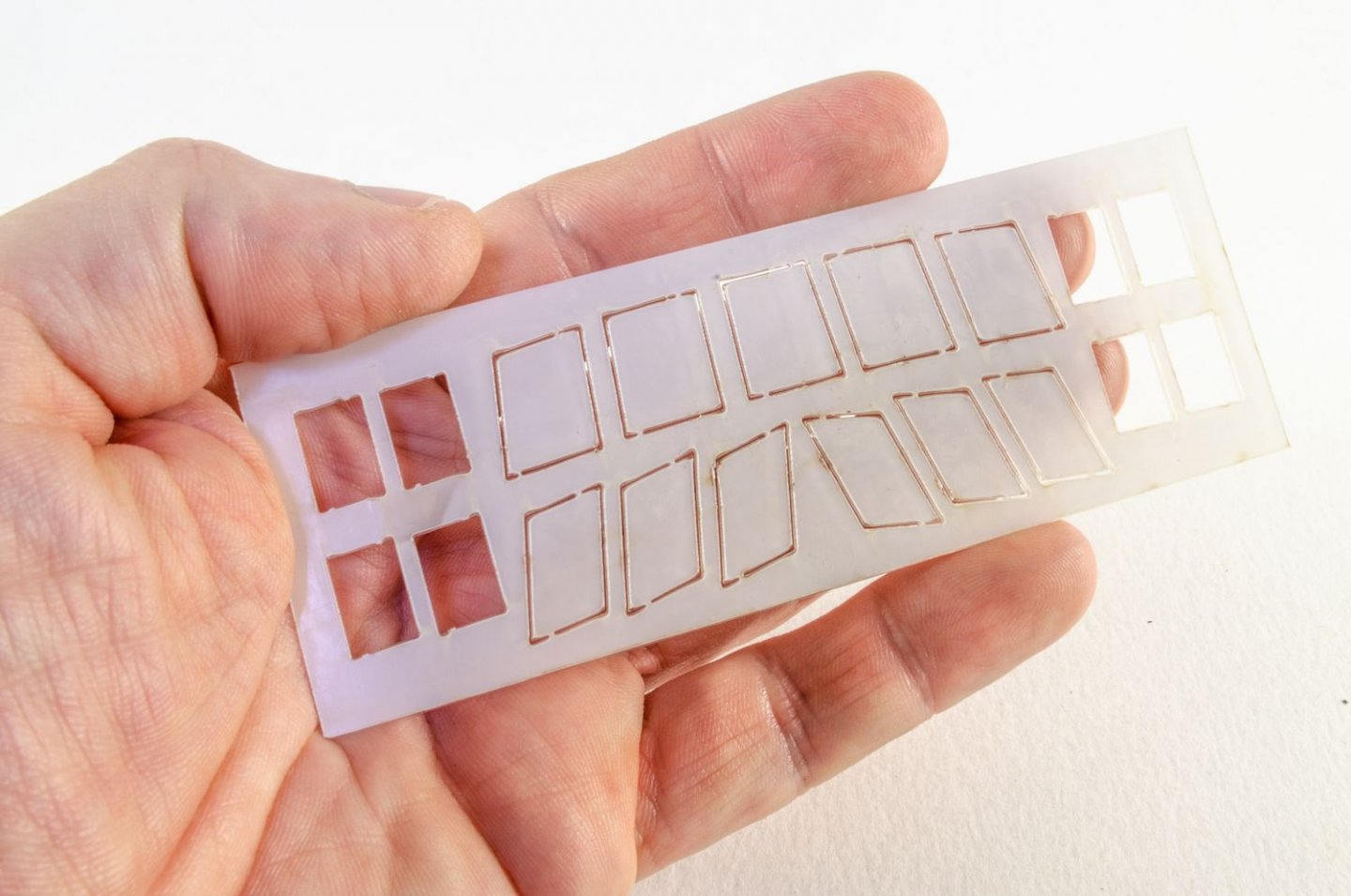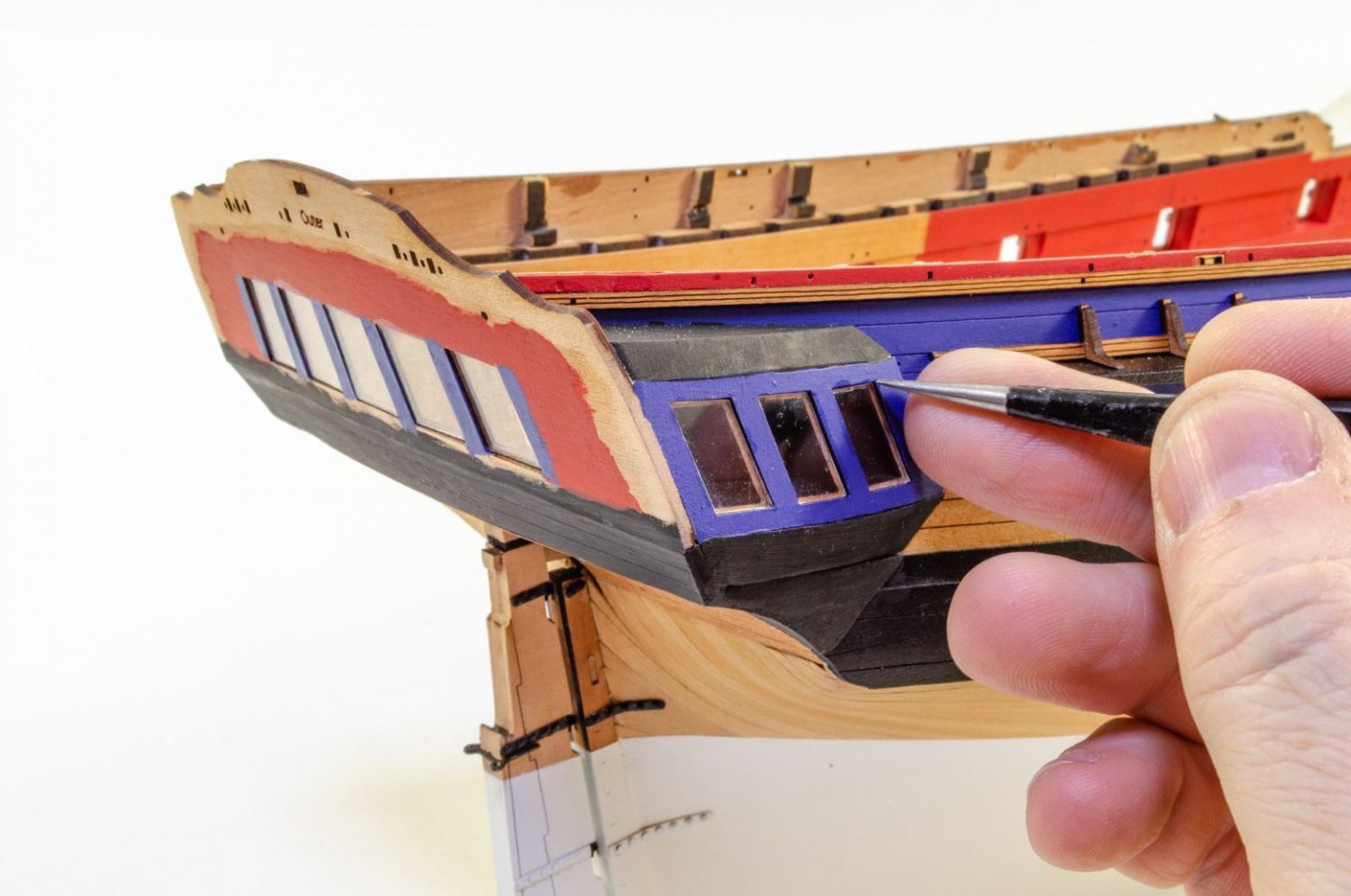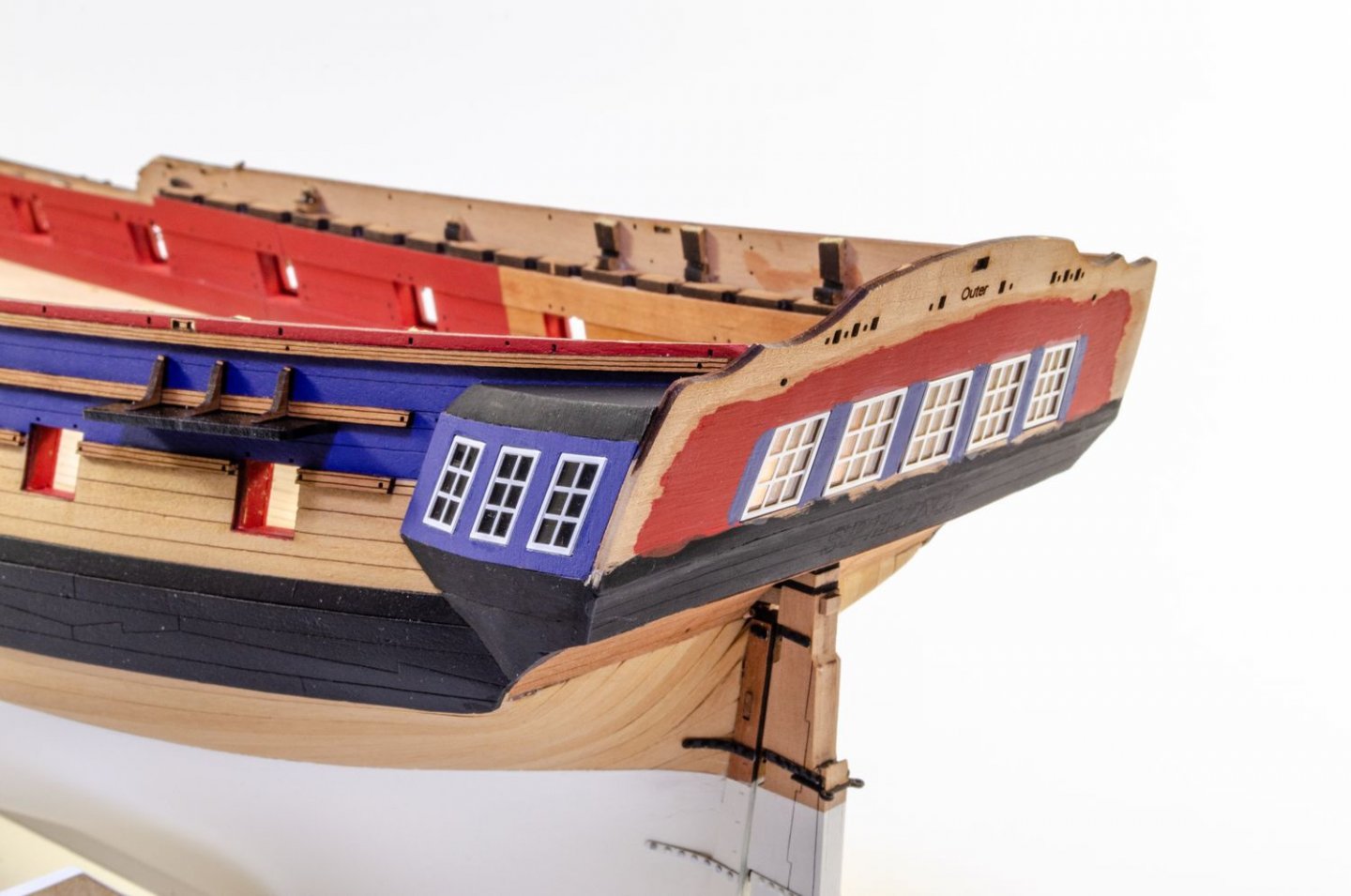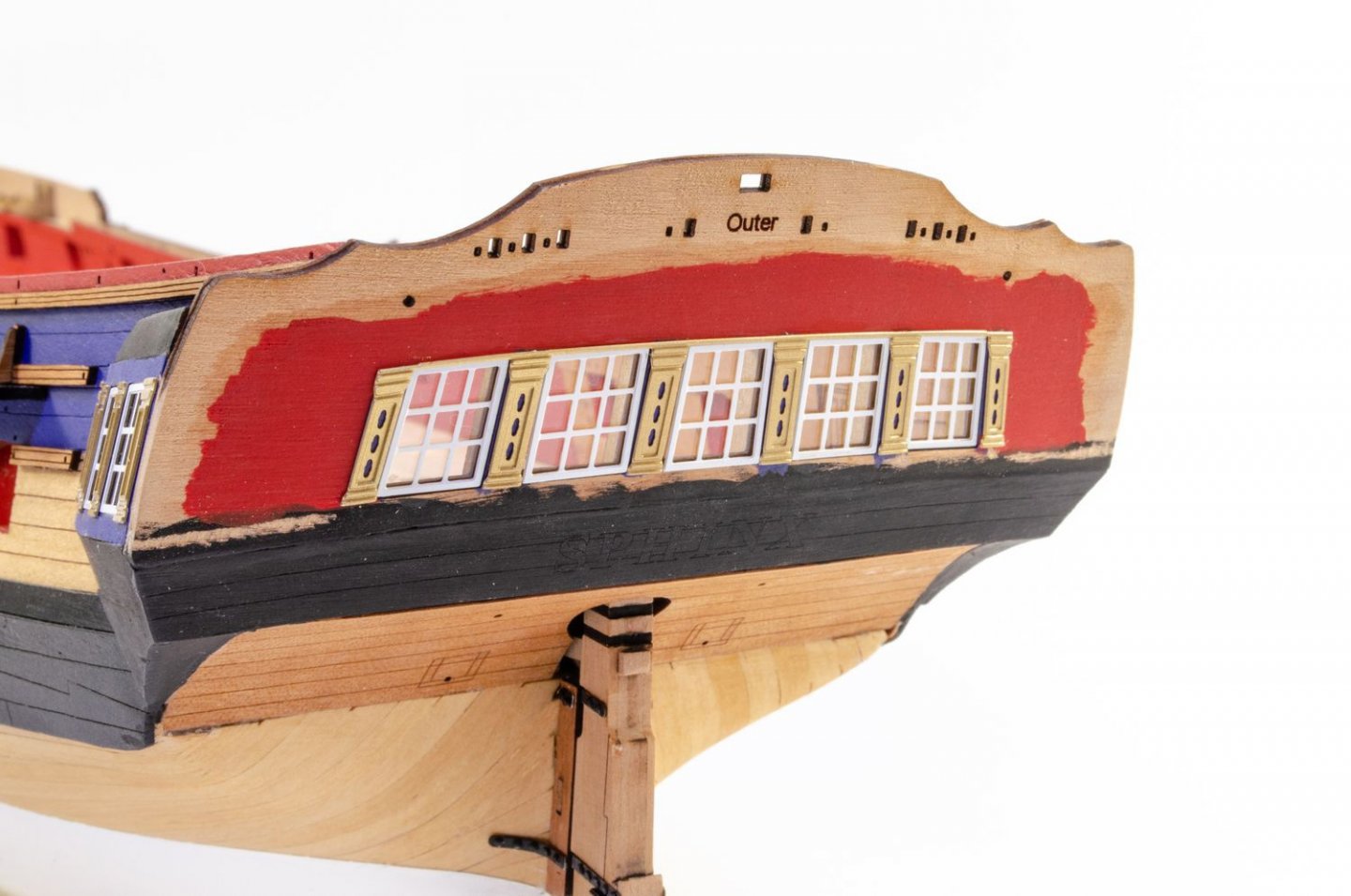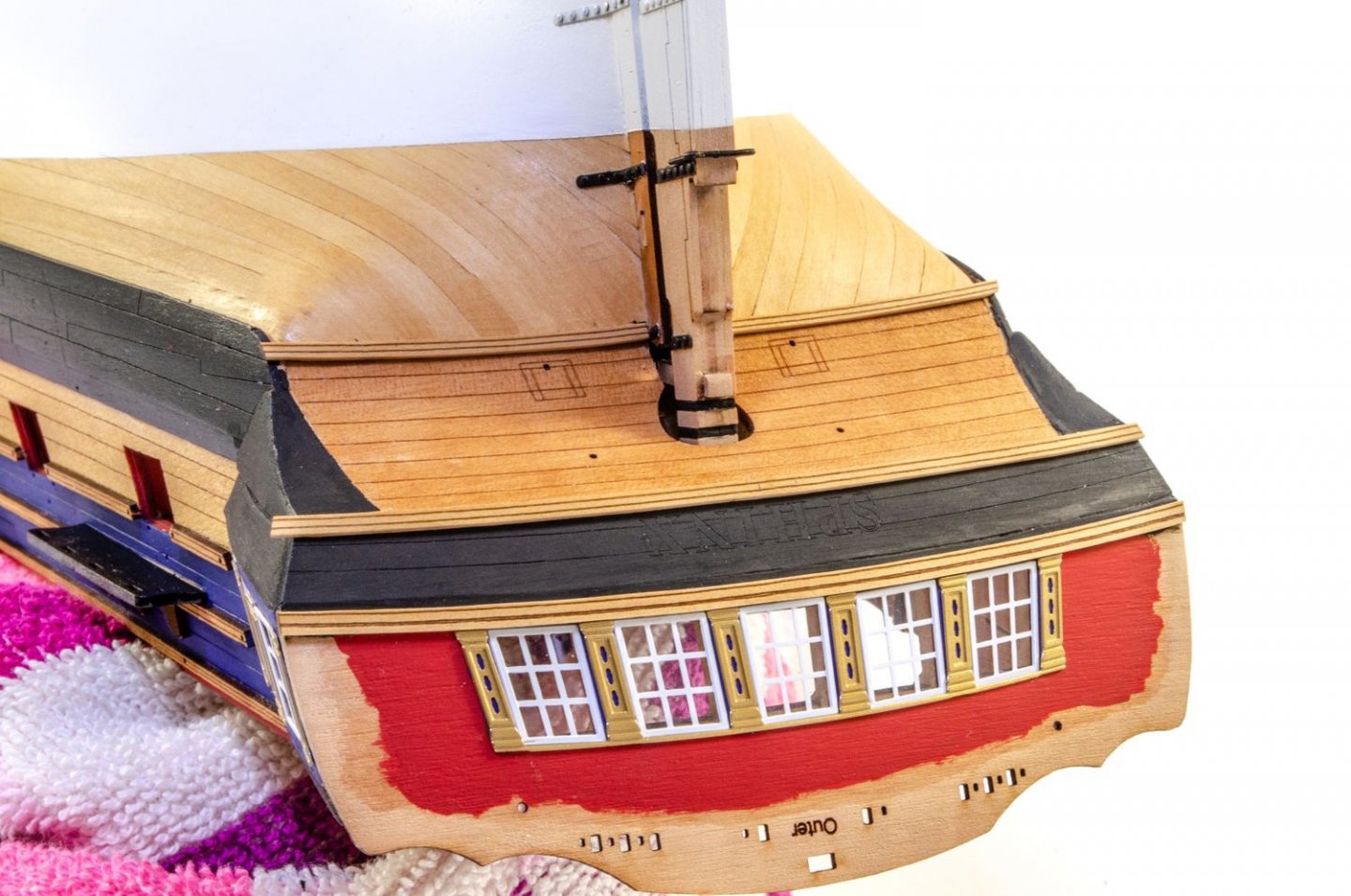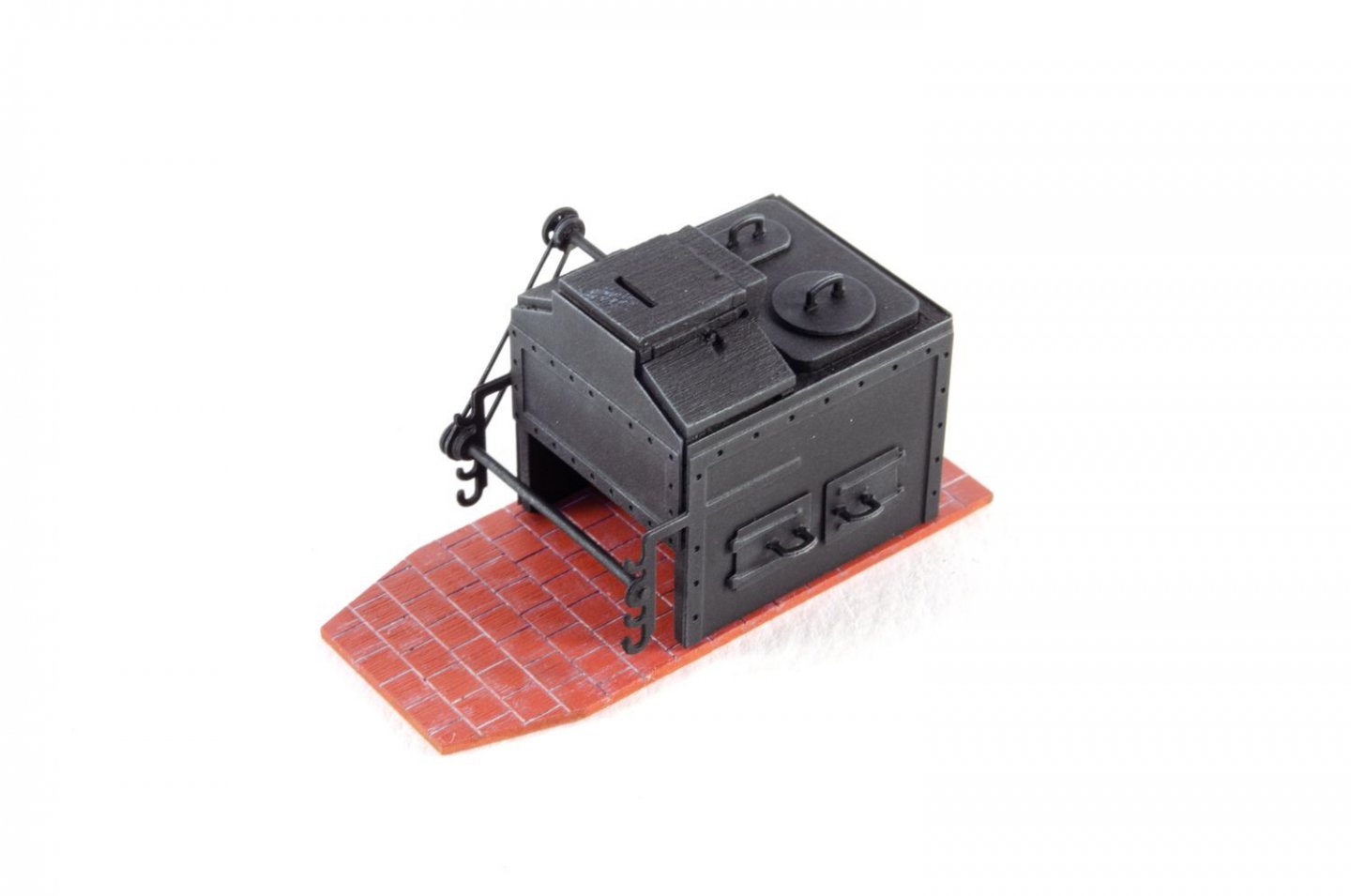-
Posts
6,063 -
Joined
-
Last visited
Content Type
Profiles
Forums
Gallery
Events
Everything posted by James H
-
The Amati rope I have for Victory is actually very good. It's fuzz-free, a good colour and not too stiff.
- 355 replies
-
- vanguard models
- Sphinx
-
(and 1 more)
Tagged with:
-
Those ports are in the cabin areas, so lidded. That's the way I see it too.
- 355 replies
-
- vanguard models
- Sphinx
-
(and 1 more)
Tagged with:
-
Those will be added when the quarterdeck beams and deck itself is installed. I try to limit the number of fragile protrusions when some main hull construction work is still ongoing. But, here are the lids:
- 355 replies
-
- vanguard models
- Sphinx
-
(and 1 more)
Tagged with:
-
This kit is designed so if you have a couple of successful builds under your belt, then you can get a very good result with this. The fishers are great kits though and I definitely recommend trying one.
- 355 replies
-
- vanguard models
- Sphinx
-
(and 1 more)
Tagged with:
-
You'd have possible import duties from anything outside the EU though.
- 355 replies
-
- vanguard models
- Sphinx
-
(and 1 more)
Tagged with:
-
Ok, I promised you an update. I've been working on this pretty intensively over the last couple of weeks so Chris has some pictures for his Model boats magazine advert. When that happens, you know things aren't too far away. I'm thinking this will be an August release, or late July at the earliest. On with the show. The next thing to do was add the frieze work and embellishments. The stern resin decoration was now fitted along with the rest of the stern decor. The closed bow and stern gun ports also had their ironwork and rig added. One task that is never my favourite is adding the chainplates, but these are quite easy and a breeze to fit. A little ironwork now on the deck and inner bulwarks. I actually made up the bulkhead screens quite a while ago, but now they were finished and fitted. Acrylic glazing was added using acrylic varnish to glue into position. On top of these went the window frame parts. Handles and hinges are also fitted. Each screen only needed a quick lick with a sanding stick to enable it to fit into place in the deck slots. And with those in place, this is what we now have... Real early on the build, I made a whole raft of deck fittings in between jobs such as building the frame, fairing, planking etc. This is where spending that time really paid off in pushing this project towards completion. The pictures you see now will miss out lots of stuff showing the individual elements being made, but you'll get the idea. You'll see the deck gradually build up into something a lot busier. First, the coamings for the grates. Then fitting the stairs in... Sphinx is fitted with a chain pump system, and here you see aft stanchions for that in place, along with the main jeer bitts. Then it's the turn of the two chain pumps to be installed. Followed by the main topsail sheet bitts and gallows... Then the forward chain pump handle stanchions are glued into position. Of course, we need a stove for all souls on board, so here's a brand spanking new one, with ornate brick surround. Aft and fore riding bitts are installed, as well as the bowsprit support and the galley doors... The chain pump handles are supplied as photo-etch parts, already shaped so there's no need to bend these into the awkward shapes needed. Each side is in two parts and dead easy to install. These are then painted black. The lower capstan is also fitted. And lastly, it's the turn of the cannon. These really give a sense of how Sphinx will look when complete. And now, some extra photos showing the overall hull and details for you.
- 355 replies
-
- vanguard models
- Sphinx
-
(and 1 more)
Tagged with:
-
Hi Stephen, Thanks for your kind words. I do promise another update later today, and this will be a major one. 😁
- 355 replies
-
- vanguard models
- Sphinx
-
(and 1 more)
Tagged with:
-
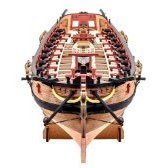
1:8 1965 Shelby Cobra 427 S/C - Agora Models
James H replied to James H's topic in Non-ship/categorised builds
Nice one! I hope you'll log it here. I have two more packs here to build and post but just working on Sphinx at moment. -
Very neat! You should be real proud of that 🥰
- 160 replies
-
- Alert
- vanguard models
-
(and 1 more)
Tagged with:
-

uploading pictures
James H replied to David56's topic in Using the MSW forum - **NO MODELING CONTENT IN THIS SUB-FORUM**
Just upload all your images at once. As you are typing your text and want to insert a photo, just click on it from the uploaded library images below your post. -
This one is moving along quickly. You're putting me to shame.
- 160 replies
-
- Alert
- vanguard models
-
(and 1 more)
Tagged with:
-
La Volage – 1693 (English Edition) ‘A long bark of the western Ocean’ Written and prepared by Jean-Claude Lemineur Published and available from Ancre from €112 (depending on plan scale) This new monograph is concerned with the study of a long bark, the Volage, built in Dunkirk in 1693, in the middle of the War of the Great Alliance by René Levasseur, the first master shipwright who succeeded Hendrick who died in 1689. The Volage was a warship of Louis XIV French Royal Navy. Armed with ten 4-pdrs, with a burthen of 50 tons and a 50-man crew, she was one the biggest of her class with a length of 63 1⁄2 feet. In the Navy records of 1696 to 1702, reported as being good, and even sharp under sail. Really built for privateering, she possessed nautical properties that allowed her to overtake her prey, and therefore, to be highly appreciated by Dunkirk privateers. It was aboard a similar bark that Jean Bart began his talented career as a privateer captain in 1674 during the conflict with the United Provinces of the Low Countries. The Volage participated in the guerrilla warfare initiated by Vauban and from 1693, by the Royal Navy itself against English trading fleets, within the framework of the War of the Great Alliance. Her activities probably continued during the War of Spanish Succession. Ordinarily, she insured the safety of the French coasts, protecting merchant vessels from piratical raiding. Her missions extended to the protection of fishing fleets on the Newfoundland Grand Banks. She was stricken from the Navy list in 1706, hauled ashore and rebuilt at Dieppe, probably for a private ship owner. Adapted and Taken from Ancre’s La Volage information sheet. MSW recently received a pack of three titles from French specialist publisher, Ancre. La Volage is the first of these I will look at. From the outset, this is an impressive set for the collection. Here is an overview of the title: Presentation of the book. The book is presented in a blue fabric-covered 24cm x 31cm box containing a 104-page brochure that includes the sources, history and plates in a reduced scale, along with commentaries and a 16-page colour brochure containing details of rigged and timbered models, as well as the 31 plates at the 1/26th scale necessary to build the structure. Chapters Chapter 1: History and origins of the long bark. The Volage’s own characteristics Chapter 2: The careers of the Dunkirk master shipwrights. List of the barks built from 1671 to 1727 Chapter 3: The use of the sources and determination of the underwater hull lines. Volumetric characteristics of the underwater hull Notes and decoration and paint of the shipwright. Chapter 4: Study of the rigging. Notes on the masts, sails and blocks Chapter 5: Commentaries on the 31 reduced plates Chapter 6: Routing of the rigging lines List of the plates Plate N° 1 Schematic elevation and body plans Plate N° 2 Schematic plan view Plate N° 3 Construction of the stern Plate N° 4 Construction of the hawse pieces Plate N° 5 Midship frame and forward frames 1 to 4 Plate N° 6-11 Frames 6 – 11 Plate N° 12 Timbered elevation Plate N° 13 Lengthwise section Plate N° 14 - 16 Cross sections at some frames Plate N° 17 Plans of accommodation Plate N° 18 Plan of the bilge Plate N° 19 Plan of the empty deck Plate N° 20 Plan of the deck with furniture Plate N° 21 Plan of the deck and castles Plate N° 22 Plan of the finished deck and castles Plate N° 23 Bare elevation Plate N° 24 Dressed elevation Plate N° 25 Front view of the stern Plate N° 26 Construction of the head and the ship's boat Plate N° 27 Furniture and artillery Plate N° 28 Masts Plate N° 29-30 Sails and boat's frames Plate N° 31 The Volage under sail What is a Monograph? If you’ve never seen a Monograph before, the idea is that you practically receive as much information about a subject as is possible to need to be able to build a specific vessel, plus having the historical content to hand to digest too. They really are a delight, even if you are only a collector, and without the ability or means to translate the information into a finished model ship. If you do want to look at creating something from the sheer mass of information given in La Volage, your finished hull will have these dimensions, scale-dependent: 1:24 Length: 100cm (fully rigged 120cm) Width: 28cm (fully rigged 40cm) Height: 30cm (fully rigged 110cm) 1:36 Length: 67cm (fully rigged 80cm) Width: 16cm (fully rigged 27cm) Height: 20cm (fully rigged 74cm) 1:48 Length: 50cm (fully rigged 60cm) Width: 14cm (fully rigged 20cm) Height: 15cm (fully rigged 55cm) La Volage is a little over A4 in size when it comes to the attractive fabric strengthened box in which it’s supplied, and there is quite a bit off weight behind it with the 104-page perfect bound book, printed on extremely high-quality paper and with nice, clear illustration and layout. The 31 sheets of plans (known as plates) are large in this scale, and all are superbly printed with fine lines that measurements can be directly taken from as a comparison. One could ponder for many hours, weeks and months over the minutiae of detail supplied. A 16-page colour brochure is also included which shows you what La Volage will look like when built, in various stages of construction. Remember of course, that this type of publication will present an actual representation of the vessel that will translate directly into what we call a POF model, but of course with some skills, the lines can be utilised to design your own POB project. Conclusion Ancre’s monographs really never disappoint in their sheer depth of information, presentation, production quality and of course, subject matter. La Volage is no exception. This really is an exquisite set and with me only ever really having built British ships, it’s extremely interesting to see how the French are in comparison with layout, style, shape etc. La Volage is most certainly a very beautiful barque and one which is less of a lifetime project than something like the Saint Phillipe which I reviewed a couple of years ago. A much more manageable size in 1:48, and even in 1:24 if you have an average size workshop. I certainly won’t comment on display space needed afterwards! Having the colour booklet with a completed model will also not just give inspiration but gives you a rough idea of what you need to be aiming for. The book not only grounds you in the history surrounding the vessel and its origins and protagonists, but also into the construction of what was undoubtedly a beautiful ship. Amazing to think that you can actually build a complete, miniature ship from this set, down to every smallest detail. La Volage – 1693 is available in English, French and Italian languages, and plans are available in 1:24, 1:36, and 1:48 scales. Check out the options on the Ancre website. My thanks to Didier Berti of Ancre, for sending this Monograph out for review here on Model Ship World. To purchase directly, click the link at the top of the article.
-
For polyurethane varnish, I've used several brands, but currently using Rustins matt varnish, which I've been diluting 50:50 with white spirit. I use aerosols for big stuff like wales and lower hulls, with Plastikote being my favourite generally, but I do like Games Workshop Chaos Black as a spray as it covers so easily. When painting smaller areas, I like Vallejo acrylics that I usually just add a tiny amount of water to so it flows easily. I also use Humbrol enamels for some areas, like blue and ochre, mixed 50:50 with white spirit. Tamiya acrylics also get used, mixed 50:50 with Mr Levelling Thinner. I do sometimes use lacquers too, such as the Xtreme Metal from Vallejo. Those are pre-mixed. Examples are the copper used on horseshoes, depth marks and fishplates etc. That stuff is for airbrushing. Of course, there's the alcohol-based Vallejo Liquid Gold, thinned with a drop of isopropyl. In short, I use many different brands and types from lacquers, acrylic lacquers, enamel, acrylics etc. Generally, whatever I have that I know will do the job.
- 355 replies
-
- vanguard models
- Sphinx
-
(and 1 more)
Tagged with:
-
Take a look a little up my build log on this page 😆
- 355 replies
-
- vanguard models
- Sphinx
-
(and 1 more)
Tagged with:
-
Ok, I wasn't going to publish this picture until the next update with the proper studio photos, but here you go!
- 355 replies
-
- vanguard models
- Sphinx
-
(and 1 more)
Tagged with:
-
Gold is notoriously bad for brush painting. The results are usually crap. The stuff I use (recommended by Chris) really is amazing. You can get a dipped gold effect with a brush, as long as you shake well and just add a couple drops isopropyl to a small amount of paint. It's a revelation for me.
- 355 replies
-
- vanguard models
- Sphinx
-
(and 1 more)
Tagged with:
-
There is a list price I have, but it's not finalised yet so will wait until Chris confirms it. There are over 30 sheets of laser cut material with this one, as well as 5 sheets of photo-etch, laser cut acetate windows, resin castings, 3D-printed figurehead and cannon and of course those three boats that sit atop it too. I can guarantee with the manual (currently around 600 photos), it'll be a whopping and heavy box!
- 355 replies
-
- vanguard models
- Sphinx
-
(and 1 more)
Tagged with:
-
Artscale have now released some new blades for their razor saw, and these should prove very useful. Got to love the one called 'BATMAN'! 😆 I can't imagine why it's called that! These will be perfect for cutting around circular materials, or even adding panel lines too. The 'OCTOPUS' is perfect for swiping cuts with the shape of the longer edge, whilst the underside presents all sorts of possibilities. If you have the saw, then these are worth getting, and if you don't these are a perfect excuse to go shop one.
-
The laser cutting on the waterline marker is very fine and really needs cutting though from both sides on the tabs to make sure you don't break anything. Just takes a little extra time. Are you trying an acrylic filler with a little wood glue in, diluted of course? I apply this before any paint, and rub back and fill again. There's always more filler needed when the paint goes on though....never any luck with me in avoiding that 😆
- 160 replies
-
- Alert
- vanguard models
-
(and 1 more)
Tagged with:
-
Most definitely! I could barely stand, the morning after 🙃😆
- 355 replies
-
- vanguard models
- Sphinx
-
(and 1 more)
Tagged with:
-
Time for another small update. I'm currently working on the stern and galleries of Sphinx, so I can show you what I've done up to that point. The rudder is built from a 3mm pear core, with 1mm engraved pear facings on either side. This is first glued up and then the rudder pintle straps are fitted. I use cut off pins to insert here so I have the domed head on either side. Laser slots in the timber give the locations for the 'hinges' that hang the rudder to the stern post. The spectacle plate is then added and the upper straps etc. painted in black. The rudder brace straps are then glued to the hull after hanging the rudder. The pins are also then painted white and the upper straps painted black (not shown here). Onto the channels. All of these are also engraved with a position which needs to be drilled to locate the support pins. Those pins match up with holes that are laser cut into the hull, in an engraved area which matches the channel. A small break now to work on the bow area. The v-brackets and bow gratings are assembled on the hull without gluing to the hull. The assembly is then removed and finished off before finally gluing onto the hull. The various bow rails are now added, including the hawse, bolster etc. All of this will be unified later under a coat of matt poly varnish. Some shaping of these parts will need two be done, but they're designed to have extra timber to allow for any hull variations the modeller may have introduced inadvertently. Back to the stern again now. The acrylic windows are now removed, gently filed and fitted to the stern and galleries using acrylic varnish as a glue to hold them. I didn't want to use CA due to potential fogging. I know there are odourless CA types, but I just didn't have any to hand 🙃 Once dry, the white window frames were fitted using more acrylic varnish as glue. The golden pillars between the windows were now fitted. For these, I prefer CA gel as it gives a moment or so to manipulate stuff. The various rails are now fitted... Whilst waiting for things to set and cure, I painted the stern decoration. This was first primed in Tamiya fine white primer, and then airbrushed with Humbrol Matt 25 Blue. Vallejo Liquid Gold was then diluted with a few drops of isopropyl alcohol and brushed onto the stern with a size 0000 brush. The whole lot was then varnished to protect it. Lastly for this update, I completed the stove. After a coat of primer, Tamiya Flat Black was airbrushed over it, and then steel pigments applied to it before being sealed in matt varnish. The bricks were painted in MRP RAF Roundel Red, sealed, and then a light grey panel line wash applied. until next time...
- 355 replies
-
- vanguard models
- Sphinx
-
(and 1 more)
Tagged with:
About us
Modelshipworld - Advancing Ship Modeling through Research
SSL Secured
Your security is important for us so this Website is SSL-Secured
NRG Mailing Address
Nautical Research Guild
237 South Lincoln Street
Westmont IL, 60559-1917
Model Ship World ® and the MSW logo are Registered Trademarks, and belong to the Nautical Research Guild (United States Patent and Trademark Office: No. 6,929,264 & No. 6,929,274, registered Dec. 20, 2022)
Helpful Links
About the NRG
If you enjoy building ship models that are historically accurate as well as beautiful, then The Nautical Research Guild (NRG) is just right for you.
The Guild is a non-profit educational organization whose mission is to “Advance Ship Modeling Through Research”. We provide support to our members in their efforts to raise the quality of their model ships.
The Nautical Research Guild has published our world-renowned quarterly magazine, The Nautical Research Journal, since 1955. The pages of the Journal are full of articles by accomplished ship modelers who show you how they create those exquisite details on their models, and by maritime historians who show you the correct details to build. The Journal is available in both print and digital editions. Go to the NRG web site (www.thenrg.org) to download a complimentary digital copy of the Journal. The NRG also publishes plan sets, books and compilations of back issues of the Journal and the former Ships in Scale and Model Ship Builder magazines.

